








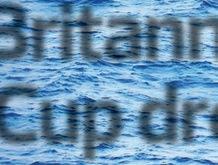
Kiwis end Britannia's America's Cup dream
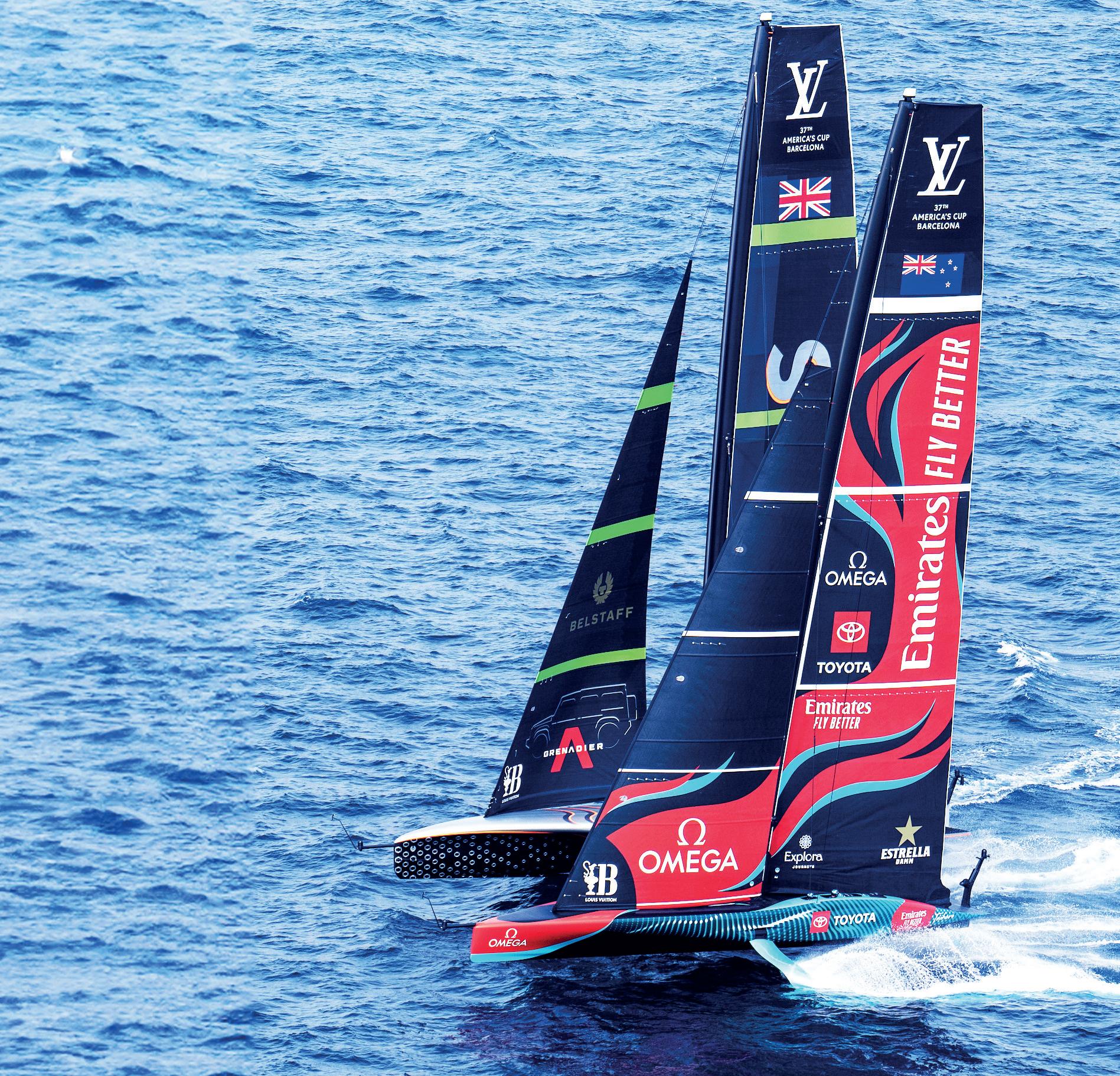

JEANNEAU SUN ODYSSEY 350
Stylish family cruiser on test


UTTERLY MOOR – ISH





Discovering the delights of cruising Morocco
VENDÉE GLOBE RACE Who will win the ultimate challenge?
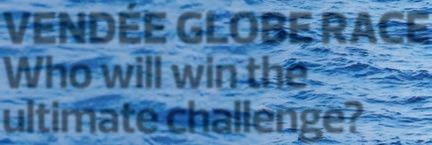

RACE TO THE SUN Caribbean racing season preview
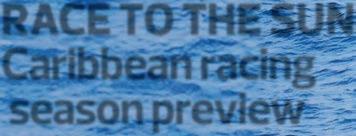
A WINTER'S TALE
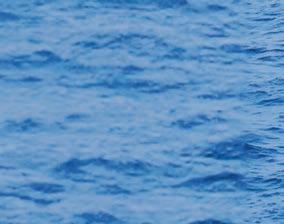




The joy of an o season cruise
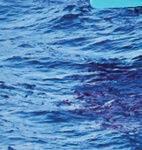



With our original proven multicolour system we now launch the latest in synthetic teak decking technology.
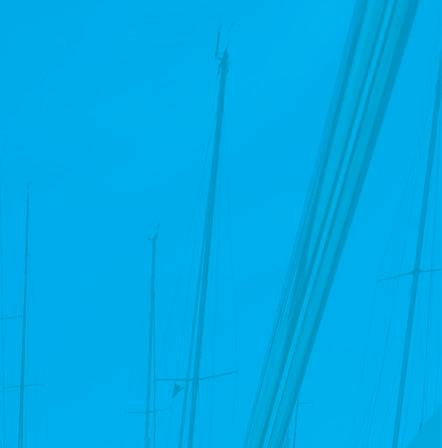
Come and see for yourself on Stand 12.822 at METSTRADE Amsterdam
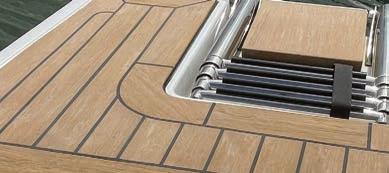



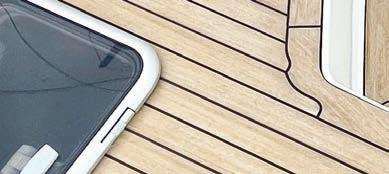
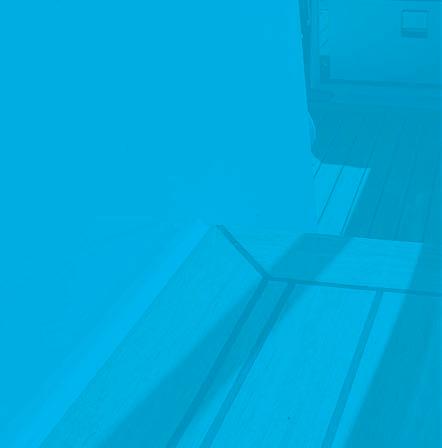
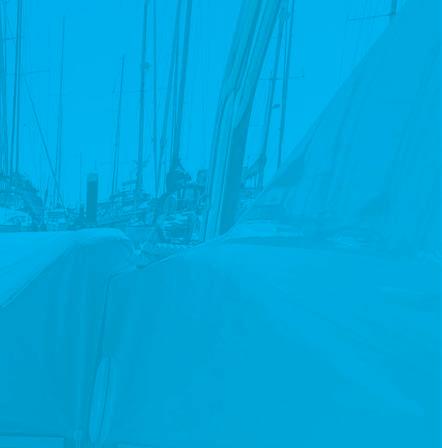

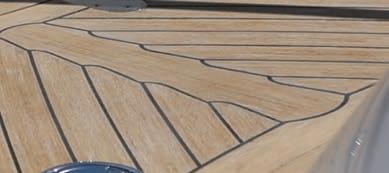
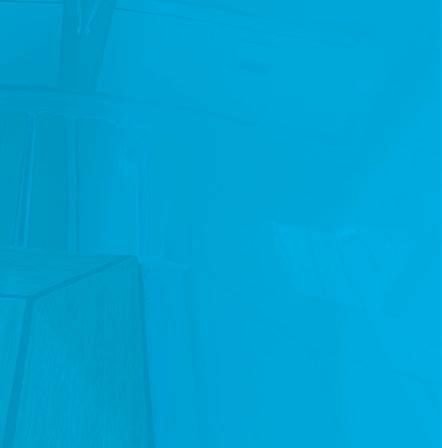

The EVO Decking mission was to create the most authentic looking decking solution available and indistinguishable from teak.


EVO Decking have chosen the best pvc formula that provides longevity year after year. We boast the most comprehensive and realistic colour range on the market. EVO Decking is one of the world’s market leaders in the synthetic decking industry having many unique features which position it ahead of the competition. Our product is low maintenance and high quality. As you would expect it has excellent non-slip qualities, even when wet, and is UV stabilised.
EVO Decking is an obvious choice for those seeking a high quality synthetic teak decking product. You can be condent that EVO Decking is the right choice for you.


6 News
14 Paul Heiney
16 Andy Rice
24 Tom Cunliffe
82 Jess Lloyd-Mostyn
18 Winter sailing
Murray Walker narates a midwinter solo voyage from North Wales to Ireland
28 America’s Cup
A meteorologist’s view of the 37th America’s Cup
32 North Morocco
Gabriette de Koster provides cruising tips
36 Vendee Globe preview
The ultimate round the world race returnswe look at the contenders
50 Caribbean Racing Season
A look forward to the regattas scheduled for the winter season across the Atlantic
54 Charter
Caribbean race charter ideas
56 Interview: Pip Hare
We catch up with a solo racing veteran ahead of the Vendee Globe Race
60 Gull’s Eye
Marina guide to Fox’s Marina in Ipswich, Suffolk
70 Pilotage
Rod Heikell opines the virtues of the Mk1 eyeball when it comes to pilotage
74 Ionian
Tom Fletcher unearths some of the Ionian’s hidden jewels
12 New boats
42 Tested: Jeanneau Sun Odyssey 350
A truly spacious pocket cruiser
78 Three of the Best
Three of the finest brokerage boats
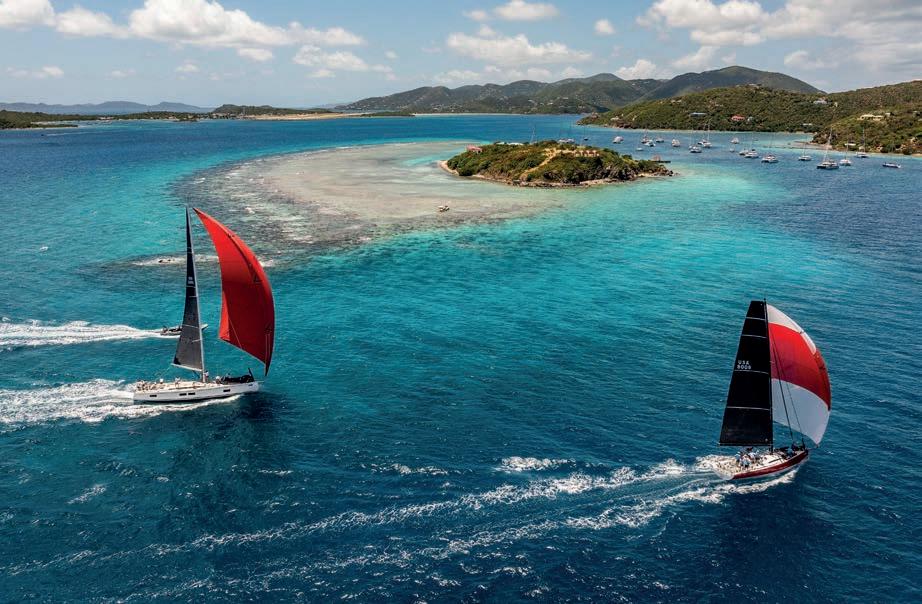



64 Buyer’s Guide
Decking


EDITORIAL
EDITOR
Sam Jefferson 020 3943 9261
sam.je erson@chelseamagazines.com
ART & PRODUCTION EDITOR
Gareth Lloyd Jones
WRITER AND SUB EDITOR
Sue Pelling
PUBLISHING CONSULTANT
Martin Nott
PUBLISHER
Simon Temlett
simon.temlett@chelseamagazines.com
ADVERTISING
ADVERTISEMENT MANAGER
Mark Harrington 07715 631379
mark.harrington@chelseamagazines.com
ADVERTISING EXECUTIVE
George Wilson 07731 344261
george.wilson@chelseamagazines.com
GROUP SALES DIRECTOR
Catherine Chapman
HEAD OF SALES OPERATIONS
Jodie Green
ADVERTISEMENT PRODUCTION
Allpoints Media Ltd allpointsmedia.co.uk
CHIEF FINANCIAL OFFICER
Vicki Gavin
MANAGING DIRECTOR
Marie Davies
Published by:
The Chelsea Magazine Company Ltd CMC, 111 Buckingham Palace Road, London, SW1W 0SR
© The Chelsea Magazine Company Ltd 2020, part of the Telegraph Media Group. All Rights Reserved. ISSN 1367-5869 (print) ISSN 2059-9285 (digital)
No part of this magazine may be reproduced without permission in writing. Every care is taken to ensure the accuracy of information in Sailing Today, but no responsibility can be accepted for the consequences of actions based on the advice portrayed herein. The Chelsea Magazine Company Ltd makes every e ort to ensure that the advertising contained in this magazine is delivered from responsible sources. We cannot, however, accept any responsibility for transactions between readers and advertisers. For the Chelsea Magazine Company Ltd full set of terms and conditions please go to chelseamagazines.com/terms-and-conditions
Subscriptions and back issues
Tel: +44 (0) 1858 438769
Annual subscription rates: UK £70 ROW £90
Email: sailingtoday@subscription.co.uk Online: Did you know you can manage your subscription online? Oversee your print and digital subscriptions online today simply by signing up at https://www. subscription.co.uk/chelsea/Solo/. Stay up to date with the latest issues, update your personal details, and even renew your subscription with just a click of a button. Post: Sailing Today, Subscriptions Department, Chelsea Magazines, Tower House, Sovereign Park, Lathkill Street Market Harborough LE16 9EF
Also part of the Chelsea Marine Magazines family:


chelseamagazines.com

SO, THE LONGEST losing streak in sporting history remains intact after New Zealand put Ben Ainslie's INEOS Britannia to the sword in the America's Cup. That may seem disappointing but there is much to be celebrated. While Britain's losing streak in the America's Cup goes back to 1851 when Queen Victoria was on the throne, Britain had recently invaded China and most of the trade of the world was still carried out by sailing ships, it's also worth bearing in mind that no British team has even qualified as the challenger since 1964. 1964. Let that sink in; Harold Wilson was the British Prime Minister, the BBC launched an exciting new television channel, BBC2, an upcoming new band called the Beatles released A Hard Day's Night... I could go on. Back in 1964 the British challenger Sovereignwith Peter Scott, only son of the doomed Antarctica explorer Robert Scott at the helm - was comprehensively outclassed by the American defender Constellation. After that race American sporting journalist John Young wrote in the Times: “It is pointless mouthing platitudes about gallant losers and a great-hearted attempt to capture the prize. There is nothing chauvinistic in claiming that this has been a stunning disgrace.” Harsh words and ones that in no way apply to INEOS Britannia who proved their mettle by seeing o all comers in the fiercely competitive Louis Vuitton challenger series. I started following the America's Cup back in 1851. Ok, I was a long way from being born, but my youth was spent reading up on the many challenges there have been over the decades and the one thing that was always clear to me was that the deck was stacked substantially against the challenger. In the early years this was blindingly clear - America's stunning victory in 1851 meant that subsequently the challenger had to sail their boat across the Atlantic only to be handed a pasting by a light displacement defender that would not stand up to an o shore passage. The contrast is less extreme now but it still holds true because the defender sets the parameters of the contest. This is not to take anything away from the amazing achievement of Emirates Team New Zealand - they fully deserve the plaudits - but these are the facts of the Cup.

facebook.com/ SailingToday
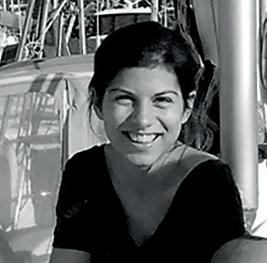
is a writer and bluewater cruiser who is currently moored in Singapore
twitter.com/ SailingTodayMag editor@ sailingtoday.co.uk
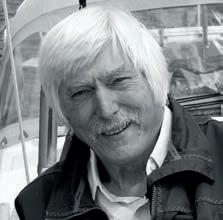
is an author, journalist and TV presenter, and one of Britain's best-known cruising sailors


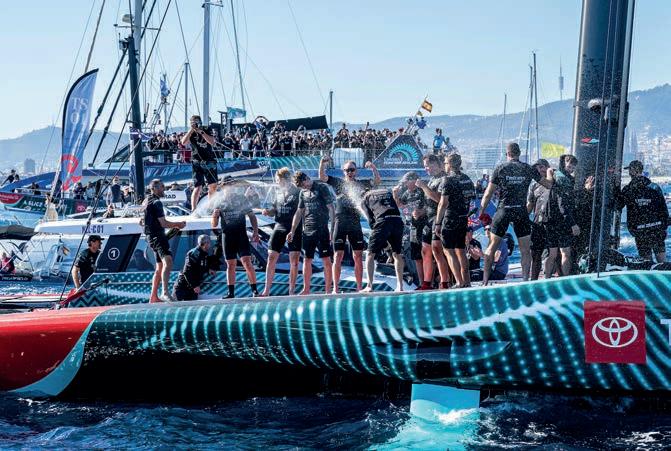
The longest losing streak in sporting history remains intact after Emirates Team New Zealand downed Ben Ainslie’s Team INEOS Britannia in the 37th America’s Cup, recording a 7-2 victory over the British challengers in Barcelona to ensure that Britain’s 173 wait for victory goes on.
Pete Burling’s well drilled team defended the ‘Auld Mug’ for New Zealand for the second time in a row, with their foiling AC75 proving simply too quick for their British rival in the conditions. After romping into a 4-0 lead, there was a brief scare for the Kiwis after INEOS Britannia clawed back two races in more boisterous conditions before normal service was resumed.
Peter Burling, Emirates Team New Zealand skipper told the race commentators: “What an awesome day, Barcelona has been absolutely amazing, and yeh, what an amazing feeling!”
As the Kiwi chase boat reached the AC75, jumping aboard to congratulate the team, Nathan Outteridge followed up with: “It’s been a huge journey, I’ve loved every minute of it… It’s the people – it’s all the people who are climbing on the boat right now, they’ve worked very hard… It’s a massive team effort, and I’m just honoured to be a part of it.”
The valiant INEOS Britannia finished their fight with heads held high. As the Challenger of Record, the team made history by being the first British challenger for the America’s Cup since 1964, previous hopefuls having failed to progress through the challengers regatta, this year called the Louis Vuitton Challenger
Series. Thus, the team had already achieved a significant milestone prior to the America’s Cup proper kicked off.
This was cold comfort to skipper Ben Ainslie post race, who reflected: “In my view, I think they’re the best team ever in the America’s Cup, well done to them. It has been a hell of a road through this event – to get to this final – and we had our moment in these finals, but at the end of the day the better team won. This isn’t going to be the end of the journey for us.”
There is little doubt that the INEOS Britannia team will be left thinking “what if” after picking up two straight wins on race day three when a choppy sea state seemed to suite the British boat much more than her Kiwi rival and the team were able to capitalise as a consequence. Here again, Ainslie and his team were making history, as these were the first America’s Cup wins picked up by a British challenger since 1934 when Thomas Sopwith’s Endeavour lost to the American Rainbow . On that occasion it was widely acknowledged that the British had the superior boat but failed to capitalise. The same could not be said of INEOS Britannia, which seemed to be at a distinct disadvantage in the prevailing conditions, and by race days four and five, the sea state was once more calm and New Zealand were able to resume normal service, easing their way to victory.


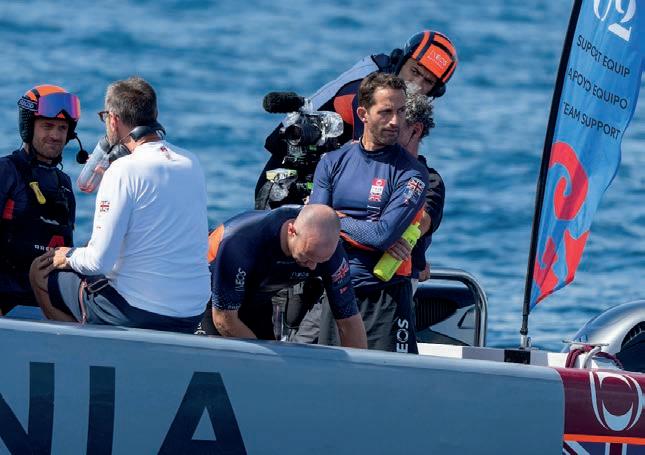
Although there is no prize for second place, INEOS Britannia had in fact already won the Louis Vuitton Cup which gave them the right to race in the America’s Cup proper. This regatta proved to be an enthralling contest with Britannia seeing off the Swiss challenger Alinghi Red Bull Racing with a comprehensive 5-2 win before being pitted against the formidable Italian Luna Rossa Prada Pirelli team in the final which would decide who would challenge for the America’s Cup proper. This final was to produce some of the closest and most thrilling racing of the series with Ainslie pitted against America’s Cup veteran Jimmy Spithill, who triumphed alongside Ainslie in Oracle’s unlikely comeback victory in 2016. There was no room for sentimentality as the two squared off in an epic tit for tat battle, and it was only in the latter stages of the contest that Britannia pulled away, finally scoring a 7-4 victory over her rival.
The Brits were in the final and a 60 year wait was over. In 1964, British challenger Sovereign was comprehensively beaten by the American Constellation. At the time, Hugh Goodson, responding to questions about whether they would be back in the America’s Cup, offered a line that still hold true today for British challengers: “Quite frankly, I doubt that we shall ever give up.” Perhaps not, but it has been many decades of trying to once more return to challenge. A look back at the list of failed challengers since 1964 consists of Tony Boyden’s Lionheart, which lost to France in the semi-finals of the challenger trials in 1980, Peter de Savary’s Victory, which lost to Australia II in the final of the elimination trials in 1983. Meanwhile, Graham Walker’s White Crusader could do no better than a sixth place finish in 1987. In 2003 Peter Harrison entered Wight Lightning, skippered by Ian Walker which was, however
ultimately eliminated in the semi-final round of the challenger series. Since then Ben Ainslie’s team under different guises has twice failed to win the challenger series. It was a case of third time lucky, however.,
Following defeat at the hands of the Kiwis in Barcelona Ben Ainslie immediately spoke about this ‘not being the end’ for his team. The Royal Yacht Squadron (RYS) appeared to make good on his words by immediately lodging a Notice of Challenge, meaning the Cowes based club will be the Challenger of Record for the 38th Match. “We’ve put in another challenge for the 38th America’s Cup, and that challenge has been accepted by the Royal New Zealand Yacht Squadron,” said Bertie Bicket of the RYS:“Over the last three and a half years, we had a great relationship with Emirates Team New Zealand and the Royal New Zealand Yacht Squadron, and we collectively felt that we that we could work together going forward in the future.”

In a remarkably candid post race interview with New Zealand Magazine Stuff, INEOS Britannia co pilot Dylan Fletcher gave a clear insight into how difficult it was to beat the Kiwis:
“The Kiwis wanted to get us in a tacking duel. We gave it to them,” Fletcher said: “We’ve got to be really proud of what we’ve done, but hats off to them for sailing better. “No matter how many times we beat them in the pre-start, they managed to just wiggle around us.”
Fletcher also alluded to having got the better of Burling in the 2021 Olympics when he and Stuart Bithell beat Burling and Blair Tuke in the 49er class medal race; “I’ve been there before, sailing against Pete [Burling], and when we had an equal boat, we beat them.
“It’s not pure like the Olympics, when you’re on an even playing field, and the last time we raced them on an even playing field, we won.”
He also said Britannia were the most improved team in recent years: “Look at our progression. We had a much faster progression than the Kiwis. They’ll be scared of us next time around.”
He said Team NZ were always the boat to beat because they were ahead with their design developments in creating the second generation of the AC75 foiling monohull. “I think of the automation and everything in their boat, it was a lot easier for them to sail,” he reflected.
“When you break this campaign down, against the challengers on an even playing field, we won,” Fletcher reflected: “It’s never even against the defender. Ultimately, they came out on top. That’s disappointing, but that’s the America’s Cup.”
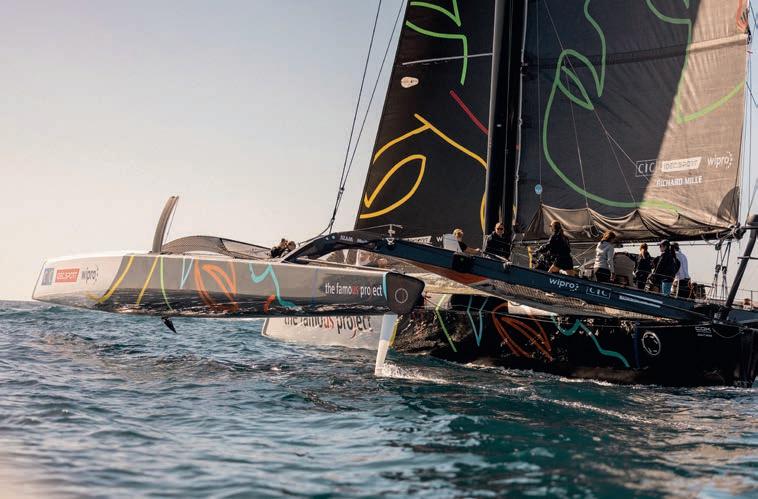

Vendée Globe racer, transatlantic veteran, and world-renowned sailor Alexia Barrier is set to circumnavigate the globe with an all-female crew, with hopes to achieve a new women’s record. Sailing on a 32m maxi-trimaran, the international crew of 10 skilled female sailors, under the name The Famous Project , is guided by the mantra “dare, dream, share” - it’s a mission focused on empowerment, and equipping women with the same resources as men in competitive sailing.
With 20 years of experience and over 200,000nm sailed, Alexia Barrier, and her crew on the Ultim Trimaran IDEC SPORT (the fastest maxi-trimaran), are also daring to beat the current world speed record.
In their continued dedication to high-performance challenges in various sports (motorsports, endurance sports, tennis, golf), Richard Mille has partnered with The Famous Project
“Richard Mille is taking a new step in its extraordinary commitments to adventure, combining excellence, technology, and performance – the three cornerstones of our brand,” said Amanda Mille, Brand & Partnerships Director. “ The Famous

Project represents our dedication to women’s empowerment and a clear desire to push limits.”
Pushing boundaries for the last 20 years, this collaboration reflects Richard Mille’s passion for speed and innovation, and it’s a project that will certainly make waves throughout the sailing community.
To successfully circumnavigate the globe, and set new and hugely challenging records (previous Jules Verne record - Francis Joyon in 2017 - 40 days, 23 hours, 30 minutes, 30 seconds), the crew must adapt to the Ultim trimaran, requiring an unlearning of previous sailing experiences. The star studded team consists of: Alexia Barrier: Skipper - 18 Transatlantic races; Dee Caffari: Co-skipper - record-breaking circumnavigating sailor; Helena Darvelid: Water speed records expert and 12 world records; Sara Hastreiter: Mountain adventurer and circumnavigating sailor; Elodie Jane Mettraux: Top multihull specialist; Joan Mulloy: Specialist in solo offshore sailing; Marie Riou: Volvo Ocean Race winner, and Marie Tabarly: Pen Duick VI skipper (Ocean Globe Race). The race is set to begin in October 2025.
In the November edition of Sailing Today with Yachts and Yachting we published an article on shared ownership which referred to the company Yacht Fractions (yacht-fractions.co. uk). In the article there was an implication that buyers had to ‘sign up’ with Yacht Fractions. Denis Lyons, Director of Yacht Fractions asked us to clarify as follows: “Signing up is misleading: If a potential buyer sees a boat share on our website they are interested in, they enquire with us about it and we introduce them to the seller. If a sale is agreed, we prepare the documentation etc and the purchase moneys are routed through our client account. The article sort of implies that we continue to have involvement with the boat syndicate, but we don’t – we are purely a broker specialising in yacht shares.”
Next months sees Sailing Today with Yachts and Yachting go green with a look at what we sailors can do to minimise the impact of our sport on the environment. As such we will chat with Matthieu Brouillet of French multihull manufacturer Lagoon about ambitious plans to up cycle older boats, and also talk with the RYA’s Phil Horton, their Environmental and Sustainability Manager, about the lamentable amount of sewage in our waters. All that plus a look at electric propulsion, a boat test of the new Bente 28, and cruises to the Channel islands and Norway.
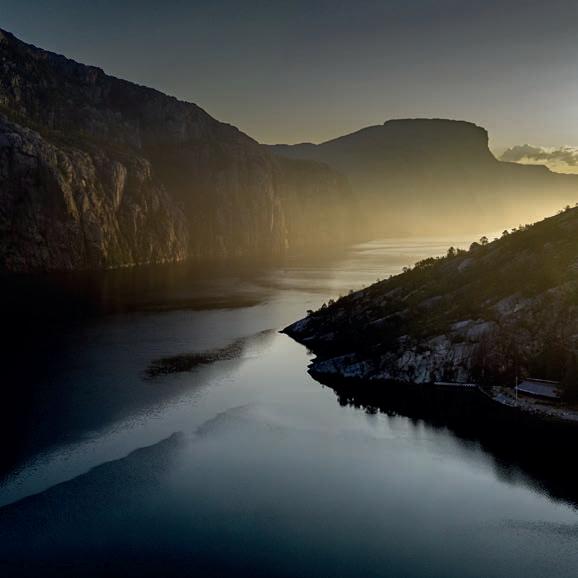
Fancy crouching inside a carbonfibre hole in the baking heat?
People talk about no pain, no gain when it comes to sporting success and it’s a phrase tailor made for the poor victims roped in to man the cyclors on the America’s Cup boats. It’s quite warm in Barcelona in the early autumn, but it’s a whole lot warmer if you’re crouched in a cramped hole in a black carbonfibre hull pedalling like a lunatic. Quite which sadist came up with the idea of running the hydraulic systems of the AC75 yachts using pedal power is not clear, but they were clearly some sort of an evil genius and the result brings back strange visions of slave galleys from Greek and Roman times as these poor chaps toil away under the heat of the midday sun.
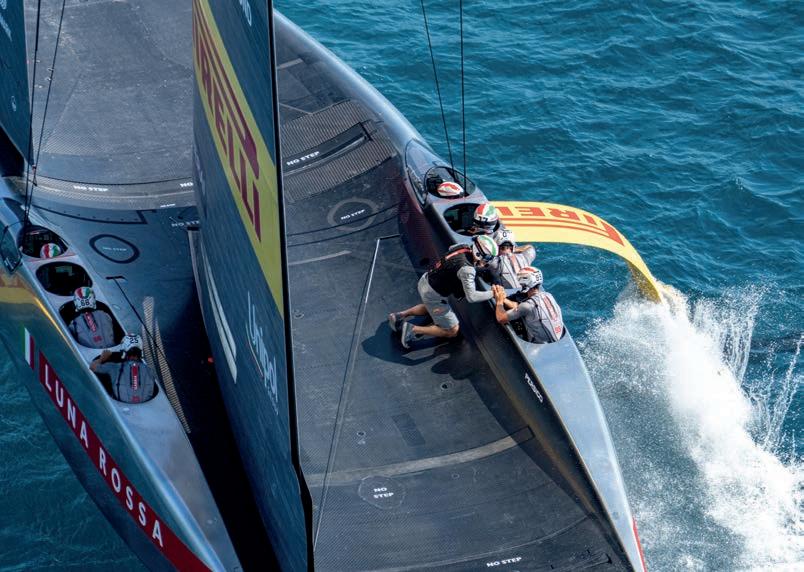
The sight brings back strange visions







Keep your pet happy and contained with Tavo’s clever travel systems.
By Sally Coffey
Our pets are part of our family and yet new research shows that almost 60 per cent of dog owners have driven with their dogs unsecured in the past six months. It is a worrying trend, says Karen McDonnell, Head of Global Relations at the Royal Society of the Prevention of Accidents: “Ensuring pets are safely secured in vehicles not only protects them and passengers, but also reduces the chance of the pet distracting the driver.”
With Tavo’s travel systems, offering pet protection reimagined, even on short journeys you can ensure your pet is safely contained. With everything in one neat package
there will be no racing around at the last minute trying to find bulky, carriers, pet beds or even strollers, ensuring a stress-free experience whether you are popping to the shops or heading away on the boat.
For senior pets, small or toy breeds or those with injuries, strollers are an essential aid. Meanwhile, the right pet bed can make the difference between a good night’s sleep on board and a wakeful night for all.
With Tavo’s super-portable Maeve Pet Protection System, which encompasses a premium carrier, a stylish stroller and a car seat, all you need to remember are the treats, water, toys – and lifejackets.
ABOVE
Take the stress out of travelling with your pet and elevate your adventures with the Tavo
Pet Protection System, designed with safety and comfort in mind.
The Maeve Pet Protection System comes with a cosy carrier that easily connects via the stroller frame to the included vehicle ISOFIX base. It allows owners to lift and lower their pets into the car even when asleep. Since so much of our relationship with our pets is built on trust and familiarity, it is important our method of restraint does not cause them any undue distress. With Maeve’s cosy and secure carrier, your pet will quickly learn that this snug and safe space is nothing to fear, helping ease any anxiety they may have about leaving home and
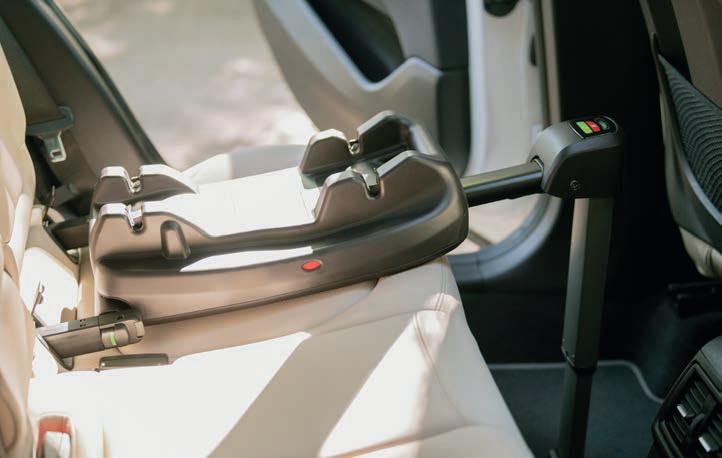







letting you bring them with you more often. So it is farewell to guilty goodbyes and hello to travelling together as a family.
If this all-in-one system sounds every bit as brilliantly designed and packaged as top-of-the-range baby equipment, that is because it is. Tavo is a revolutionary pet-protection brand from the people behind Nuna, a world leader in premier baby gear, with decades of engineering and safety expertise.
And while functionality and comfort are at the very heart of the pet travel range, Tavo understands that your pet’s safety is paramount. Crash-test-certified to the latest ECE child restraint standard, Tavo’s pet car seats are subject to the same rigorous testing as child car seats.
The carrier is secured into the car using the simple five-second True Lock™ installation system, which is designed to minimise movement or rotation in the event of a crash. The ease of use makes even quick


last-minute dashes out of the house a real possibility.
With a choice of two sizes, depending on your pet’s weight and proportions, the Tavo Maeve Pet Protection System is available in five luxe finishes: Onyx, Fawn, Merle, Sable and Brindle. Coordinating options are available for the strollers, which are accented with vegan leather details in Black, Cognac and Chocolate.
Safe, comfortable and stylish, the all-in-one Tavo Maeve Pet Protection System will transform your travels with your treasured companion.

As an innovator in premium impact-tested pet car seats, Tavo’s next addition to its range is the Dupree™ II. This is a bespoke product for cats and smaller dog breeds that seamlessly combines the key qualities of convenience and comfort in a super-compact carrier withintegrated rigid ISOFIX latches that secure it to the vehicle base in seconds.


TOP RIGHT e latest addition to the Tavo range, the Dupree™ II, is a compact carrier for cats and smaller dog breeds with built-in
Your pet will soon learn that the carrier is a safe, snug place to be.

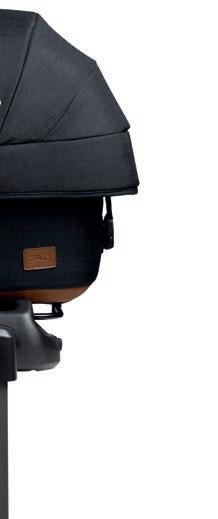

With these easy-to-use systems, all you need to think about is where to go. Now, isn’t it time you started planning your next adventure?
Available to buy from Halfords across the UK, in store and online (halfords.com)


The renaissance of Beneteau’s First range was fully realised with the Beneteau First 36; an all new racer with a real emphasis on speed. The First 30 is a continuation of that theme. Designed by Sam Manuard, working with the Seascape team and Lorenzo Argento, this is a racer that can be cruised. The boat weighs in at a modest 3,100kg making it light but not ultra light. The emphasis is on early planing and there are twin rudders for grip and control. The yacht has a deep (1.98m) draft but there will be a shallower draft option. The interior has been kept simple but will work for cruisers who don’t want masses of luxury. To this end, there is a double berth forward, another aft, and a decent sized heads compartment. The boat looks like it will be a lot of fun.
beneteau.com

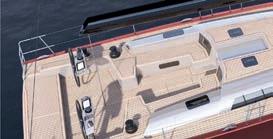
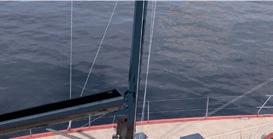



ICE Yachts is an Italian boatbuilder that specialises in building fast, luxurious cruiser racers boats in carbonfibre. The new ICE 62 is the latest addition to its range and is designed by Umberto Felci. According to her manufacturers, the new boat will ‘redefine the standards of luxury, comfort, and innovation in the world of Fast Cruisers’ quite the claim. Anyway, the boat certainly looks suitably stylish and ICE has a reputation for fine carbonfibre work and high quality fit out, so this promises to be a welcome addition to its range.
Iceyachts.it
South African manufacturer Leopard Catamarans hit the big time when it started supplying Charter companies Sunsail and Moorings with the bulk of their multihull charter fleet. This turned the company into one of the biggest producers of cruising catamarans and, as you can imagine, its range is tailored for the charter market – though that is certainly not to say the yachts are not suited to private ownership. The new 46 is roomy and easy to handle. At the same time, options such as an enhanced performance rig, electric motors, and the option of three, four or five cabin layouts point to the versatility of the design.


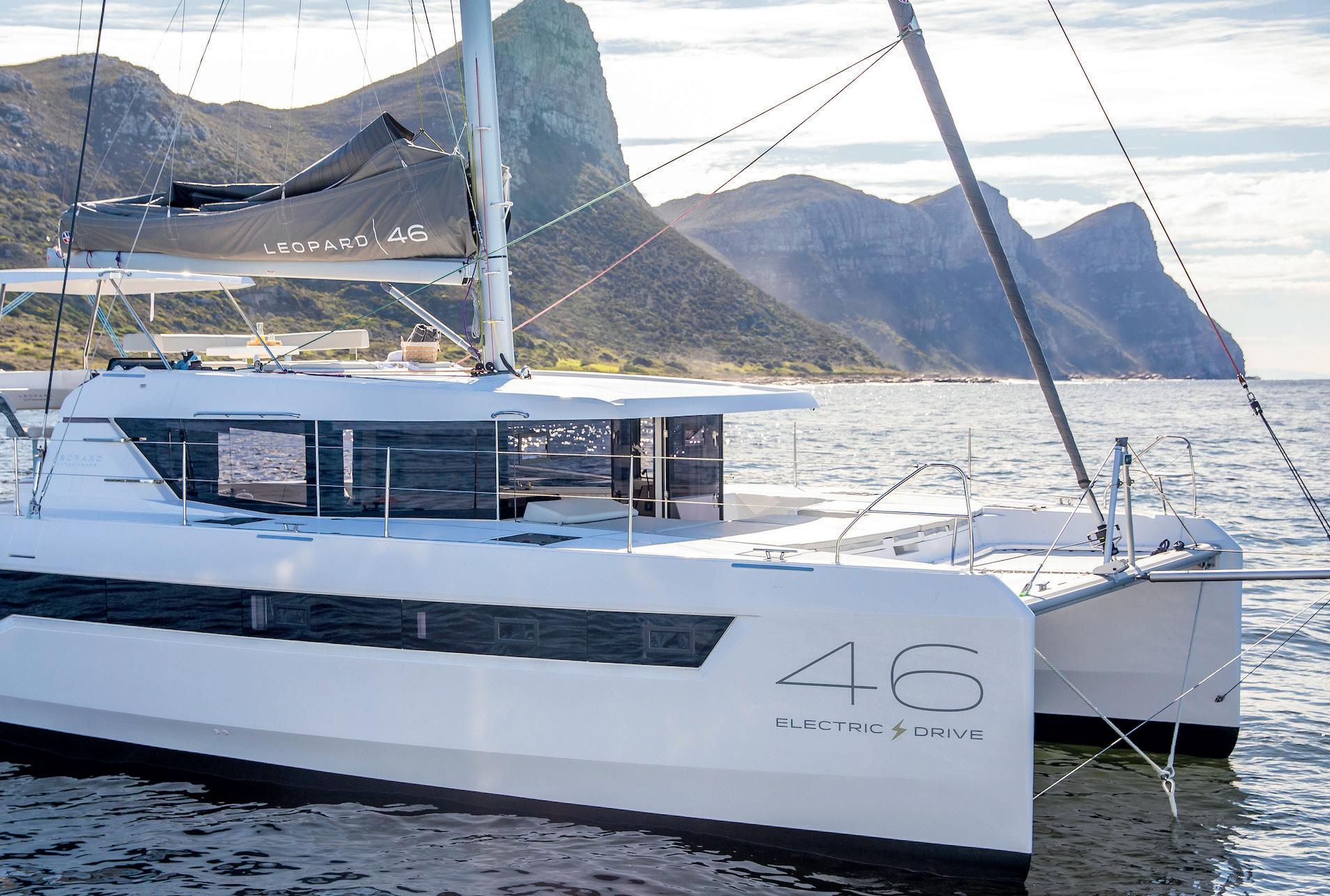
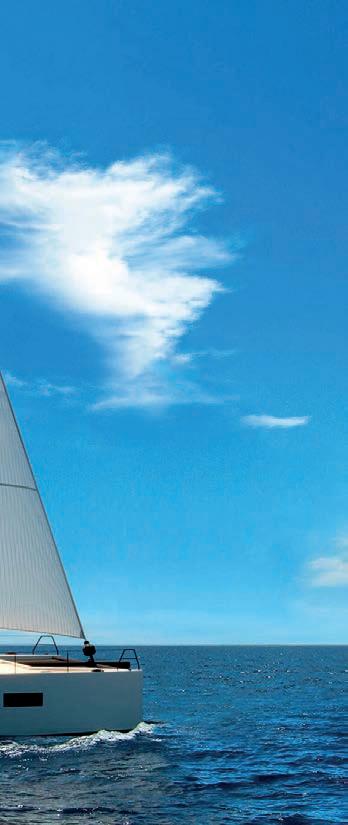
Dutch boatbuilder Vaan has made a name for itself by producing aluminium hulled catamarans that are made from recycled material wherever possible. The R6 is the company’s biggest and most ambitious project so far, measuring in at 58’. This is definitely a cruising catamaran which boasts plenty of space yet at the same time, weight has been kept down to a relatively modest 21,000kg, and the hull form suggest that performance credentials haven’t been neglected. When it comes to going green, the Vaan boasts a hull made from recycled aluminium and cork decks among other features. Electric motors are standard with the option of a diesel generator for back up.
l vaan.yachts
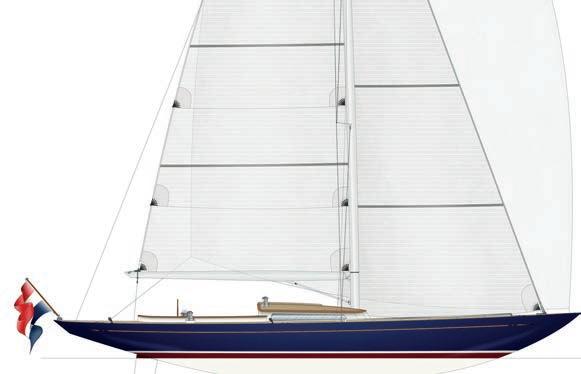
Eagle Yachts produces somewhat decadent boats that offer weekend sailing in spectacular style. Long flowing classic lines and styling are underpinned by modern keel and rudder forms and lightweight construction to ensure sparkling performance and real elegance on the water. The new 46 is the latest addition to the range and, despite her considerable length, she remains largely a weekend sailer, although the saloon does feature a double berth forward plus heads and a galley. Still, if you’re not too bothered about a spacious interior but are looking for a boat to sail fast in timeless style, then look no further.
l leonardoyachts.com
If Brexit was all about 'taking back control' then that is all well and good but Paul was left feeling somewhat confused following a cross channel cruise
If they can get it to work, which seems far from certain, there’s soon going to be a new system for entering Europe. Hurrah! It’s nice to have something to look forward to. It’s going to work on fingerprints. We’ll see how that goes. In the meantime, I’m just getting over the trauma of the new system they introduced back in the summer. It was great when we could sail without a care in the world to our neighbours across the English Channel or North Sea, with the possible exception of the Belgians who took exception to the colour scheme of our diesel. It was great to get alongside in a French marina, and before you could say, “Anyone for Pernod?” we were ordering moule by the bucket and gasping at the cheapness of the red plonk.

‘I felt sick to my stomach. Was I now a fugitive across all 27 countries of the EU?’
This year I arrived in Roscoff where our passports were duly stamped, and even though I’ve always been a bit nervous of officials in uniforms, I didn’t quake in the slightest because it was quite warm and the officer was in relaxing short sleeves. On we cruised to Brest. The sailing went wrong after that, or more to point I went wrong when I was struck down with incapacity, as described last month. So I limped up to the nearest railway station, and came home.
Three weeks later, I rejoined the boat by train and staggered up to the Capitainerie to check out. It was here that I heard the joyous news – no more passport officers, they told me. All I had to do was fill in an exit form and I was clear to go. I looked into this a little closer. It was true; you could now enter and subsequently leave France (but note, not the Schengen area) at a multitude of marinas on the Channel and Biscay coasts of France. What joy! It seems that the French tourist industry was missing our custom. Monsieur Moule was not happy. Something had to be done. So, I filled in the form, handed it over, and enjoyed a very pleasant drift back to Blighty. I was a happy man. Except for one problem, and it was a big one: my passport was now no longer in order!
When I returned to the boat I was stamped into France in Paris, having flown there. But because I had left France using the new, passport-less, system, I had
HAVE YOUR SAY
What blessings can you count these days?
facebook.com/ sailingtoday
@sailingtodaymag
sailingtoday.co.uk
nothing in my passport to show I had left the country. No stamp, no smudged inky record, of ever leaving. According to my passport I was still there! The penalties for not leaving within 90 days range from a hefty fine, five years of not being allowed back into Europe, and for all I know the guillotine may be involved. I felt sick to my stomach. Was I now a fugitive across all 27 countries of the EU? So I planned a quick visit to France via the Dover ferry to try and sort this out. I arrived in plenty of time with my deficient passport, expecting some kind of interrogation involving a bright light in a lonely cell with harsh questioning. I came armed with all manner of dog-eared papers which I hoped would convince them I was no villain. Language! I don’t speak a word of French apart from basic food ordering vocabulary. However, I decided not to make the mistake I made in Argentina when I tried to the leave their country. I wrote it all down on my ipad, put it through Google Translate and passed that over the counter. The guy looked at it, then smiled, then laughed out loud, got to his feet and started passing it round the office which ignited waves of mirth. I never did find out what Google had done to me. On passing the ipad back, the guy said, in perfect English, ‘It’s OK. I worked in London for five years. How can I help you? Phew.
I tried to second guess the French passport officer as, with trembling hand, I handed over my incriminating document. He looked at it for a while, then at me, then back at my passport. I could see the questions flickering across his face. But instead of reaching for his handcuffs, can you believe it, he just picked up his inky old stamp and with heavy clunk allowed me into France. No questions asked.
The truth is that what they call ‘wet stamping’ these days has been eclipsed by ‘what the computer says’ and to my amazement my scribbled departure from Brest had wormed its way in the great European computerised brain.
I needed to urgently celebrate. Monsieur Moule, here I come! And as it’s a celebration, let’s have that four euro bottle of wine. I am a free man.









Team INEOS Britannia put up a good fight but it all came down to straight line boat speed in the end with the super-fast Kiwis reigning supreme
The fastest boat always wins.” It’s one of the most enduring truisms of the America’s Cup. For a while during the Louis Vuitton Cup, the challengers looked like they might upend the cliché and prove that sailors do matter after all. And certainly they have never mattered more than the America’s Cup which has just concluded in Barcelona.
Sailing ability – whether in terms of good steering and trimming, solid boat handling, clever tactics and strategy – all that stuff has always mattered. But everything in the America’s Cup has played second fiddle to inherent straight-line boat speed, the way the boat, the appendages and the rig have been designed and engineered. In the end, the Kiwis demonstrated that Taihoro, Emirates Team New Zealand’s winning AC75, was the fastest boat.
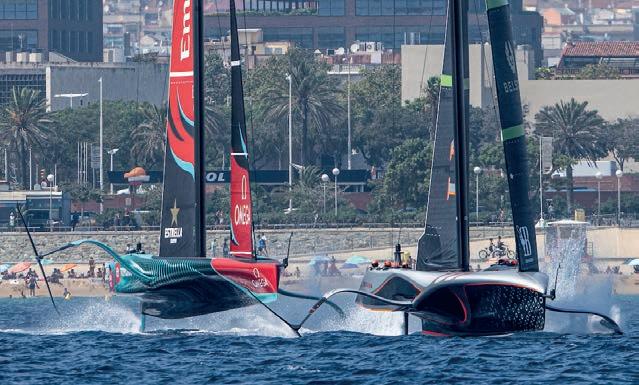
“The Kiwis just had to bide their time and let the boat do the talking for them”
benefit of hindsight, American Magic’s decision to opt for recumbent cyclors in order to achieve a sleeker aero profile for Patriot’s hull shape was a significant miscalculation. The American crew lacked the human horse power to pump the hydraulic oil as reliably as the other teams, which left Tom Slingsby’s crew looking vulnerable at critical moments during tight matches. Luna Rossa Prada Pirelli suffered too many gear failures which cost the Italians dearly. Their boat might well have been faster than the British, but the reliability of Britannia shone through and the Ainslie/Fletcher duo were the better match racers than Spithill/Bruni on the Italian boat.
After taking two races away from the Kiwis when the Brits were 4-0 down, Sir Ben Ainslie’s Team Ineos Britannia, renewed their unshakeable belief that this could be their year.
When the Kiwis won two more to take it to 6-2 and match point, still Sir Ben never yielded. In the pre-start of race nine, the British dominated the Kiwis and were giving them bad gas in the final run back to the start line. Britannia was quicker off the line as the Kiwis, tight to windward, were forced to tack away slightly downspeed towards the right.
But the right proved the place to be, so much so that when the two rivals converged on the first cross, already the Kiwis looked comfortable. Perhaps they had seen and wanted the right-hand side all along, even at the expense of losing the start. Either way, the slight edge upwind always gave Pete Burling and his faultless crew a level of confidence that things would come good if they were patient. The Kiwis just had to bide their time and let the boat do the talking for them.
Later on in the race, the Brits almost got back on to level terms with New Zealand as Burling let Ainslie get a sniff of the right-hand side of the track, but it still wasn’t to be. The Brits had sailed brilliantly in that race but Britannia was just a touch off the pace. Not necessarily even in a straight line, but through the tacks where Taihoro appeared to maintain a better glide and suffered less deceleration through the manoeuvres. With the boundaries playing such a large part in the racing, maintaining speed through the tacks and gybes was more important than ever. This was as near to a perfect America’s Cup that you could ask for, in terms of the whole package required to deliver a race win. Sailors and technology had to work in perfect harmony. With the

Ainslie’s late decision to bring in Tokyo 2020 49er Olympic gold medallist Dylan Fletcher as port-side helmsman looked to be well justified and was the right choice for the team. Fletcher’s youthful exuberance and ‘up and at ‘em’ attitude was a great addition to the crew, although aged 36 even Fletcher is no spring chicken compared with Peter Burling. Now a three-time winning skipper in the America’s Cup, Burling has achieved the ‘ThreePete’ [horrible phrase, but I couldn’t resist] at the age of just 33. This doesn’t bode well for any of the challengers next time round. Burling’s generation will be around for a while to come.
Under the watchful and strict eye of team boss Grant Dalton, complacency is never allowed to creep into Emirates Team New Zealand. After seeing off Luna Rossa three years ago at the 36th America’s Cup in Auckland, the Kiwis conducted less of a victory debrief and more of a post mortem as to why they only won 7-3 against the Italians. Why those three defeats and what should they have done better?
If New Zealand had failed to defend the Cup this time around, critics would have accused Dalton of taking on too much –introducing the AC40 ‘mini-foilers’, the Youth and Women’s America’s Cups for the first time, the hydrogen-powered hydrofoil chase boats. It was quite a To Do list, yet still Dalton’s squad delivered a masterclass in the America’s Cup Match itself. High achievers like Dalton spend little time celebrating the win. As the 67-year-old commented just minutes after his team had successfully defended the Cup for a third time, Dalts said he’d be back at this desk the following morning at the usual time. “The day after you win is the hardest day of all.” Crikey. Do these people never let up? No they don’t, which is why Sir Ben won’t be licking his wounds for long. The quest, the obsession, to bring the Cup back to Britain continues.
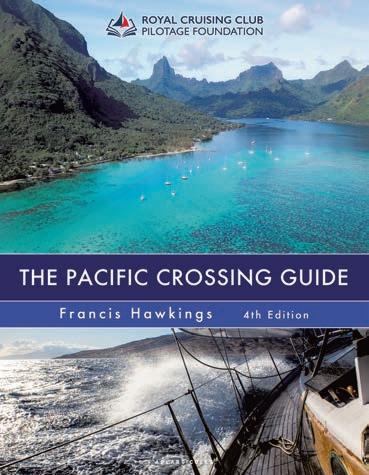

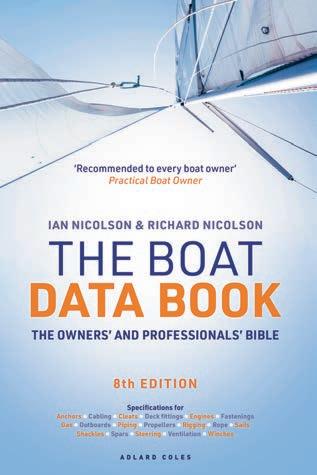

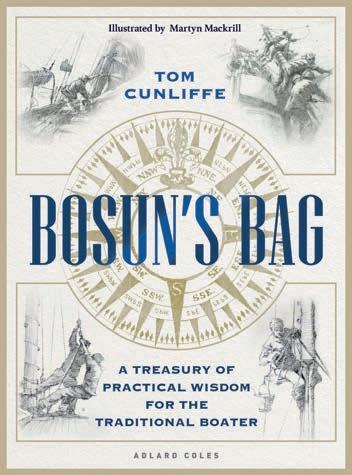

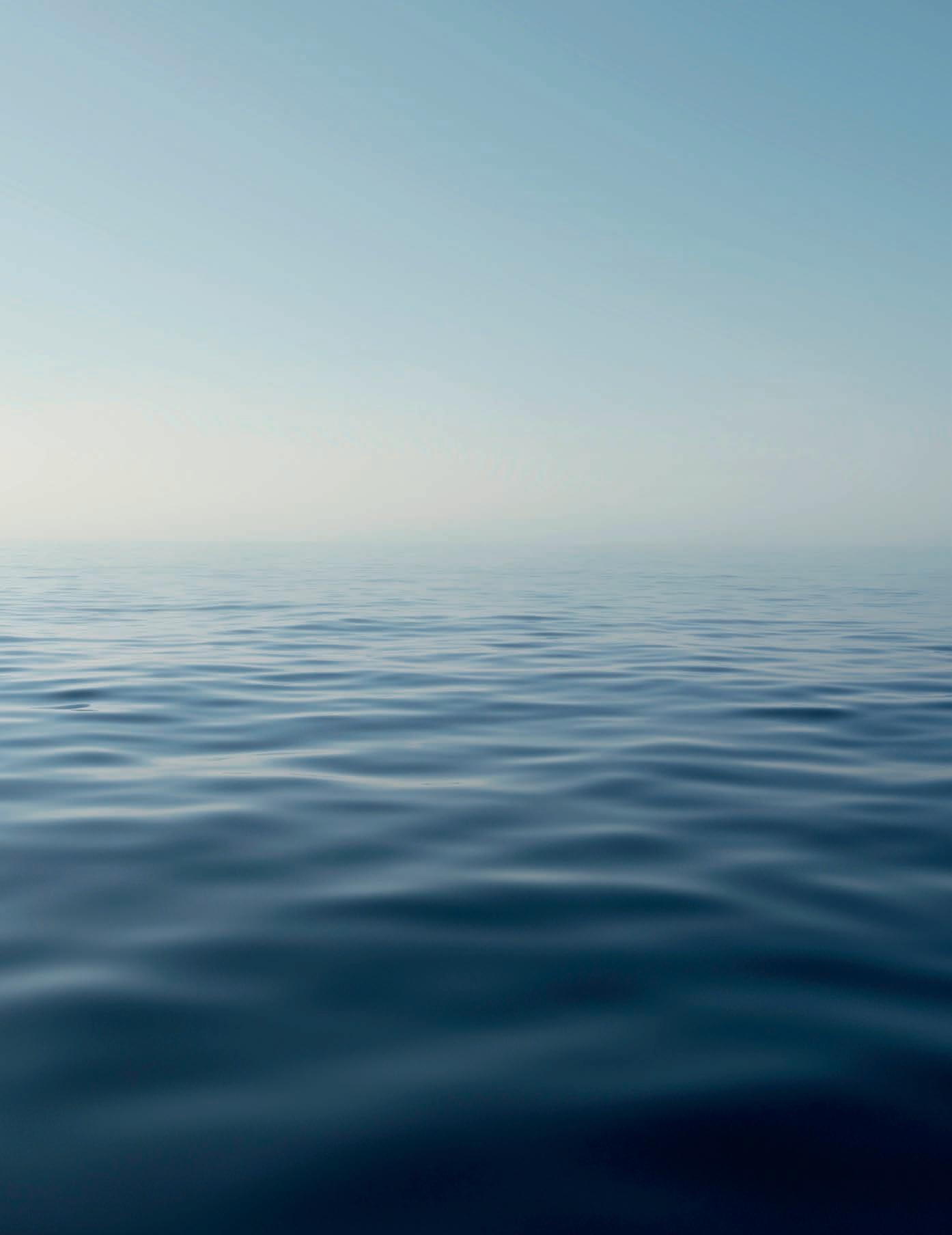

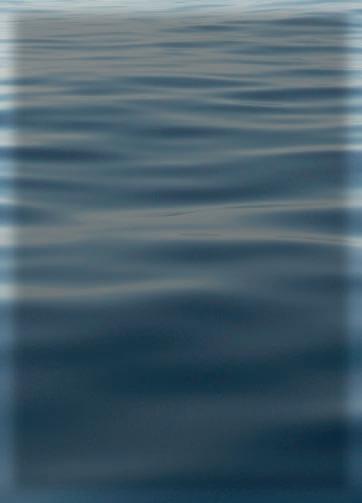



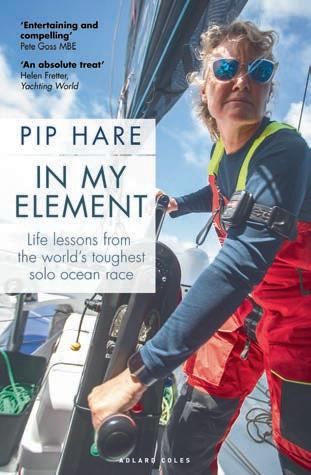
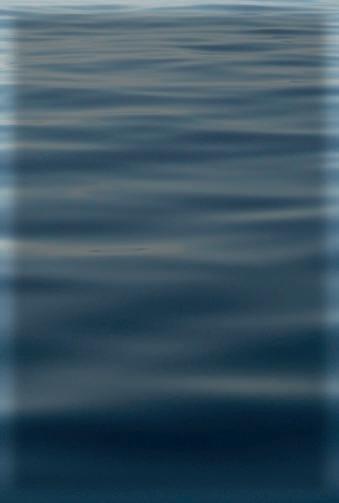

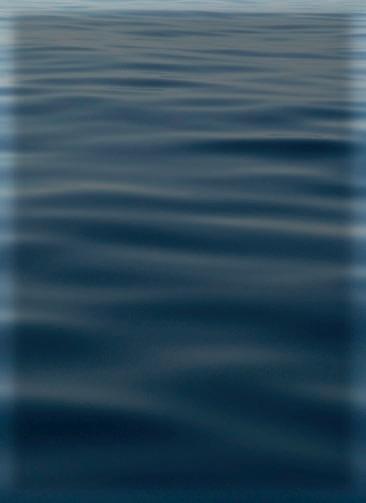


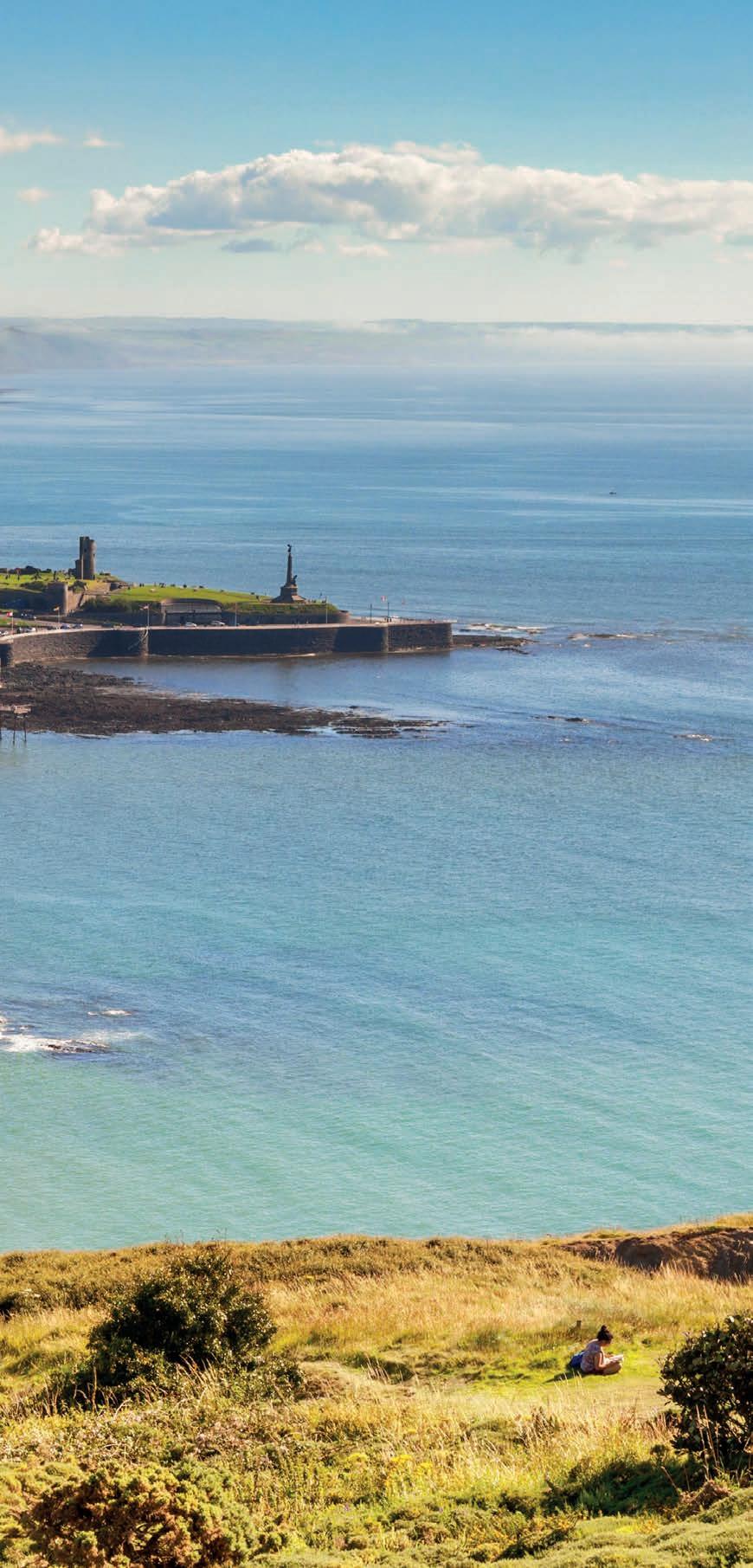
Winter sailing in the UK is not for the faint hearted. Solo sailor Murray Longmore opted to test that theory to the maximum with a winter jaunt from Wales to Ireland
Boats are like friends, for many reasons – we stick with them through thick and thin, and they are a reason for living. But there is one important difference: boats like to be used. If we lay our boats up at the end of September and wait until the following Easter before our next trip, we may waste the best months of the season putting right what time and the depredations of salty dampness have put wrong. So I like to use my boat every month, even during winter. This way, there are fewer nasty surprises lurking in the lazarette or hiding in the heads. And if there are insoluble grumbles in the galley, then at least I know about them before setting off into the summer sun.
But now it is winter – the evening of 9 February, 2024 to be precise. I am in Lidl in Aberystwyth for a few household groceries, while I mull over whether to set sail across the Irish Sea. As I entered the supermarket, I was of the opinion that the forecast was not stable enough. But as I went from aisle to aisle, I found I was stocking up for a voyage. A dozen eggs? Not needed! Yet there they were, in my basket. My subconscious must have been in the driving seat, and it was by this means, and by these eggs, that I learned that the trip was on. My subconscious knew that the eggs were for hard-boiling, to feed the watches of the long February nights ahead. In some ways I didn’t really want this voyage to happen. To quit warmth and security for the cold inky blackness of the Celtic night seemed wrong. But who am I to argue with my subconscious?
The downside of winter sailing involves not just wet and cold weather. In winter, equipment failures are the rule rather than the exception. Winter sailing tests one’s boat and her systems – sometimes beyond endurance. In one sense, this is a good thing. If your systems survive what I think of as “trial by fury” in the winter months, the chances are that you may be able to sail through the summer with impunity.
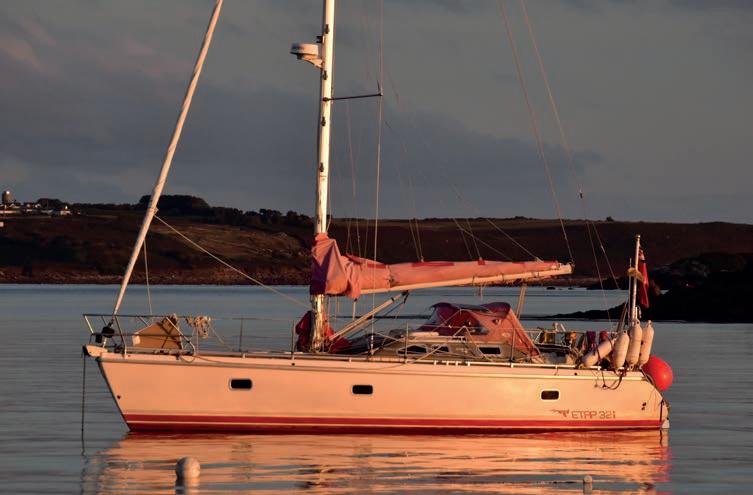
On this trip, during a planned gybe, I suffered total internal derangement of a newish block. Its black cheeks parted, the axis rivet failed, and the white wheel inside, cast itself into the ocean. Everything else survived intact (apart from my pride, for a reason I shall come to).
Once the decision was made in favour of this mini-voyage, I found it was one that was easy to rationalise, using the following argument. Before Christmas, a very good friend asked if I wanted to join him on a leg of his circumnavigation, from Japan to the Philippines, scheduled to start in March. I found all I could say was “Wow!”, and “Yes!”, and “What an opportunity!” But by February I found that had I disobeyed my own rule of carrying on sailing (owing to a surprising number of named storms and unnamed furies) and I had not been at sea properly for a few months – long enough to have lost my sea legs. Now, it is not fair to turn up on someone else’s boat (a Tradewind 35) without one’s sea legs. As my sea legs are lost all too easily, wasn’t this crossing of the Irish Sea just what was needed to put me in shape for the Japan – Philippines voyage?
With my conscious mind now working in tandem with my subconscious mind, there was no stopping me. I chose Malahide, just north of Dublin, for my Irish destination. It is a delightful town, with a splendid marina. More to the point, there is a long sandy beach with good holding just outside the approaches,
where it would be easy to anchor, day or night. The route from Aberystwyth to Malahide is about 80nm, allowing for a bend round Bardsey Island and the Devil’s Tail – but not allowing for any tacking.
One of the problems of winter sailing is that one must often leave and arrive in darkness, if the dictates of the tides are to be adhered to – as they always must be, in a boat such as mine (a 32ft Etap, named Irish Eyes ). With my draft of 1.4m, I can only leave

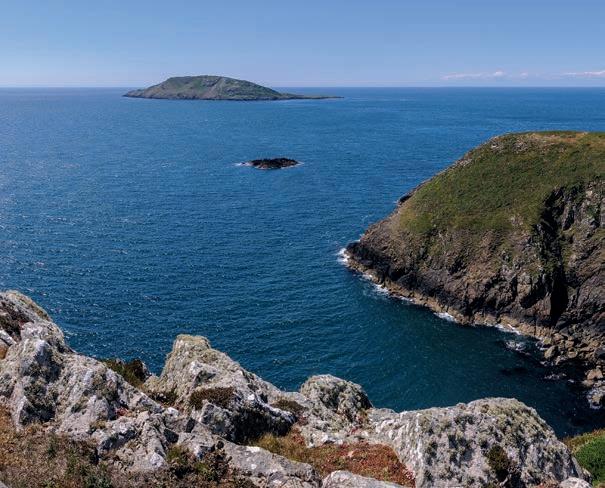
PREVIOUS PAGE: Aberystwyth, departure point for this winter cruise
ABOVE LEFT
Irish Eyes is an 32ft Etap
ABOVE RIGHT
Bardsey Island on a more friendly day
BELOW LEFT
Catching the tide by
the way to Malahide north of Dublin. Grib shows the strong spring tide and crossed seas
Aberystwyth marina 2.5 hours or so before high water – less at springs, which happened to be a day or so after my planned departure. But if I left at high water, my arrival at Bardsey Island would put me at the whip end of the Devil’s Tail tidal anomaly. The solution? Leave around high water (2200), and anchor off the North Beach at Aberystwyth, and set sail after 0100 into darkness (no moon was predicted).
A rolling few hours at anchor outside Aberystwyth should be just the thing to educate my sea legs, I thought – and would test the maintenance I had applied to my windlass a few months earlier. Perfect! – in a masochistic sort of way. So, on this view, I would not be starting this trip well-rested and in peak form. Never mind!
The windless worked in a half-hearted sort of way (am I the only sailor to have perpetual windlass problems that only occur after the guarantee has expired?). But despite the swell and the rocky bottom, the anchor held unambiguously (a Rocna, to which I have entrusted my life on many occasions). I amused myself until 0100 by singing snatches of sea shanties (I only know one) and by blowing speech-bubbles to loved ones. I raised the mainsail under cover of darkness, glad that no-one ashore could see and criticise my slow technique. I sailed off my anchorage into the cold night. I was trembling all over. Was it from fear or cold?
In fact, the night was far from dark – although it was moonless. The stars shone with a vividness that seems to me to be augmented
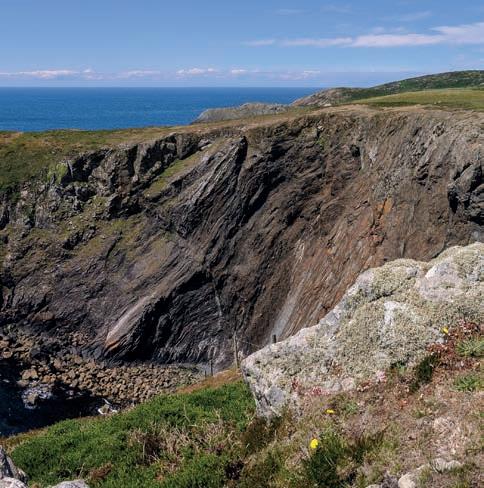
by the winter air. Or perhaps it is the winter air making my senses more alert? Tonight, the stars did not twinkle – I have been told that twinkling occurs on nights when there are abundant crystals of ice in the upper firmament. I did not know how to feed this lack of twinkles into tonight’s forecast, but I did know how exceptionally lucky I was to sail under their unblinking gaze.
The direct route from Aberystwyth to Dublin and Malahide takes one through the notorious Bardsey Sound. I am too fearful for this, but one day, in daylight, things will line up, and I have promised myself I will try it. So, with a racing spring tide under me, I gave Bardsey Island a wide berth, leaving it to starboard. We all know that what the tide gives, the tide takes away, and soon it was against me. This is when the seasickness started, a sickness which was to hold me in its clutches until my destination.
Seasickness sets in
I don’t remember much of the next hours. None of the hard-boiled eggs were consumed, naturally enough. But I could drink a little water, between excursions to the leeward rail, to feed the sea. I do remember being grateful for my newly-mended towed generator, which allowed me to generate enough amps to have the radar alarm on (as well as the AIS), so I could lie down for a bit. The towed generator is a welcome item of equipment for the winter sailor. Even with three solar panels, I cannot generate enough amps to keep the navigation instruments

fed, even in the zenith hours of February daylight. This means that one sails into the long winter night with depleted batteries, which is far from ideal. But with my towed generator, I can make 4-6 amps, day and night. Sometimes there are so many amps that I plug in a toasted-sandwich maker, just to use up the amps, and have a treat, but such treats were far from my nauseated mind on this voyage.
Owing to the brightly-shining stars, during this phase of the mini-voyage, my mood was
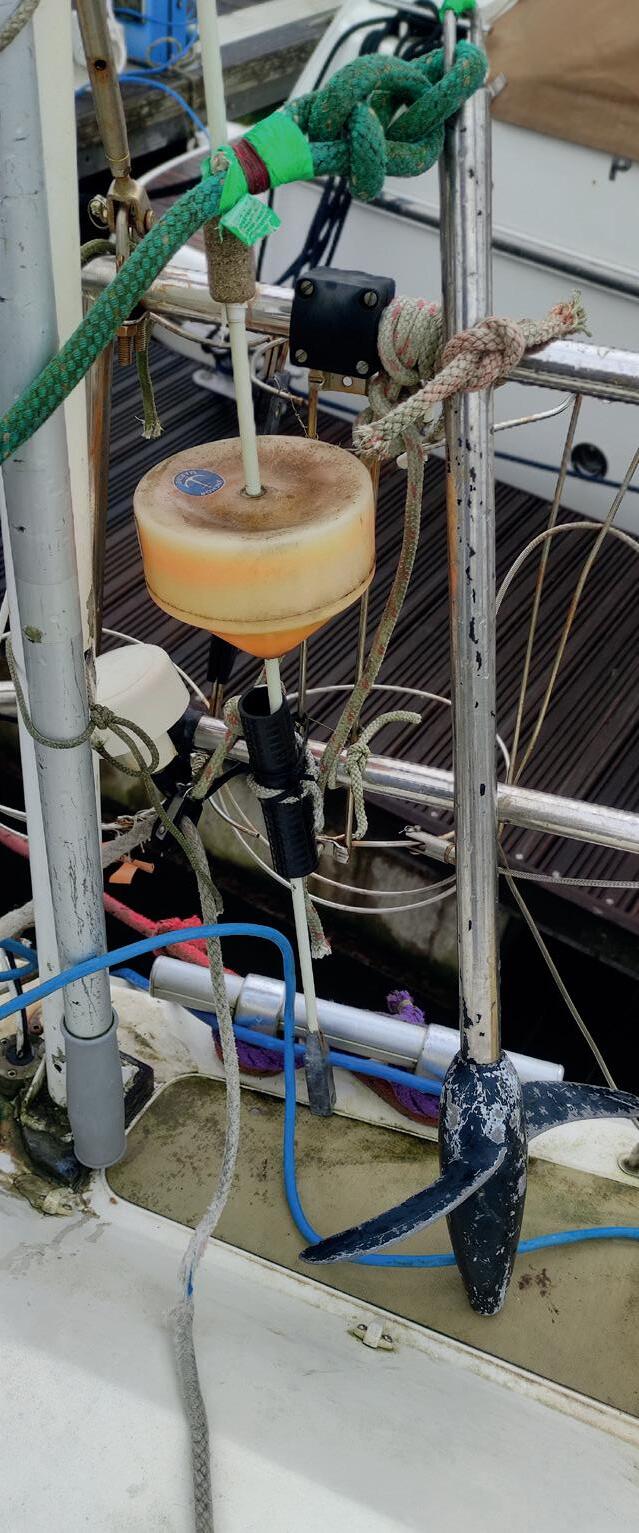
ABOVE
An advantage of winter sailing is the fact you don't need to get up early to see the sunrise – at anchor near Malahide in Ireland
BELOW LEFT
Solar panels are useless during the long winter nights, so it is far better to have a towed generator. This allowed me to keep the radar on all the times
blacker than the night. I found myself thinking “Why on earth am I doing this?” and “Why am I so sea-sick?” and “Will I be up to the Japan-Philippines trip?” Adding to this downbeat mood, I found that the south-setting spring tide had taken me far off my course, and too far south of Dublin but then the tide changed again, and I could make my way north, going parallel with the Irish coast and 10nm to the east. Soon I was at the beach at Malahide. I anchored in darkness, pleased that there was no swell. I awoke to a new sunlit world of calm and peace, in a mood of tranquillity, tinged with euphoria at the beauty all around me. After a good breakfast, I was feeling more than 100% fit. I had planned to upanchor at the top of the tide, and navigate the tricky shoal waters to Malahide marina. However, I no longer hankered after land because today seemed made for sailing, and there was a reasonable forecast to get me home. The sea was the place to be, and all my sea-sickness had vanished. So I decided to put to sea with no land interlude, to cement my sea-legs, as it were. And, sure enough, sea-sickness was not to visit me again. In a rising wind and with rising confidence, I raised the anchor under unreefed mainsail, and sailed off the anchorage. I headed towards Ireland’s Eye, and then out to into the Irish Sea, with 3kts of spring tide under my happy keel. This gave me a speed-over-land of up to 10kts, which got me off to an almost flying start. It was the morning of all mornings, and there was nowhere I would rather have been.
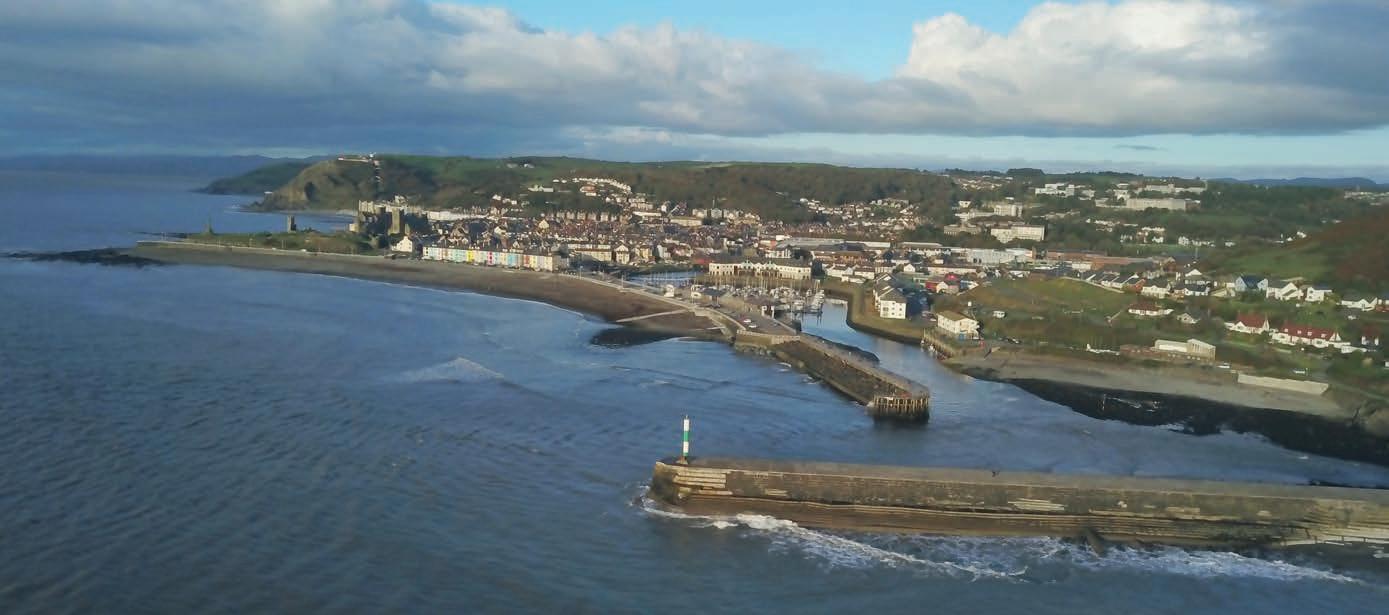
As night came on, and the Bardsey Light came into focus, a strong spring tide erupted in an adverse direction. Thank goodness there were no corresponding gastric eruptions, because I had to think clearly. Thinking about how to deal with these spring tides made me come up with the following advice to myself. “When trying to transit a tidal gate in the wrong direction, go out of your way to transit the gate on a beam reach (my fastest point of sailing). As the tide grips you, and your speed through the air decreases, apparent wind will move aft, so what might have started out as an efficient broad reach may all too easily turn into an inefficient run. So take this into account when manoeuvring in the fastest of the adverse flow.” Applying this advice gave me an extra knot or two of speed over land, and almost halved the time I spent in adverse conditions. This is not just an advantage from an ETA point of view. If there are aggressive wind-over-tide conditions, you are in the danger zone for a possibly far shortened time. But note that each tidal gate has its own idiosyncrasies, and it will often be the case that you cannot approach it on a beam reach, and the prudent course of action is to wait until the tide is favourable. Also, sometimes a beam reach will expose your boat to breaking waves on the beam, which could be dangerous.
Because of these manoeuvrings, I arrived at my destination too early, and at too low a state of tide to enter Aberystwyth harbour. So I heaved-to in darkness, and bided my time. Then the wind piped up to Force 5-6 and a swell came in, so I was worried there would be breaking seas over the bar on my way into the harbour. In my view, it is best to wait until the top of the tide before going in. While hove-to, my towed generator line had got twisted into an unruly snake, so I undid it, and streamed its line from the stern, to iron out its kinks, so as to help with coiling the long length. Then I spied a gap in the waves, and clipped on a shortened harness, and, with legs braced against the cockpit sides, I made a dash for the harbour entrance. Experience has
ABOVE
A suitably moody shot of Aberystwyth, journey's end
BELOW
The author well wrapped up and keeping an eye on the weather
taught me that it is best to engage the autohelm for this event, then, if the seas should knock you off your feet, the correct direction is nevertheless maintained.

All went well, until idiocy intervened for the last 20 metres of the trip. As I backed into my berth, I reversed over the towed generator line that I had forgotten to haul in. The serpent was now eating its own tail. Of course, the free end of the tail twisted itself around my propeller (despite having a rope-cutter fitted). Luckily, I had sufficient speed to glide into my berth (not very gracefully). Luckily again, two berths away from me was Jack, a diver. He was very helpful and optimistic that he could fix the problem. As I was berating myself for my idiocy, he simply said: “Don’t beat yourself up, Murray. You can’t count yourself a proper sailor unless this sort of thing happens…It’s happened to us all.” Thank you Jack!
Reflections and predictions: I wouldn’t have missed this little voyage for anything. Yes, I fed the sea, but the sea in turn fed me – a diet of delight, of dolphins, and of a dawn I shall never forget. The voyage has also given me confidence and joy. Did it prove adequate preparation for the Japan – Philippines voyage? Only time will tell, so I promise to report back from the South China Sea in due course. Of one thing I am certain, there will be tribulations and trials – but, If I am lucky, no trial by fury.

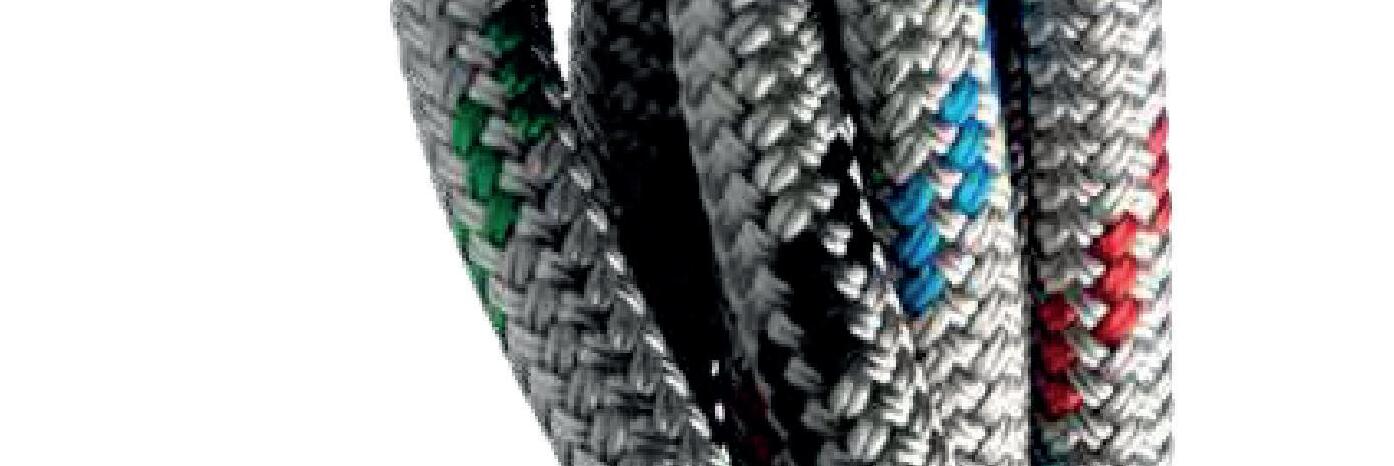














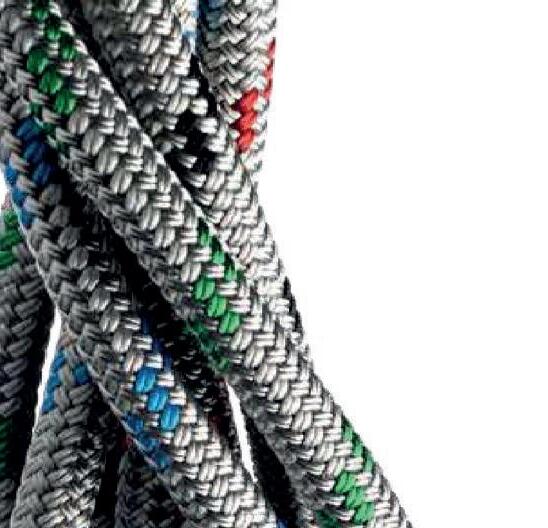

All our ropes are tested to the limit. On the water, in some of the world’s greatest yacht races, and off the water at the factory where we test all ropes to destruction. We always publish minimum spliced breaking loads as the only loads that are achievable by, and relevant to, the user.
All our ropes are tested to the limit. On the water, in some of the world’s greatest yacht races, and off the water at the factory where we test all ropes to destruction. We always publish minimum spliced breaking loads as the only loads that are achievable by, and relevant to, the user.
All our ropes are tested to the limit. On the water, in some of the world’s greatest yacht races, and off the water at the factory where we test all ropes to destruction. We always publish minimum spliced breaking loads as the only loads that are achievable by, and relevant to, the user.



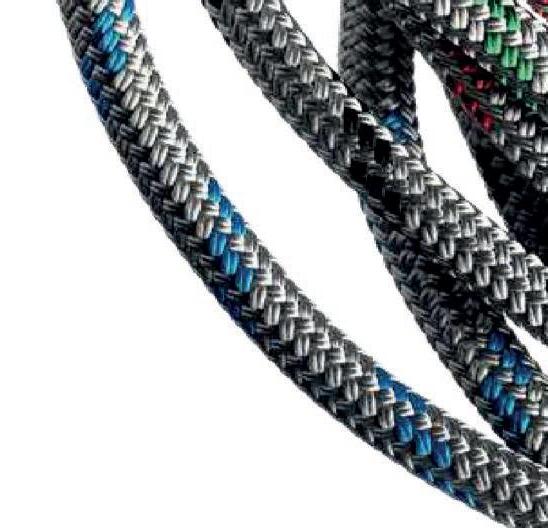
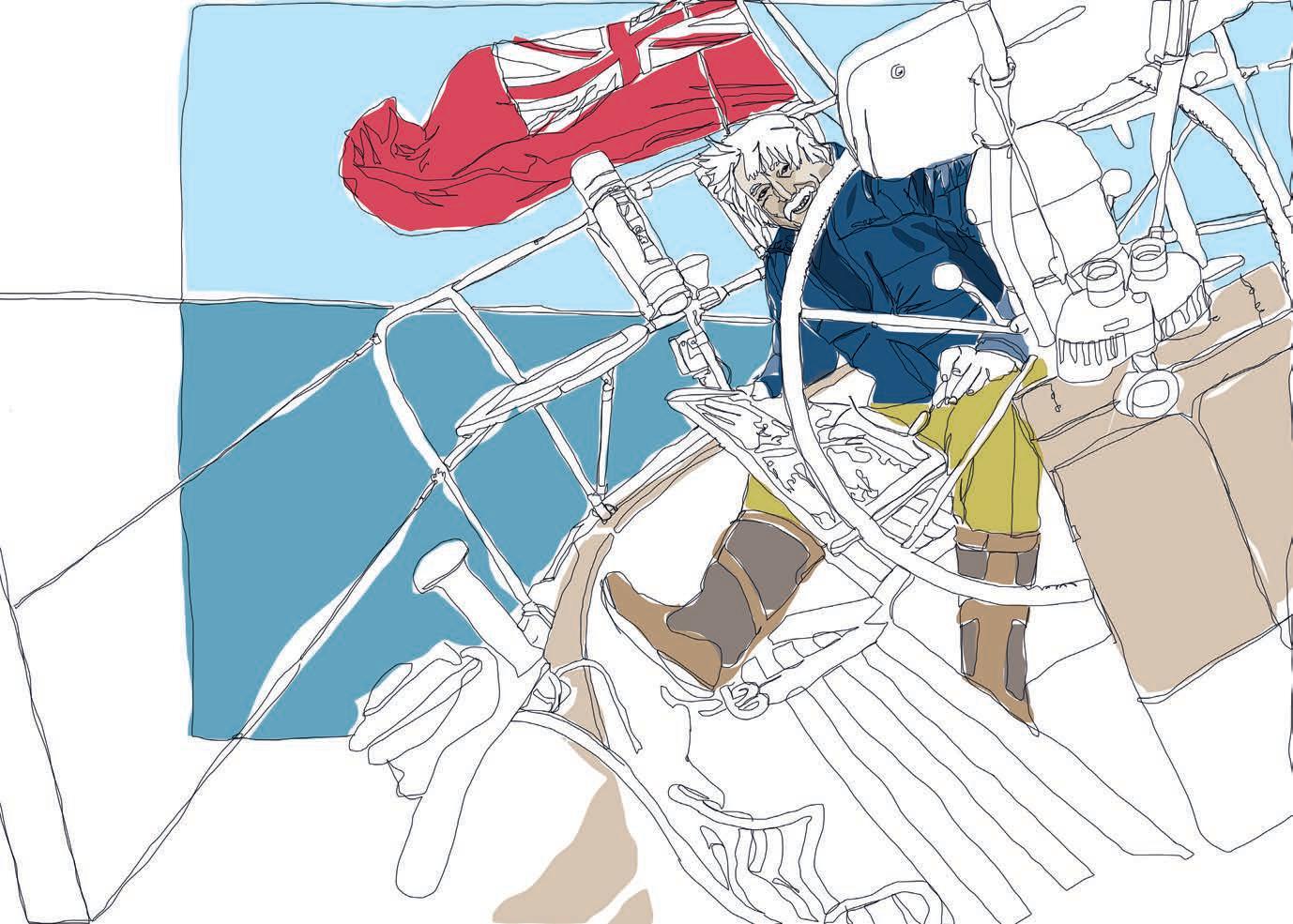
A good tender is worth its weight in gold and opens up new vistas to explore once you drop the hook. It can also get you into a good deal of trouble...
The trouble with yachts is, unless you’re lucky enough to have a centreboarder, most of them have deep keels. While I’m often content to stay onboard while lying to my anchor, there are occasions when the local creeks look full of promise, with no chance of exploring unless I take to the dinghy. Once upon a time, this was an undiluted pleasure. For years, my family and I sailed the
sort of boat that can carry a hard tender. If well designed, it makes serious dinghy cruising a workable option without an outboard. We owned a boat for a decade and a half that could ship the 10ft glassfibre ‘stem’ dinghy I bought for 30 quid from the barman at the old National Sailing Centre in Cowes. It was butch, beat-up and painted postbox scarlet. The crew dubbed it ‘Erik the Red’ and ever afterwards it favoured a masculine pronoun.

Catch up with Tom’s columns now and in the future at sailingtoday.co.uk
Erik was more than just a means of scrambling ashore. When times were hard in northwest Norway with the price of victuals through the deck-head, two of the lads would hop into Erik an hour or so before supper with hand-lines and a hip-flask. A rocky shoal a mile away was teeming with fat codfish. The ‘ship’ couldn’t get near it but Erik could. They’d come roistering home with the catch ready filleted just as the spuds were beginning to boil.


“We ran out of rum shortly before our star oarsman, a lusty 18-year-old recently released from Eton, gave it so much wellie that he snapped his oar”
In the Caribbean, Erik tried his luck in the salvage game. An ancient coaster had piled into a reef round the corner from our anchorage in a recent hurricane. Inconveniently, she’d gone up on the storm surge so you couldn’t approach her within half a mile in anything that drew enough water to sail. Our expert reclamation team, led by a five-yearold, rowed round and crept aboard. There wasn’t much left worth lifting, but the heavy top section of the teak galley door made a classy forehatch for the yacht, complete with armoured glass deadlight. We’d never have lugged it back without Erik
For his next adventure, he became over-ambitious and enticed us on a dodgy voyage to Sandy Island off Anguilla. Approach to this minidesert island with serious draught was a non-starter, so we rowed there instead. It was only a couple of miles and the place was idyllic. No people then, just white sand, turtle tracks, a few palm trees, the blue Caribbean on all sides, and rare black coral strewn over the beach by a recent storm. I still have a fan of it to remember my folly.
The pull home into the teeth of the tradewind and the associated current supplied our comeuppance
in full measure. We ran out of rum shortly before our star oarsman, a lusty 18-year-old recently released from Eton where he had pulled stroke in the school boat, gave it so much wellie that he snapped his oar. For a while an unscheduled stopover in Panama seemed the only realistic outcome, but the breeze went down with the sun and we limped in at cocktail time with one sweep and a bit of a paddle contrived from a bailer. Nearer home, our dinghies have carried us into corners of rivers we’d never have seen without them. We’ve hoisted oilskin jackets and sailed away downwind in fine style, knowing full well that we’d have a stiff row back. Erik was pulled up to Breton towns at the top of the tide so we could nip ashore for a quick café/
ABOVE
Erik the Red, Tom’s well travelled solid tender
BELOW
That’s the way you do it! A youngster is introduced to the art of rowing – no outboard motor in sight

croissant before dropping back to the yacht on the mid-morning ebb. Rowing in dinghies has taught my family how to deal with the essential inadequacies of the human condition in a way no powered craft can hope to do. Kids droning round an anchorage or against a strong tide with an outboard are a noisy nuisance, but let them try the same game under oars and they’re in for a character-building moment of truth. Sadly, few of us remain pure at heart forever. In a flush of extravagance, we bought an old British Seagull outboard for Erik Sally Seagull cost more than the boat although at £50 she proved a sound investment. She was never quite the same after an early trip to the bottom of a Norwegian fjord in 30ft of water but she increased the range of our excursions as she buzzed her merry song. This was, however, intermittent, and it was only when Sally was replaced by a Japanese pretender, for which we paid real money, that we developed the confidence to stretch out under power. One notable venture under the rising sun trademark was in Ireland, a passage up-river from Baltimore to Skibbereen. The
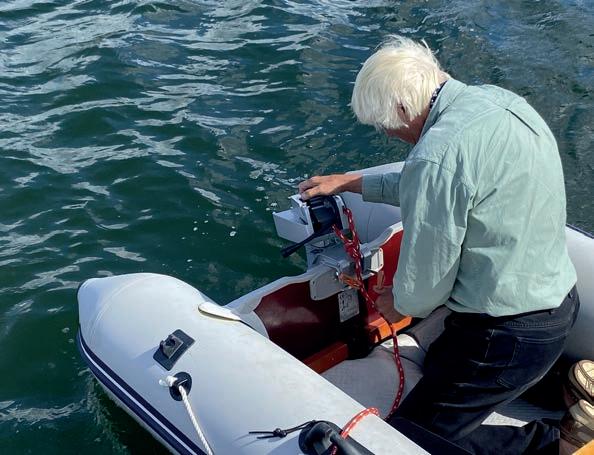
waterway dries, so this was to be another dawn raid with the making tide. There had been some social resistance to the excursion with the horticulturists agitating for a route march to a famous house with an open garden; a place, intelligence from McCarthy’s Bar advised, one should see before dying. The sailors prevailed, and away we went at halfflood into the grey Irish morning.
Slowly, the river edges sharpened with the coming light, then the sun rose in gold. The tide ran obediently on, lambs gambolled in the green fields and the engine from Tokyo purred sweetly. Halfway to Skibbereen we were admiring a kingfisher when our hearts lurched at that sudden sickening drop in revs the Seagull had taught us all about. Seconds later, the twostroke motor stopped altogether.
Brandishing his trusty Swiss Army knife, my mate whipped the lid off. If it had been British engineering with two moving parts, we’d have fixed it in no time, but this was a new world of sophistication. We were still prodding ineffectively at spotless plastic pipes and shiny items of unknown function when the boat bumped gently to a stop 10 yards off a small beach. Two chaps were looking at us. One was clearly master, the other his man.
“Can we help at all?” enquired the master.
“Would you have a 12 mil. spanner?” responded my ever-practical mate.
‘“We have at the house. Will
ABOVE AND RIGHT
Anyone who has tried rowing an inflatable dinghy will soon want to invest in an outboard – an electric one also removes the need for ear defenders
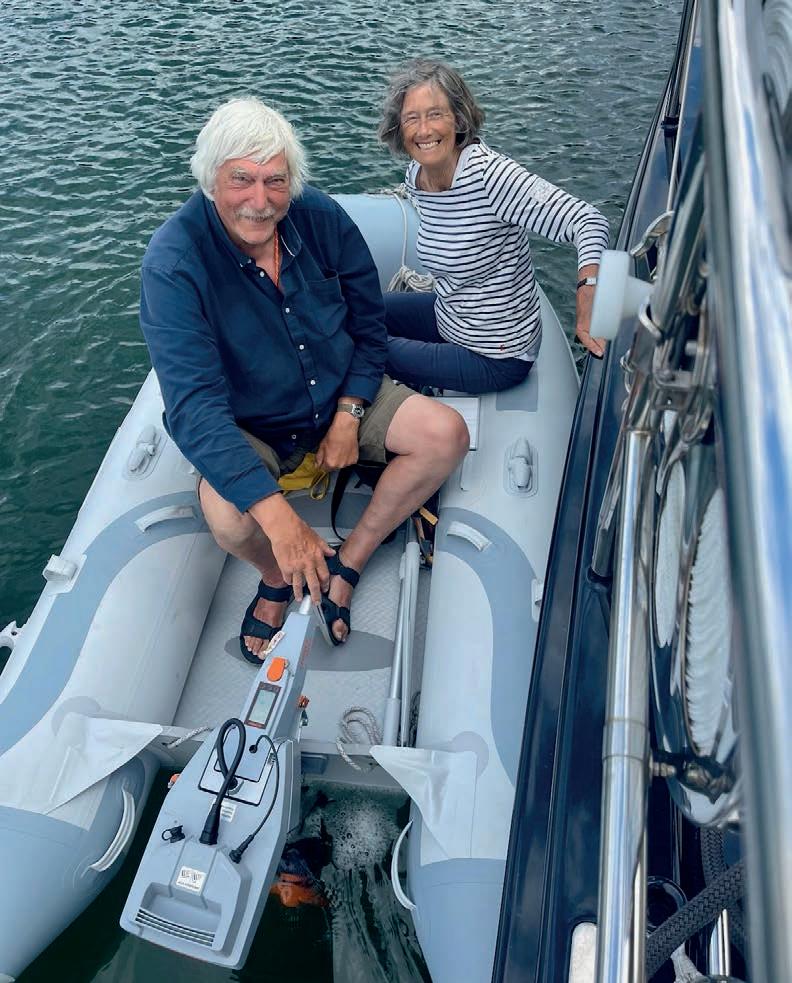
you stop for a bite of breakfast?”
What could we say? The ‘man’ waded out and piggy-backed the ladies ashore. We were all led, via ancient wrought gates in a mossy wall, through woodland echoing with birdsong and onwards amongst grounds of fairytale loveliness to a perfect Regency house set on a noble lawn.

a complete set of cruising text books and runs his own internet club for sailors worldwide at tomcunliffe.com
In a dining room straight from ‘Pride and Prejudice’ our host treated us to a full Irish breakfast, after which we were taken for a stroll in the garden. Around mid-morning, he said: “If you’ll excuse me, I’d better be opening up now, there will be people coming along on this beautiful day.”
We had stumbled upon the very house we had missed visiting. Arriving by water we had benefited from the sort of welcome that sometimes it seems only sailors receive. The tide for Skibbereen was long gone, but little cared we. Rowing home on the ebb would be a pleasure.
This is all very well, you may be thinking, but what about all the modern yachts not designed to carry a stem dinghy? Nobody I know can row an inflatable further than the next yacht, so the answer has to be the outboard, or sails. With a wee boat, a tiny rig and a cunningly contrived leeboard, the world is very much your oyster, but high levels of practical ingenuity are required to rig it all up in a blow-up boat. You might find an old Tinker Tramp sailing inflatable on eBay and fettle that, but even those marvels of compromise don’t suit everybody, so it’s back to the old petrol outboard complete with rip-cord or, when it breaks, the yacht-club tie. Thank goodness these little beasts are now so reliable that any crew with a lust for adventure can chance their luck around the sea’s edge. Disgracefully, the noise is as unforgivable as it always has been, but now we have the wonder of the electric alternative, so dig deep, save up and give the singing birds a chance.
Seagoing Saildrives Inland Waterways Marine Generating Sets Spares & Support

37 years of customer centred focus, listening to needs and delivering long term value solutions.
Specialists in customer advice and support at all points of a products voyage.
Superb after-sales service via our national network of approved authorised dealers, spares stockists & international re-engine centres.
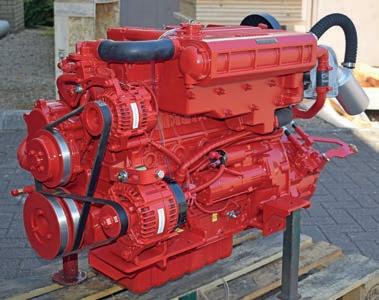


10 to 98 HP heat exchange propulsion engines with mechanical or hydraulic gearboxes.
14 to 56 HP heat exchange propulsion engines with 2 saildrive solutions, engine with new saildrive, engine with adaptor to suit existing saildrive.
30 to 98 HP heat exchange cooled diesel propulsion engines with single or twin 48v hybrid electric drive motor/generator(s).
REDUCE CO2 BY UP TO 90%!
Compatible for continuous use with HVO fuel.*
NEW E-Drive electric propulsion, 14kW & 21kW constant electrical propulsion power.
Fully integratable with 48v battery management inverter charger systems.
Fully integratable with BetaGen/ BetaSet generators.
Heat exchange cooled generator sets 4 to 58 kVA with or without super silent acoustic housings.
5 year combustion engine & 3 year E-Drive self-service warranty, recreational use only terms & conditions apply.

Many variables led to INEOS Britannia getting beaten by Emirates Team New Zealand but one key factor that made a clear difference - the weather. Britannia's two wins came on the day when conditions were markedly different. It's therefore illminating to talk to the the team working behind the scenes at INEOS who
were straining every nerve to gain an advantage from the challenging race conditions we’ve witnessed. Understanding the conditions you’re to go sailing in is an allimportant and obvious part of any yachtsman’s preparation. On these finely tuned AC75s engaged in the pursuit of ultimate speed and any slight edge against the competition – a precise understanding of the conditions is vital.
ABOVE
INEOS Britannia crossing tacks with Emirates Team New Zealand
This is where INEOS Meteorologist Miguel Sanchez Cuenca (‘Capi’), and the whole data systems, collection, and analysis team make all the difference. I caught up with Tom Harrison, whose background in meteorology and love for sailing led him to this team at INEOS Britannia, where he helps bridge the gap between the data, and the design, engineering, and performance world in Ben Ainslie’s America’s Cup team.
One key aspect of the America’s Cup was reading the weather.
Milly Karsten caught up with INEOS Britannia’s in house meteorologist Tom Harrison to find out more
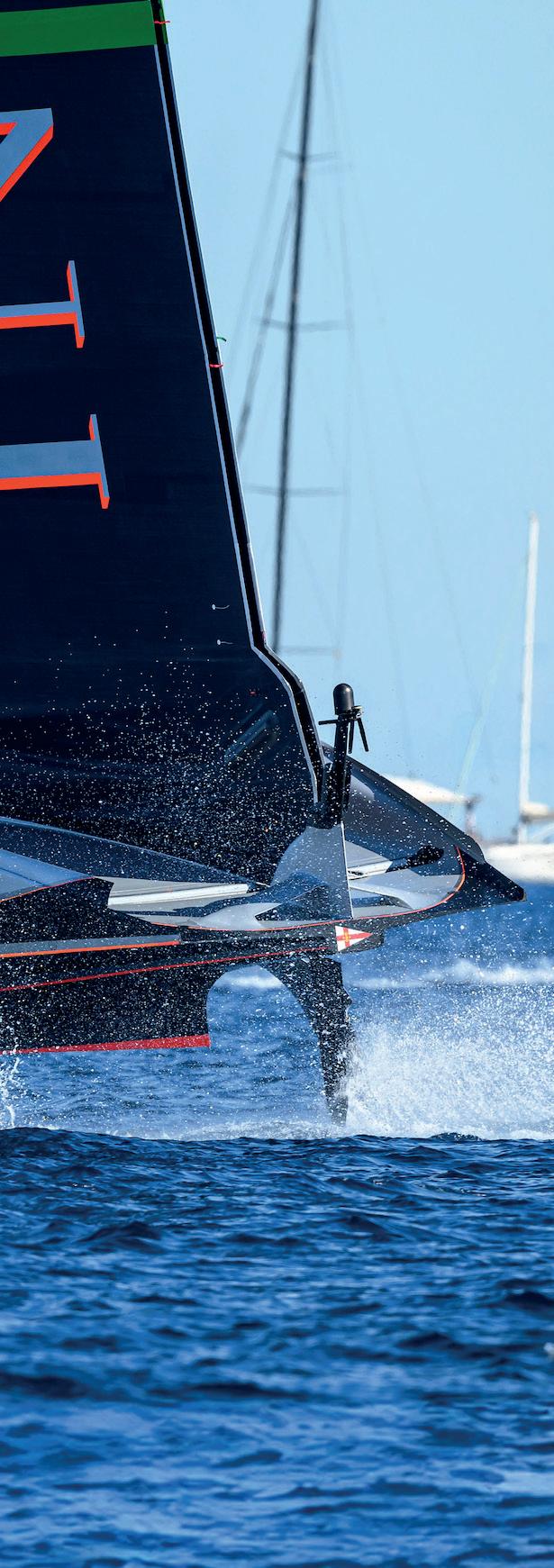
What has been your typical day during the America's Cup?
For me mostly my day is focused around ensuring that the performance loop that we have with the sailors and the coaches, and our engineers, can function as efficiently as possible. From my point of view, that’s mostly around ensuring that all of the data that we’re extracting from the yacht is done effectively, cleanly and to make sure everything is working. These

are such complicated machines, and there’s so much hardware and software that needs to be tickled along, particularly at this end of the campaign.
My role is sort of looking after and developing a tool set, a sort of standardised toolset. So we try to present data in a way to our engineers which requires as little effort as possible for them to get to the answers they want. So really ensuring that part of the loop stays well oiled and that we are not wasting time where we don’t have the time to waste. Making sure that everyone can get on to answering the questions we need to answer as quick as possible.
Almost in some ways the racing is a bit easier because we’re not allowed to put a lot of the data collection that we usually would on the yacht. But a lot of the analysis that we need to do in
this world is not just numbers – it’s correlating numbers with visuals, with media, with cameras, with audio – so it’s sort of making sure that everything is presented in a coherent manner.
How is your data different from our public weather forecasts?
The magic touch in any good weather forecast is a human, normally. Traditionally, say 60 years ago, a meteorologist might look outside, draw some charts, make an educated guess, and that was better than the data that was being spat out. But, these days it’s much more having a knowledgeable person appraise the data and decide whether or not it’s trustworthy. So we look, and ‘Capi’ will consult a number of different models, look at satellite imagery, primarily as a foundation in the real life data points. We look at land based observations, some sea based observations, and really the process
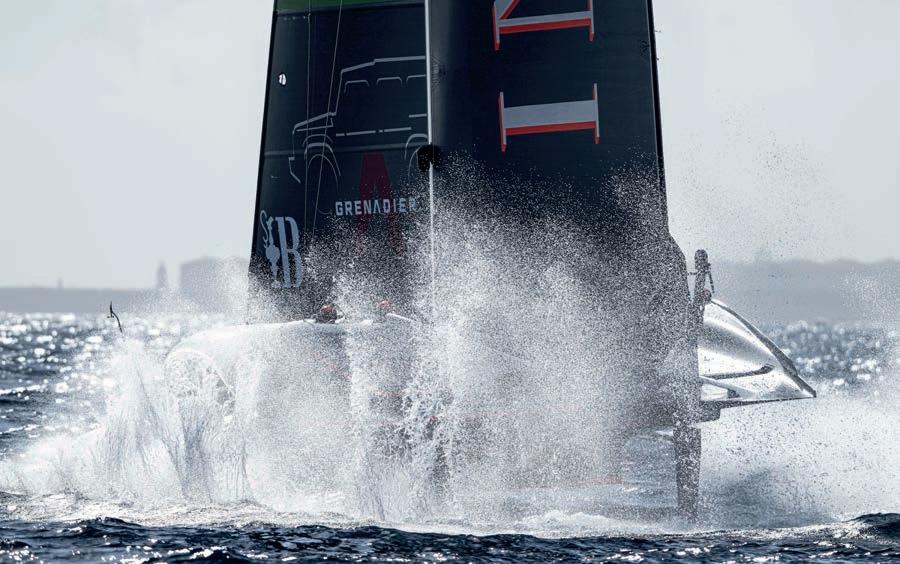
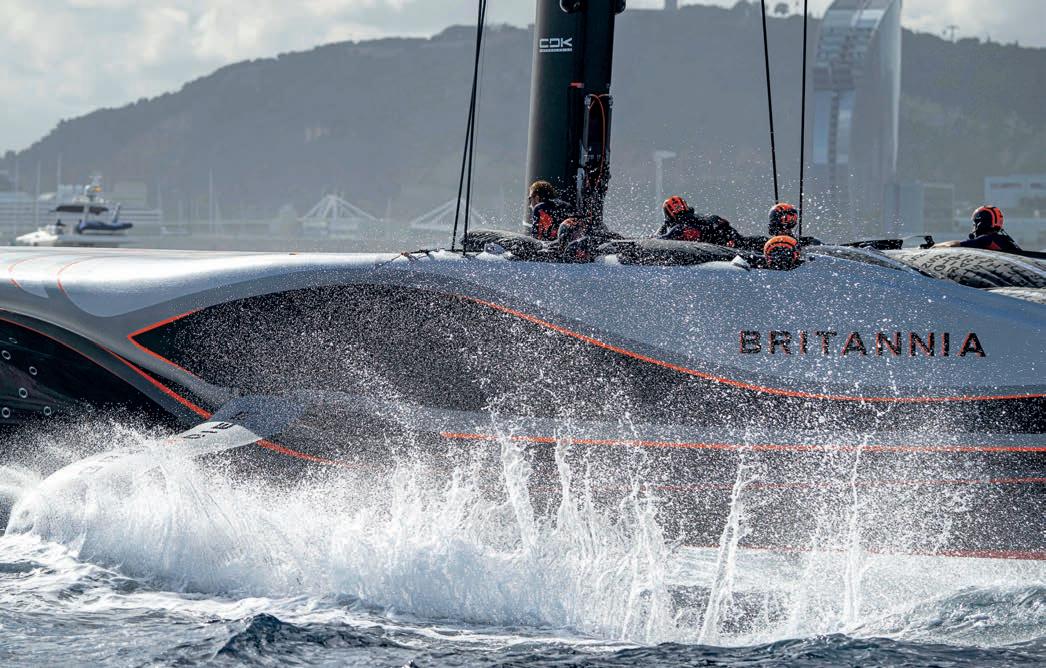
is trying to paint a picture of what is actually happening, and see how that compares to one or all of the models that are available.
The rule in the America’s Cup this time is that we’re not allowed to collect our own meteorological data, so everything that we use has to be publicly available. So, there’s nothing different in the data we have here that ‘Joe Bloggs’ – a weather nerd on the couch at home – couldn’t access. But the real difference is having an expert appraisal of that and particularly with Capi, as a very accomplished sailor. I think the game we have right now is having someone who is extremely knowledgeable.
We’ve been compiling a big database of Barcelona set-ups, trying to essentially generate a really big wealth of local knowledge so we appraise model data with the real life stuff we can gather, with our local knowledge, to try and develop a good forecast, but more importantly, a strategy which we can implement – whether that’s a sail selection strategy, or a strategy on the racecourse – that sort of all comes together so that the sailors can ingest information and use it to make quick decisions.
Barcelona is quite a unique spot – there must have been lots of different factors at play?
Barcelona is very difficult actually. When it’s easy, it can be very easy, and the same is true of where we
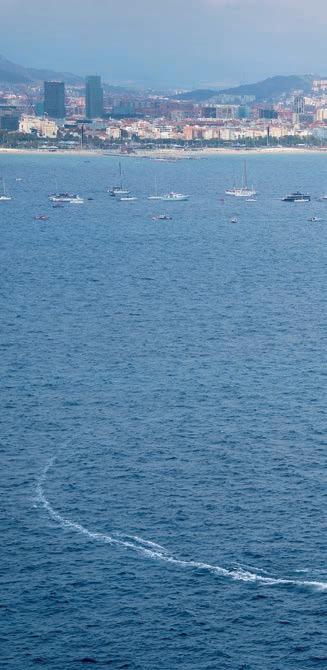
trained over the winter in Palma, not last winter, the winter before. When it’s easy, and it’s a nice sea breeze, it can be really easy, and the course is predictable, the forecast is predictable. There are not that many different weather patterns that you get in Barcelona, but most of them are pretty tricky, and they’re dominated by the mountains to the north, and the south and river valleys. You end up working in a very sensitive area of the synoptic picture. It does make it very tricky. So we’ve seen, I think most dramatically on the first day of the Women’s America’s Cup here, a day where we had a southwesterly, it felt like the sea breeze may be building, 15kts, then at the bottom of the course it went to 0kts. We looked upwind and saw people going upwind and a northerly 25kts and these two
ABOVE
INEOS Britannia flourished when the sea state was a little more disturbedpicking up her two wins on the day there was ca lot of chop
BELOW Tom at work for INEOS Britannia
pictures come together. So often Barcelona is in this convergence of two patterns, that's why we’ve seen such tricky conditions. It’s also the reason for the sea state being such a difficult thing to manage here, because with the convergence of two patterns, you often get sea state driven from the other side of the pattern to the wind that you’re in. So, it makes for a really interesting venue, meteorologically.
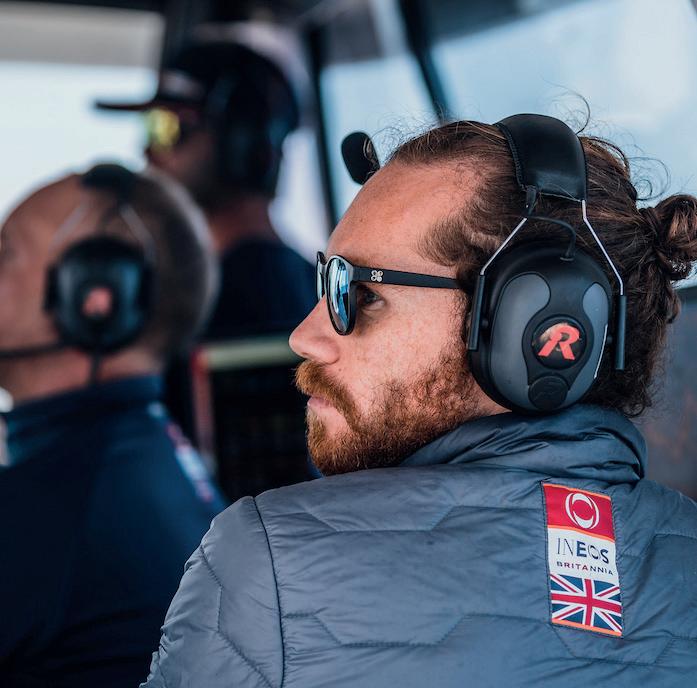
On day four of the America’s Cup final, it was clear that the sea state was hugely affected by the water hitting the blocks on the shore walls, confusing conditions on the course – this had a profound effect on the racing that day as Tom explains: Yeah, such a big part of the racecourse. It’s amazing how much the sea state can change just over the four corners of the track, and in quite an unpredictable manner really. It’s not often – I mean there are a few different set ups that are frequent – but yesterday I think the lads came in saying one corner of the course was particularly difficult, and that’s not the corner we usually associate with the difficult sea state. So, yeah the sea walls, the groynes along the beach, and all of the sea defences certainly play a part in making difficult conditions even more tricky. And tense!

Was the weather and the sea state in the Louis Vuitton Cup good for us?
It’s really hard to say, to be honest, it’s really hard to know where everyone else sits within the design box, I mean there certainly are pros and cons to the designs we see, depending on sea state, and certainly everyone would have designed to a pretty specific optimal wind race. From my point of view, I thought it was absolutely fantastic because we got to see these boats in both ends of the extremes in sea state and wind speed, and I have to pinch myself everytime we see 6.5kts off the yacht and they’re doing a 38 or 40kt bare away. Or when we see them going up wind at 42kts, it’s quite impressive.
The biggest difference in conditions affecting the yachts more tends to be sea state more than anything. I think that some of the design packages are a bit more optimised for the larger
sea states, or perhaps have made some bigger trade offs, [so] that sea states are easier to deal with rather than others.
In what conditions did we have advantages over the Kiwis?
As much as it was very difficult for us to watch in the office – it’s all a bit full of jeopardy – I think we were all sort of crossing our fingers for a big sea state. The most obvious difference between the two foil designs is in the shape. The Kiwis had just this missile like section that i heard called a 'toucan beak' just above their foil. We did testing with this sort of thing and decided that the trade off in rough sea state was too much. So amongst other things, I think that’s one of the only sort of obvious thing to the naked eye trade off that’s been made, and I think that helped us in choppy water. So a day like day four (when Britannia picked up two wins) was bread and butter!

ABOVE LEFT
Pre race tactics
ABOVE RIGHT

There has been some speculation that INEOS Britannia may have been disadvantaged against the Kiwis due to designing a boat to get them through the higher September winds of the Louis Vuitton Cup, while ETNZ have designed a boat to advantage them in the lighter October winds of the America's Cup final match. Tom was ambivalent on this point: I think everyone designs to an optimal, and it’s true that the defender has an advantage for a number of reasons, there are lots of reasons why they’re the favourites. One of them is this ability to design to a more specific range of conditions, particularly in a venue like Barcelona, where we’re having the Louis Vuitton Challenger Series over a long period, during changing seasons where the conditions that we had to race in and prep for at the end of August are very different to standard conditions that we should see now. That being said, I think we saw probably the most similar designs, aside from the French and the Kiwis, is Luna Rossa and Team New Zealand. So, I don’t think the trade offs you see in design are necessarily totally to do with the conditions – because as we saw Luna Rossa had to also design their yacht to get through the challenger series. So, I think really, it’s just slightly different design philosophies and, slightly different design tools, and you end up within a slightly different area within the rule.


e north coast of Morocco is a cruising ground frequently overlooked by those cruising the Mediterranean – yet it has a lot to o er.
Jetty de Koster gives you the lowdown
Entering the Mediterranean, most sailors tend to sail along the Spanish coast rather than the Moroccan, with the Spanish enclaves of Ceuta and Melilla perhaps being exceptions to this rule. But for British sailors there are certain advantages to staying outside of Europe.
is summer I crewed on Nemo, my friend Uwe’s boat, and we sailed along the Moroccan north coast. I was ambivalent about going because my experience of Morocco 15 years earlier hadn’t been so good, with a lot of people constantly hassling us to hire them as a tour guide, buy their wares or visit their shops. But, since Uwe has a lot of experience of travelling through Morocco, I decided that it was the ideal chance to explore a new sailing region close to my current home port, Alcaidesa Marina (just outside Gibraltar). It turned out to be a great adventure and a positive experience and I would like to share some useful information here with you, so that if you decide to go too, you will be well prepared.
e northern coast of Morocco is not always included in insurance policies that cover the Mediterranean. And with some companies, such as Pantaenius, you need to ask for permission rst and inform them before you go, then six weeks per year are included.
In the Alboran Sea, the typical wind direction is either easterly, the so called ‘levante’ (in Spanish – referring to where the sun ‘se levanta’ or ‘gets up’) or westerly, termed the ‘poniente’ (literally
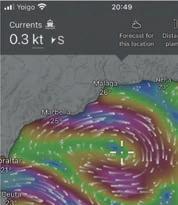


RIGHT
ABOVE LEFT
Moroccan ag
BELOW
Map of the area, and e
‘west’). Most of the time the wind is either between 0-10kts or between 20-30kts and it can pick up or die down quite quickly. Nice sailing winds of 10-20kts are rare, unfortunately, and the wind is o en quite gusty in this predominantly medium to high pressure area.
Tidal currents are negligible and there is only a small di erence of around 30-50cm between low and high tide. Nevertheless, going east along the coast, we generally experienced more than half a knot of current against us, up to 1.5kts at several capes. If you would like to avoid this, according to the ‘current’ tab on Windy, a great option is to sail east directly from
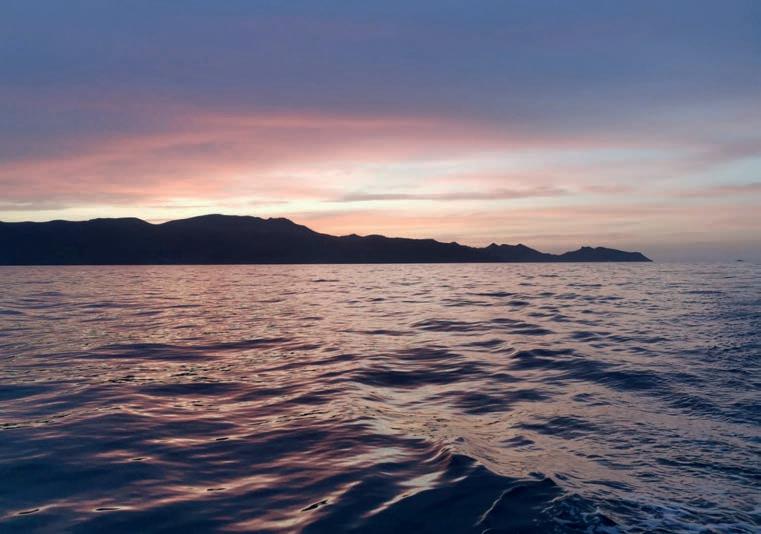
Gibraltar towards Melilla (about 145nm). is way you can pick up between 1 and 2kts of current in the right direction. If you sail closer to the coast on your way west, the current will run with you at up to 1kt (and perhaps more at the capes).
Since the depth and currents are variable along the Moroccan north coast, with a seabed of volcanic peaks and troughs, you can expect short, steep waves that do not make for the most comfortable sailing during windy conditions, and that give the Alboran Sea its reputation for being ‘brava’ or rough. It reminded me of the waves in the Dover Strait. Fortunately, we were going downwind, and it was just ne.
As opposed to sailing in the Dover Strait, there were very few buoys and hardly any shipping (just a couple of ferries near Melilla), yachts, jet-skis, or shing nets.
At the end of July 2023, the orcas were spotted in the Alboran Sea a few times, but generally they are known to be on the Atlantic side of the Strait of Gibraltar and there are hardly any reports of broken rudders east of the Strait.
Anchoring overnight is prohibited along the Moroccan coast as well as visiting the beach, due to migrants and tra cking. Night sailing isn’t allowed either but, since we needed to cover around 80nm to sail from Marina Smir to Al Hoceima, Uwe asked the Royal Gendarmerie at the harbour of M’diq for permission to
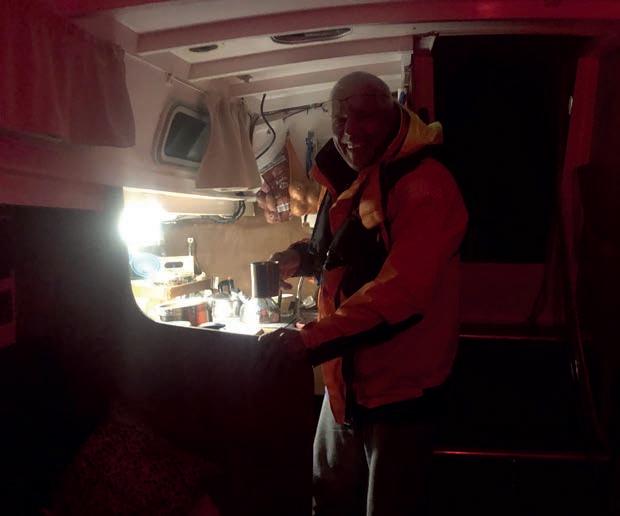
sail at night. ey rst said: ‘no’, but a er some explaining and a few phone calls we were granted approval. Morocco claims a 12nm territorial sea, so night sailing further away from the coast is no problem.
Except Ceuta and Melilla, the ports on the Moroccan coast are mainly used by motor yachts, with very few sailing yachts. Marinas are supposed to be busy during July and, especially, during August but, when we were there in early June, there was plenty of space. On the Navily app you will nd a few helpful reviews, including the ones from Uwe.

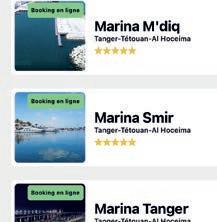


ABOVE RIGHT
Night sailing is not allowed in Morocco – make sure you get permission rst
ABOVE LEFT
Beautiful sunset while approaching Melillab
BELOW LEFT
Smart Marina app for Moroccan marinas
He found it quite hard to book several marinas as they didn’t answer the phone or reply to his emails. If your French language skills are up to it, you can easily book Marina Smir with the new Smart Marina app for Moroccan harbours. is app should become available in other languages too, in the future. e currency in Morocco is the Moroccan Dirham (MAD) with 100 MAD presently worth about 8 GBP. You cannot pay with a credit card everywhere (including Marina Al Hoceima, for example), so it is advisable to have some cash.
For Nemo, with a 10m loa, prices ranged from around 8 Euro per day in Melilla to 250 MAD (20 GBP) per day in Marina Smir. For longer stays in some marinas (Marina Saïdia, for example) it might be possible to negotiate the price. Diesel is inexpensive and prices were even lower in Ceuta and Melilla than in Morocco at 1,15 Euro / litre when we were there.
If your boat doesn’t have an onboard shower, select the marinas to visit carefully, especially for the ladies in the crew!
Most people we met spoke reasonable to good French or Spanish. English was spoken by some people too but to a lesser extent.
e northern coast of Morocco is a tourist area mainly for Moroccans only, as opposed to Brits or Europeans, and we found that the people were very friendly and easy going. We didn’t experience any hassle from beggars, ‘tour guides’ or aggressive salespeople, as is common in international tourist areas.
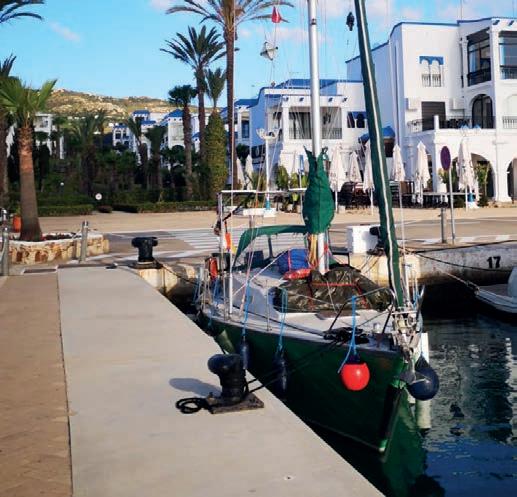
Of course, you do need to take into account some cultural di erences. Health and safety in Morocco are your own responsibility, so be careful on dirt roads and hiking trails, and mind what you eat and drink. Uwe advised me never to drink the Moroccan tap water without boiling it rst. e sounds are di erent too; besides the noises from nightclubs and seagulls, in some marinas you will hear the prayers broadcast from the many Mosques about ve times a day. Checking in and out of marinas can take some time and it probably doesn’t help at all to try to push the Moroccans to speed up. Nonetheless, they are very hospitable. Uwe arrived in Marina Smir on a Friday (CousCous day) and was invited by the marina sta for lunch. A er that, they were able to do his check-in swi ly. In Marina Al Hoceima we were invited for a cup of co ee at the ‘Capitain du Port’ and we had a friendly chat with him about where to eat, and about Morocco in general. Note that Morocco is on GMT+1, like the UK, so it is an hour earlier there than in Spain, including Ceuta and Melilla. e national beverage in Morocco is green tea with fresh mint and lots of sugar. e co ee is quite acceptable too, and, if you order a co ee in a bar or a restaurant, it will usually come with a small bottle of water.
Alcohol is legal in Morocco, but in limited quantity and it might be viewed as o ensive by traditional Muslims when consumed in public, so discretion is advised. Uwe had plenty of it on board and customs didn’t comment on it. Some (more luxurious) restaurants, that hold a

special licence, will serve alcohol, and we had some excellent Moroccan red wine: ‘la Cuvee de Terroire’. Carrefour (which you will only nd in larger cities) and Marjane are the only supermarkets in Morocco that sell alcohol. However, you will not nd it in their main shops but via a separate entrance. Also, there are ‘Magasins d’alcool’ where you can buy it. During the holy month of Ramadan, alcohol sales are prohibited, and you may nd that restaurants that sell it are closed during the day.
e documents needed are your passport with a valid visa (if necessary) and your yacht registration papers. Insurance papers, as commonly demanded in Spain and Portugal, are not
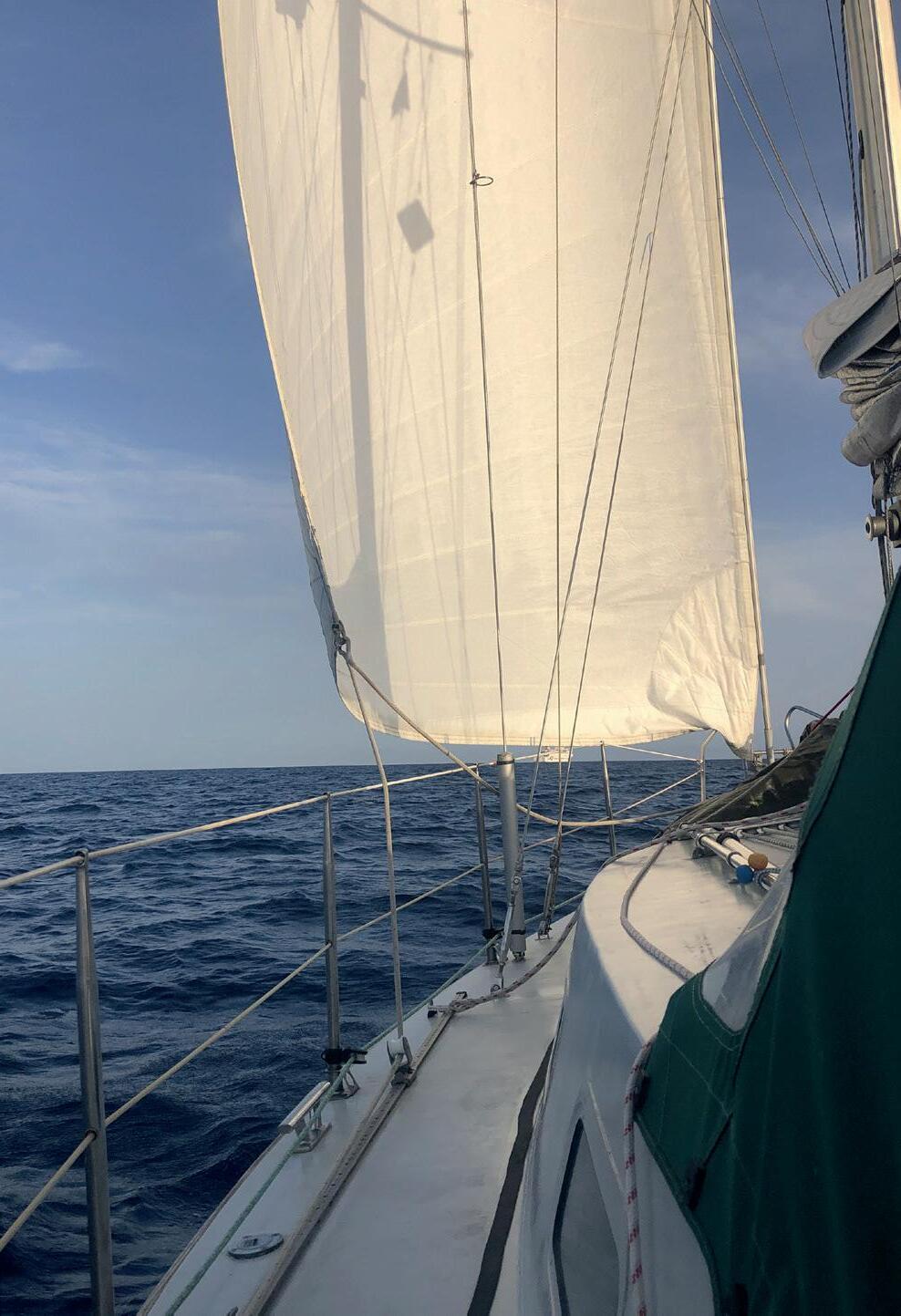
requested. Upon entry, customs, immigration, or the ‘Gendarmerie’, and the ‘Capitain du Port’ will turn up at your boat and they will examine your papers. ey may take them to their o ce for checking and photocopying.
When day sailing from and to the same marina, typically the process of check-in and check-out must be repeated each time you leave and enter port. Your passport will be stamped on each occasion. If your stay is for longer duration and you have built up a good relationship with the o cials, they might eventually become less strict about this rule. When planning your trip from another country into Morocco, check whether the port that you are sailing to is a port of entry. e larger ports of Marina Smir, Al Hoceima and Saïdia are all ports of entry.
In our experience check-in and check-out lasted between ve minutes (early in the morning in Al Hoceima) and an hour (middle of the day in Smir). Although on one occasion the police moved several of our items to check for drugs or rearms, and made a bit of a mess, on another the police and customs o cers even took o their shoes before boarding and they were always friendly and respectful.
Please note that weapons and drones are prohibited in Morocco and, if you bring one, the police will take it in custody for the duration of your stay. If you have one on board it is best to declare it immediately at check-in.
As a woman, a great part of my ambivalence about sailing in Morocco had to do with wondering if I could still behave like my normal self there and about the hassle of

a ‘dress code’ I would have to put up with. Although I did adapt a bit in order not to stand out too much or o end anyone, this wasn’t as bad as I had expected.
On the beach, girls and women typically wear leggings, long sleeves, a ‘raincoat’ type of ka an and most wear headscarves, whereas men, boys and young girls before puberty look the same as at home, though more tanned. I did wear my bikini once, on a very quiet beach. As a foreigner, I think I wouldn’t have o ended anyone if I would have worn a normal Western bathing suit on a busier beach. When going into towns, I felt comfortable wearing (not too short) shorts and a short-sleeved t-shirt. e Moroccan women were all dressed either in long trousers (even skinny jeans) and long sleeves with a jacket, or in their traditional attire, a ka an and usually a headscarf. In the marinas there seemed to be fewer women with headscarves than in the towns, and there was a young lady working at customs in Marina Al Hoceima without a headscarf and in a nice uniform.
I made an e ort not to make eye contact with anyone that I wasn’t talking with, and to go about my business without paying too much attention to other people. I had the feeling that doing otherwise would be taken as improper or o ensive. In Spanish culture this applies also, although to a lesser extent.
I didn’t feel uncomfortable as a woman, and, although it’s probably easier to have a man on board when going sailing in Morocco, I think I would feel safe too if I went there singlehanded or with a women-only crew, especially in the marinas.
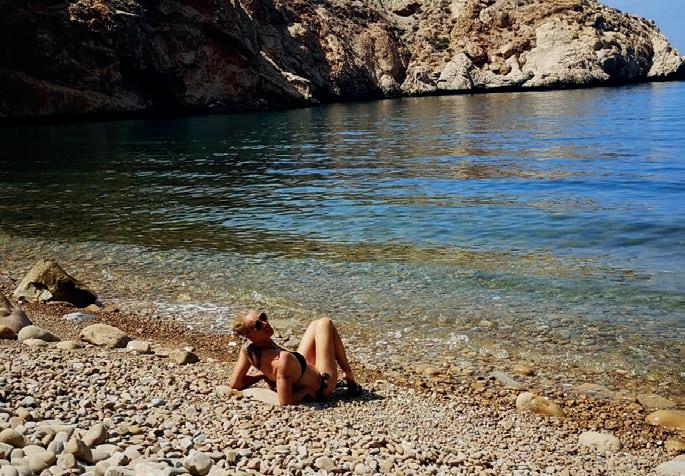
In Morocco, there are huge taxi stations, where you can take a shared taxi with a maximum capacity of six passengers to most places. A 100km ride typically costs around 60 MAD. Please note that your luggage may need to travel strapped to the roof! ‘Petit taxis’ are the Renault 4 city version of these, with a maximum capacity of three passengers. Private taxis are quite a bit more expensive, but you will have more space and they will not make detours and stops for other people. To use the internet, you can get a Moroccan sim card for just 10-30 MAD. Please note that there is one type of phone credit for just using WhatsApp, Facebook and Instagram and di erent types for sur ng the internet or for making phone calls. You can buy these at most mini markets and kiosks and, if you ask them, the sta will be happy to help you activate the sim card and charge the credit to your phone.
ABOVE RIGHT
Cheating Moroccan culture – wearing my bikini on a quiet beach
ABOVE LEFT
e many stamps in my passport
BELOW

Everywhere we visited there were stray cats; on the street, at the market and in restaurants. In Melilla one even jumped aboard the neighbouring boat. ey were not too shy in most places and everywhere we saw containers with water and people feeding them. When we rented a car and I was waiting with it at the entrance of Marina Al Hoceima for Uwe, who was ‘stuck’ at customs, preparing for our early check-out the following day, a very formal looking police o cer came up to me and warned me to chase the cats away from under the car before driving o . e cats didn’t seem too hungry, and they were quite picky about the di erent scraps we fed them. In the market we saw live chickens that you can select to be killed and cleaned in front of you. After my stomach upset from watching this had passed, we had a deliciously spiced grilled chicken in one of the restaurants, the scraps of which we shared with a cat, of course.
Driving from Al Hoceima to El Jebha, we saw lots of sheep in pastures, donkeys being ridden or by themselves, and we even saw a sheep in the back of a pickup truck.
Morocco seems like a di erent world, and a very interesting one, de nitely worth visiting, as long as you are not in a hurry. We hope that you will be encouraged and better prepared to have a great time sailing along the Moroccan north coast thanks to this ‘user manual’. Stay tuned for more articles in the coming issues of Sailing Today about the best places to visit on your way.


If you are looking for a fascinating showcase of pro sailing to fill the Cup-shaped hole in your life, look no further than the Vendée Globe. Georgie Corlett-Pitt profiles some key players…
The Vendée Globe is a solo, non-stop, unassisted 24,300nm race, in which 40 skippers representing 11 nations are set to battle their IMOCA 60s around the globe. The race record stands at 74 days, 3 hours, 35 minutes, set by Armel Le Cléac’h in 2017, and there is of course the hope of bettering that.
But the Vendée Globe is about way more. It requires preparedness, ability to deal with the unknown, plus limitless grit and determination. The magnitude of what sailor and boat are taking on – facing the most extreme elements, entirely unaided – is brought home by the fact that on three separate occasions in past editions, skippers have had to perform mid-ocean rescues to save the life of a fellow competitor. Simply completing the race elevates you to sporting legend status – only 89 sailors have ever achieved that. 2024-25 will be the 10th edition
(the first was 1989-90), and follows an explosion of interest in the 202021 race which saw 33 skippers take part and which ran against the backdrop of the pandemic. This time around, record-sized crowds are expected to Les Sables d’Olonne to cheer the record-sized fleet off for the start on Sunday 10 November.
The fleet features the latest generation
ABOVE LEFT
The IMOCA fleet is now a fascinating mix of different generations of foiling design
ABOVE RIGHT
An example of one of the older generation IMOCAS; Oliver Heer's Tut Gut Racing
BELOW Violet Dorange is one of six female entrants
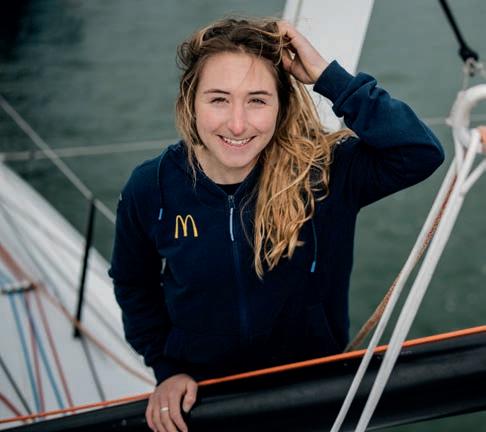
of foiling IMOCAs – the third edition in which foilers will have taken centre stage. Working within the ‘box rule’ that governs the class (sails, mast and boom, runners and keel-jack are onedesign) advances include improved structural integrity and more forgiving, ‘tolerant’ foils that help the boat remain airborne for longer in marginal or changeable conditions. Seeing skippers operating within the cocoon of their covered cockpits is now de rigeur; many boats now also have bespoke ergonomic nav stations designed to maximise comfort for the skipper. But for all that opportunity for teams to develop designs and for skippers to build experience, piloting these mostdemanding of hi-tech beasts is still as big a challenge as ever; navigating at speeds of 40+kts across open ocean is not without risk for sleep-deprived solo skippers, for whom managing the limits of how hard to push the boat and themselves is a fundamental challenge; the physical and mental
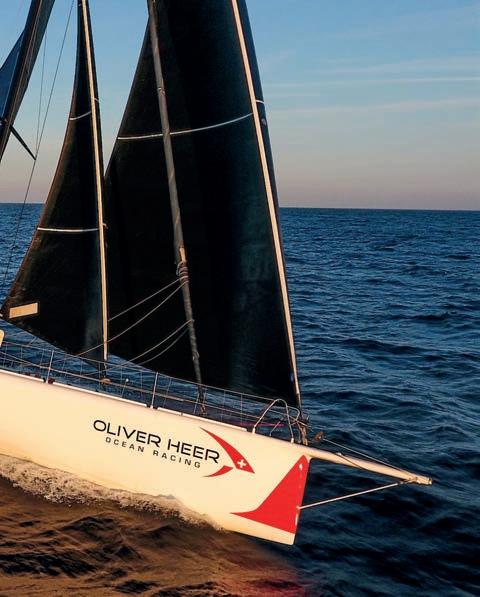
strain of that barely fathomable.
Of the elite bunch taking on the challenge, 25 hold the advantage in that this isn’t their first Vendée Globe.
The oldest among them is 65-year old Jean Le Cam (Tout Commence en Finistère-Armor Lux), whose pedigree as five-time veteran of the race is undeniable and includes a fourth place in 2020-21, after rescuing fellow competitor Kevin Escoffier en route.
Among the 15 debutants, Violette Dorange, skipper of DeVenir, is the youngest at the age of 23, ushering with her all the enthusiasm of youth underpinned by solid results in her Figaro campaign, to compete in a race she describes as a childhood dream.
Thanks to the rigorous qualification system – introduced by the organisers since Vendée Globe entries were capped at 40 – a number of different skippers have come to the fore over the last two years. And, in a break from tradition, not all of them French.
IMOCA class president, Antoine Mermod has attributed the close competition within the fleet to the collective efforts of sailors, designers,
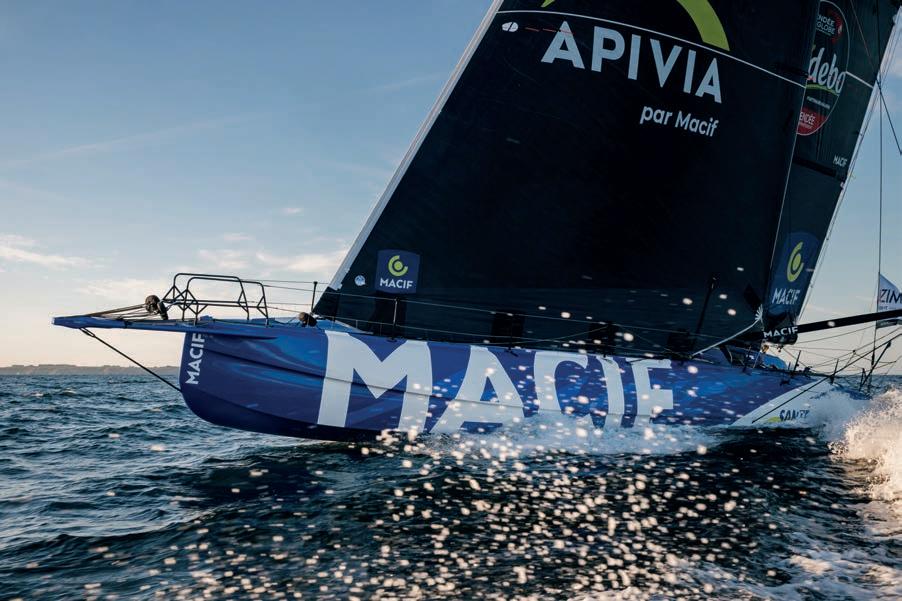
builders and support teams in raising the calibre across the board.
Back in 2022, 44 Vendée hopefuls set about clocking up the offshore miles in a series of both solo and crewed races; in the end 42 made the cut. With 13 of those commissioning new boats automatically awarded places (a move intended to fuel innovation in the fleet), the next 26 qualifying skippers also got the nod, leaving one final wild card place to be allocated. This eventually went to Switzerland’s Oliver Heer, meaning Briton James Harayda and Frenchman François Guiffant, missed out. Despite protestations from 26 of the 40 other skippers to up the entries to 42, organisers remained adamant about their criteria.
For Heer, skipper of Tut Gut Sailing, who cut his teeth as a boat captain and co-skipper for Alex Thomson, squeaking through qualification was a dream come true, especially after a dismasting in last year’s Transat Jaques Vabre

ABOVE AND BELOW RIGHT
Charlie Dalin is one of the hot favourites for this edition
BELOW RIGHT
Oliver Heer squeaked through qualification
cost him double in also missing the Retour à la Base qualifier. He will sail one of several ‘daggerboard’ boats in the fleet. Despite not having the obvious speed advantage of foils, these older generation IMOCAs possess a degree of robust reliability that can be advantageous in certain sea states and wind conditions.
Nonetheless, it’s foils that rule at the front of the fleet, where French heavyweight Charlie Dalin is arguably the hottest prospect, on paper at least; fresh from victory at September’s Défi Azimut and notable for winning the last Vendée Globe on the water (second overall on corrected time to Yannick Bestaven onboard Maître Coq who stopped to rescue Kevin Escoffier, whose boat suddenly sank in the Southern Ocean).
For this cycle, Dalin has a new Guillaume Verdier design IMOCA, which he credits with good performance across the wind range, and says is ‘tolerant’ of transitional conditions; MACIF Santé Prévoyance’s colours have
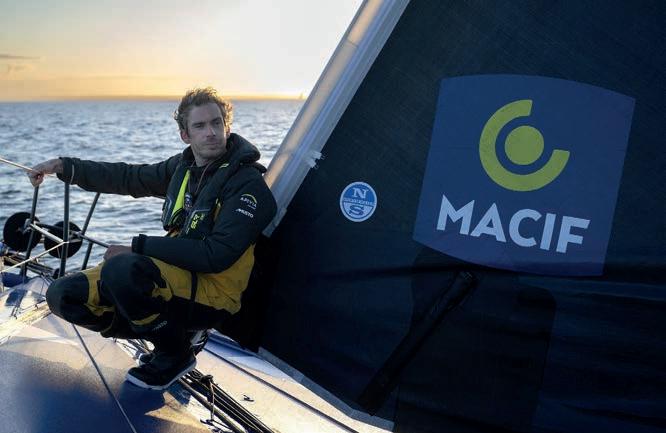
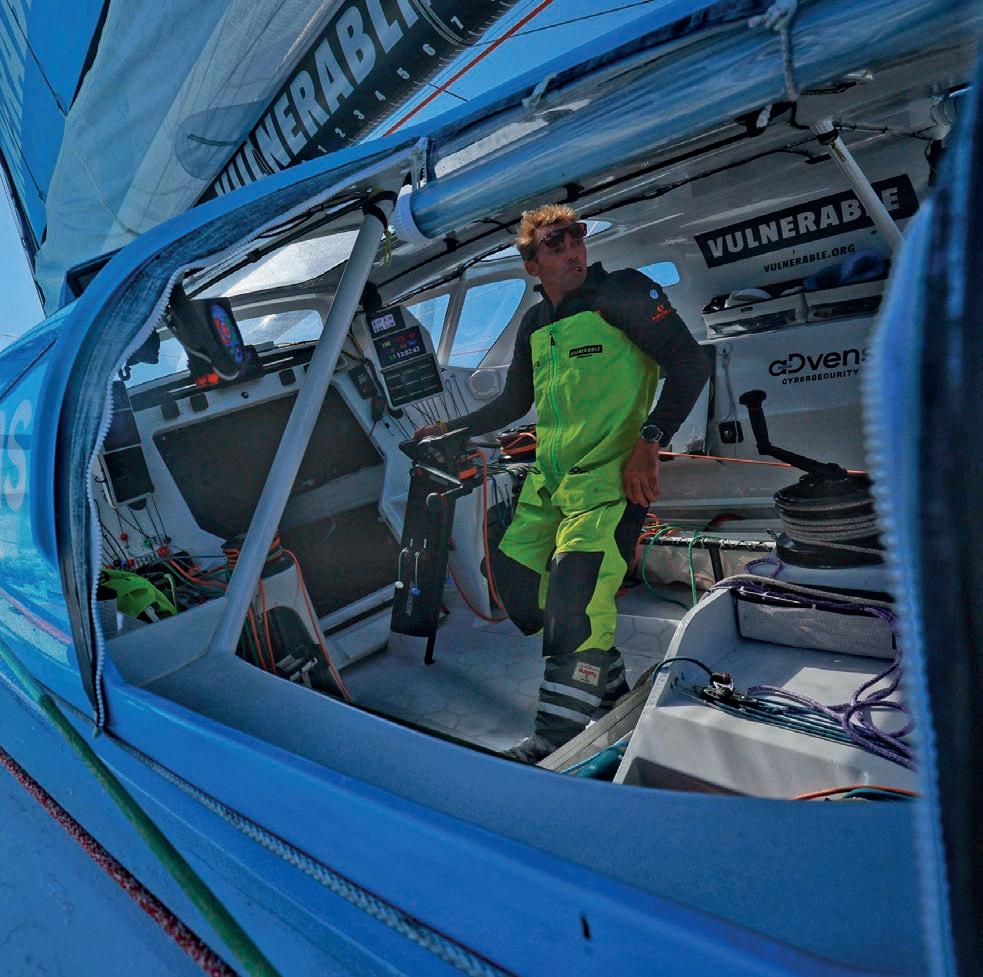
secured a fistful of firsts at other key IMOCA events, including an epic victory of 300+nm in the solo New York-Vendée race in June this year.
Yet Dalin is the first to admit that getting on the podium in the IMOCA class is an increasingly difficult task, with an influx of competitive teams muscling in on the top places. So it was little surprise that he announced there was still more fine-tuning work to be done when he stepped ashore after the Défi Azimut.
Cited by Dalin as his two stalwart competitors are fellow Frenchmen Jérémie Beyou (Charal) and Thomas
found in this campaign with his Sam Manuard designed Charal 2 – and hoping to finally lay the disappointments of Vendées past behind him: two retirements, plus a 13th after returning to the start to repair damage in 2020, re-starting nine days later. That said, a third (in 2016) does show this seasoned campaigner has what it takes.
Thomas Ruyant worked hard to come back from the disappointment of abandoning his first Vendée Globe in 2016, to finish a highly creditable sixth in 2020. That trajectory of determination continues and is
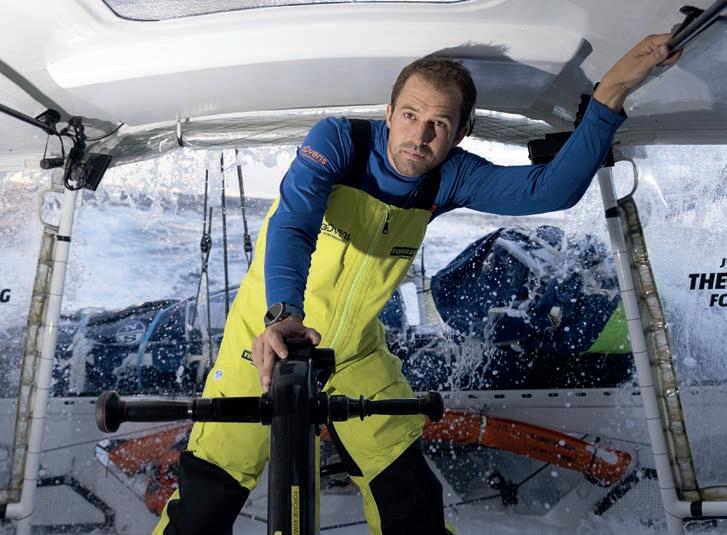

ABOVE LEFT
Thomas Ruyant is expected to be at the head of the fleet
ABOVE RIGHT
Jerome Beyou and Charal is a seasoned pro who will be aiming for a podium place
BELOW LEFT AND RIGHT
Sam Goodchild is one of the leading British hopes aboard Vulnerable
reflected in his results, most recently winning the Transat Jacques Vabre, Bermuda 1000 Race, and the Route du Rhum with his new Antoine Koch/Finot Conq boat (Vulnerable) that had barely touched the water. In an IMOCA first, Ruyant has also set up TR Racing and partnered with Brit Sam Goodchild – who competes on his old boat (2019 exLinkedOut) – the intention being to pool knowledge and resource towards the ultimate goal of winning the Vendée Globe. Slightly confusingly, both boats share the same moniker of Vulnerable, named for a campaign by sponsor Advens to change perceptions around ‘vulnerability’ for both people and the planet.
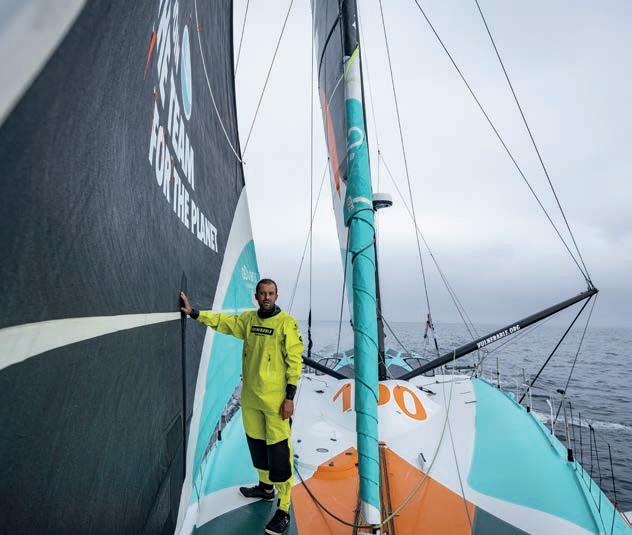

Partnering with Sam Goodchild seems to have been a smart move for Ruyant. In the countdown to his debut Vendée Globe, the British sailor has carved a reputation as a breakthrough talent, topping the IMOCA Globe Series rankings in 2023 and achieving five consecutive podium finishes in five races, most recently finishing second in the Défi Azimut. Even a dismasting in the New York-Vendée race did little to dent his momentum. The affable 34 year old is known for his calmly determined approach and a natural ability that has awed many of his more seasoned competitors, could well see him disrupt the Francodominated status-quo in a way that
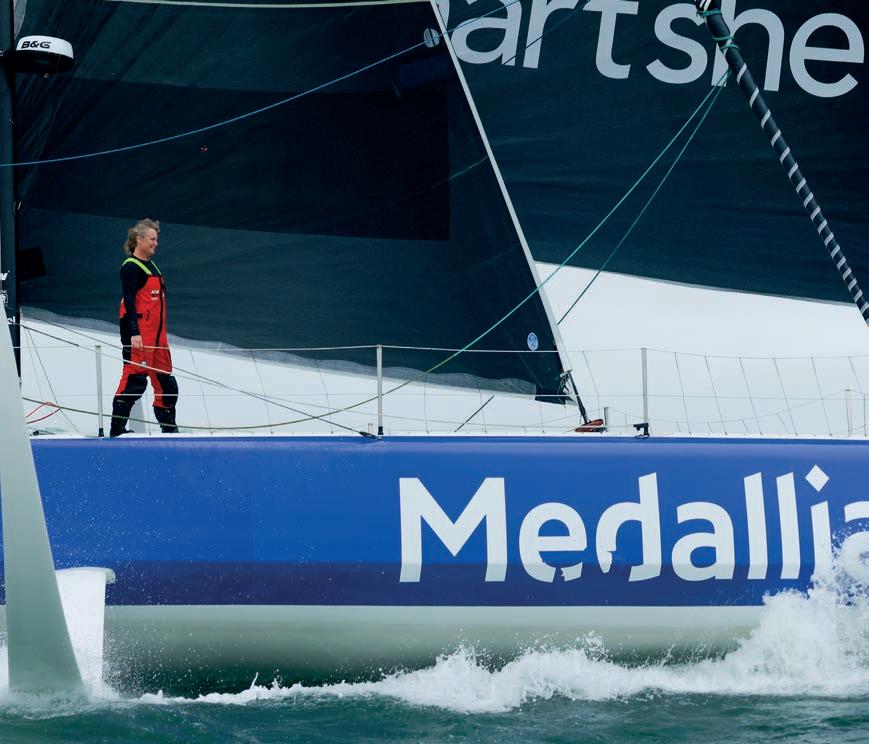
we haven’t seen since Alex Thomson finished second and third in the 201617 and 2013-14 races respectively.
Another Brit who has long carried that hope is Sam Davies, sailing InitiativesCoeur 4, a 2022 Manuard design for this, her fourth Vendée Globe. She will be hoping to better her fourth place in 2008. The last edition gave ample opportunity to prove her tenacity when a UFO-collision shortly after Cape Town forced her to officially retire from the race, yet she philanthropically continued her circumnavigation to fundraise for children with heart issues. Since then, five seems to have become her lucky number – finishing in that position in many of the IMOCA events of the last two years, and you can’t argue with

ABOVE
Pip Hare aboard Medallia
BELOW LEFT AND RIGHT
Sam Davies brings masses of experience with her- this is her fourth Vendée
the miles she clocked up in qualifying top of the table for this edition.
The third and final sailor flying the flag for Great Britain in this edition is Pip Hare with her ‘never stop chasing your dreams’ ethos. Proud to have been the eighth female to ever complete the Vendée Globe, Pip finished 19th in the 2020 edition. This time she is back with a foiling boat to replace her previous 20-year-old non-foiler, plus a fully professional support team for the first time drawing on top UK talent – and of course, her honest-asit-gets outlook on racing that keeps her fans gripped. A ninth in the recent New York-Vendée race saw her break into the top 10 and points to her potential to finish well this time.
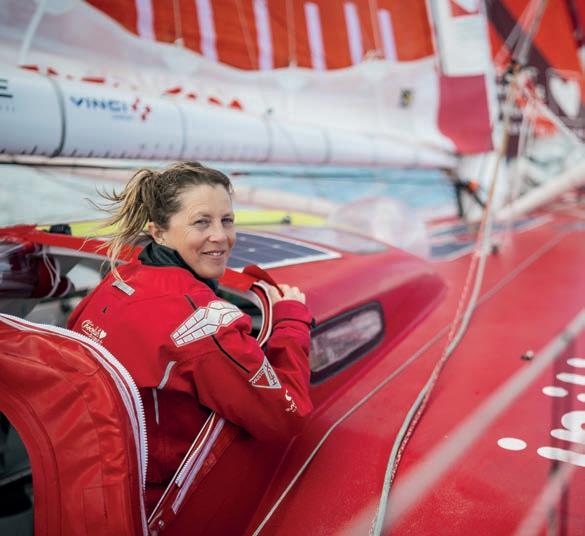

Carrying the hopes of Germany –where he is now a household name – is the charismatic Boris Herrmann. A fifth in the last Vendée Globe stands him in good stead – a collision with a fishing boat just 90 miles from the finish having put him out of overall contention; he has spent time since clocking up the miles – and fans –skippering a memorable Ocean Race campaign on his 2022 VPLP designed boat Malizia-Seaexplorer; lapping the globe once already means he knows it, and its limits, well. Having chosen not to undertake a summer refit, unlike most other teams, he has spent the last few months away from IMOCAs, hoping to return refreshed.
Herrmann acknowledges that his campaign is different, more akin to an ‘adventure’ than the world’s toughest solo race – yet he doesn’t rule out his ability to win. He played

maverick with his choice of routing on the New York-Vendée, and was rewarded with a second place – which came straight after another second place in the Transat CIC, pushing him to the top of the IMOCA Globes Series rankings. If he wins, it will be victory in his own style.
Among the other contenders for this edition are Nicolas Lunven, sailing Holcim-PRB while Rosalin Kuiper takes time out to have her first baby; this may be Lunven’s first Vendée Globe, he has a wealth of crewed round the world experience, and ranked second on qualifying mileage, and new foils promise greater transitional capabilities for the 2022 Verdier-design.
Fellow Frenchman Yoann Richomme on Koch/Finot-Conq designed Paprec Arkéa shows promise with his wins in The Transat CIC and the Retour à La Base in late 2023.

ABOVE LEFT
Boris Herrmann took fifth in the 2020 Vendée
ABOVE RIGHT
Holcim PRB up on her foils
BELOW LEFT
Boris Herrmann's Malizia striking a dramatic pose
BELOW RIGHT
Nicolas Lunven aboard Holcim PRB
The successful Class 40 and Figaro sailor is known for his fast boat that performs well in tough sea states. Swiss sailor Justine Mettraux, on Teamwork-Team SNEF is also not to be ruled out, with a good run of top finishes in the run up to this, her first Vendée Globe, which she is sailing on a 2018 VPLP boat, ex-Charal, having worked closely with Jérémie Beyou in the run up. For every sailor, the journey to the startline has been a battle, and adventure, a mission to secure funding, develop equipment and of course, to qualify themselves and their boats.
There are those who have had more of a journey than others this edition. Notable among them are Clarisse Cremer, who was dropped by her sponsor Banque Populaire after they

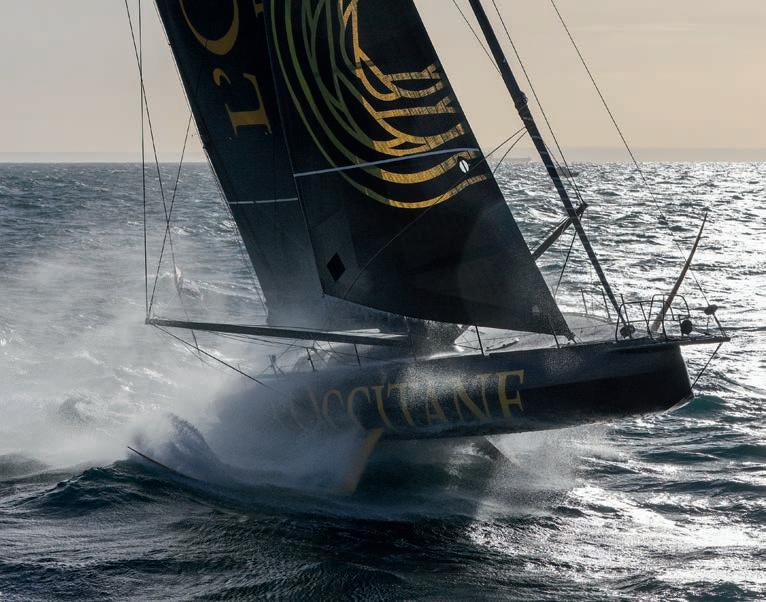
raised doubts about her ability to qualify due to her taking maternity leave. Happily, with support from L’Occitane en Provence, and Alex Thomson as mentor, she will indeed take her place on the startline for her second Vendée Globe attempt. Having achieved 12th in the last edition, the first female to finish and the fastest ever female to circumnavigate the globe solo, she will be one to watch.
For Jingkun Xu, sailing Singchain Team Haikou, his campaign represents a foray into new waters, as the first Chinese entrant to the Vendée Globe in a campaign he has built from scratch; he is proud to have had Mike Golding as a mentor and co-skipper, and hopes he will inspire youngsters in China to follow his footsteps. Xu also has the challenge of having lost an arm in an accident as a child – although he is not alone on this: Frenchman
Damien Seguin (Groupe Apicil) shares the same disability; for him this will be his second Vendée Globe after finishing seventh in 2020-21. You can’t help but feel for twotimes Vendée veteran Romain Attanasio, whose boat Fortinet-Best Western suffered a dismasting in the recent Défi Azimut, while racing in 13th position, on, of all days, Friday 13 September. The team were focussing all their efforts on finding and fitting a spare mast, in a race against time ahead of the start.
As the clock ticks, it serves as a reminder that this is the Vendée Globe – sailing’s toughest event –and anything can happen. When the 40 IMOCAs head off for their tour around the three Capes and back in just a few weeks time, we at STYY HQ will most certainly be glued: www.vendeeglobe.org/en

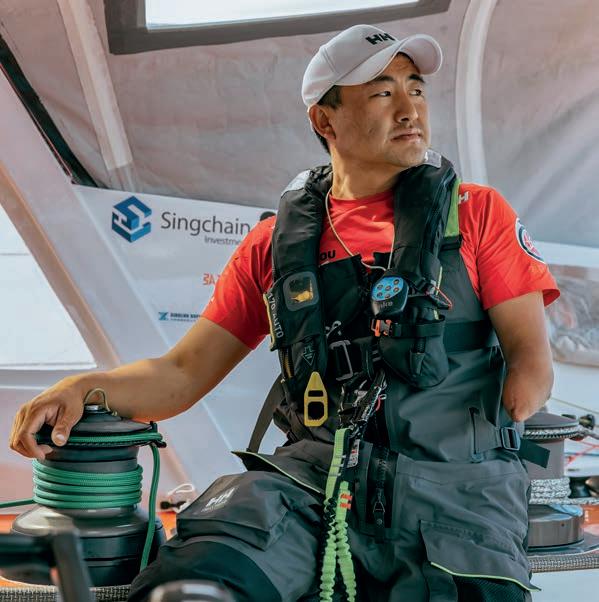
ABOVE LEFT
Clarisse Cremer's L’Occitane en Provence
ABOVE RIGHT
Jingkun Xu sailing Singchain Team Haikou
RIGHT
Yohanne Richomme's Paprec Arkea
BELOW LEFT
Clarisse Cremer was dropped by her sponsor Banque Populaire after taking maternity leave but is still in the fight thanks to finding a new sponsor, L’Occitane en Provence
BELOW RIGHT
Romain Attanasi's boat Fortinet-Best Western

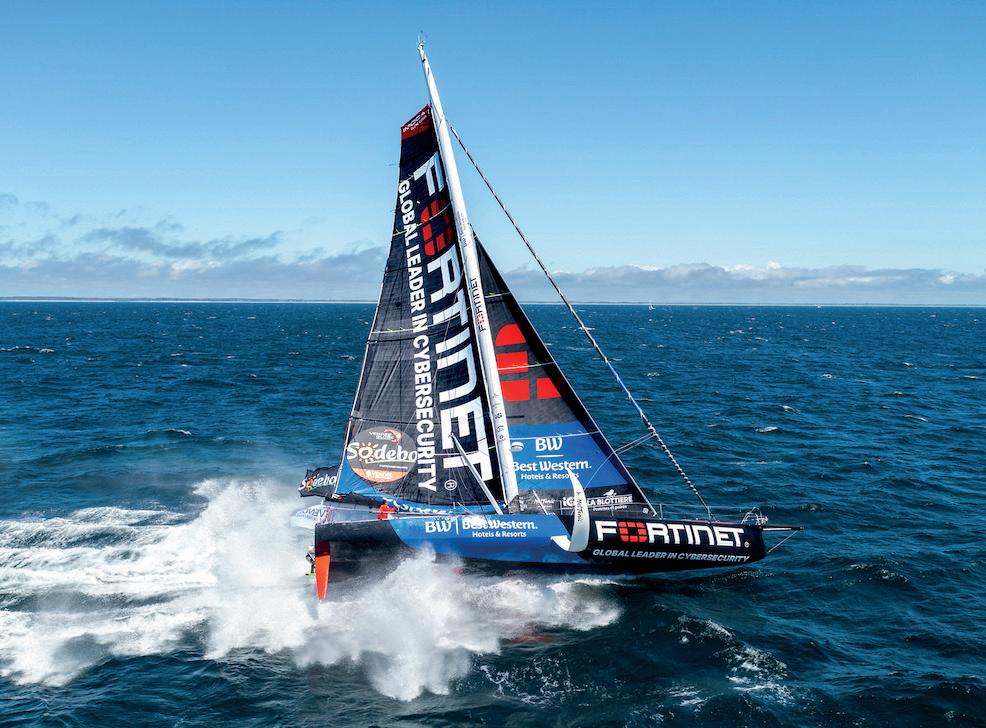

The Jeanneau Sun Odyssey 350 is the French giant’s ‘entry level’ boat and, as Sam Jefferson discovered, size isn’t everything
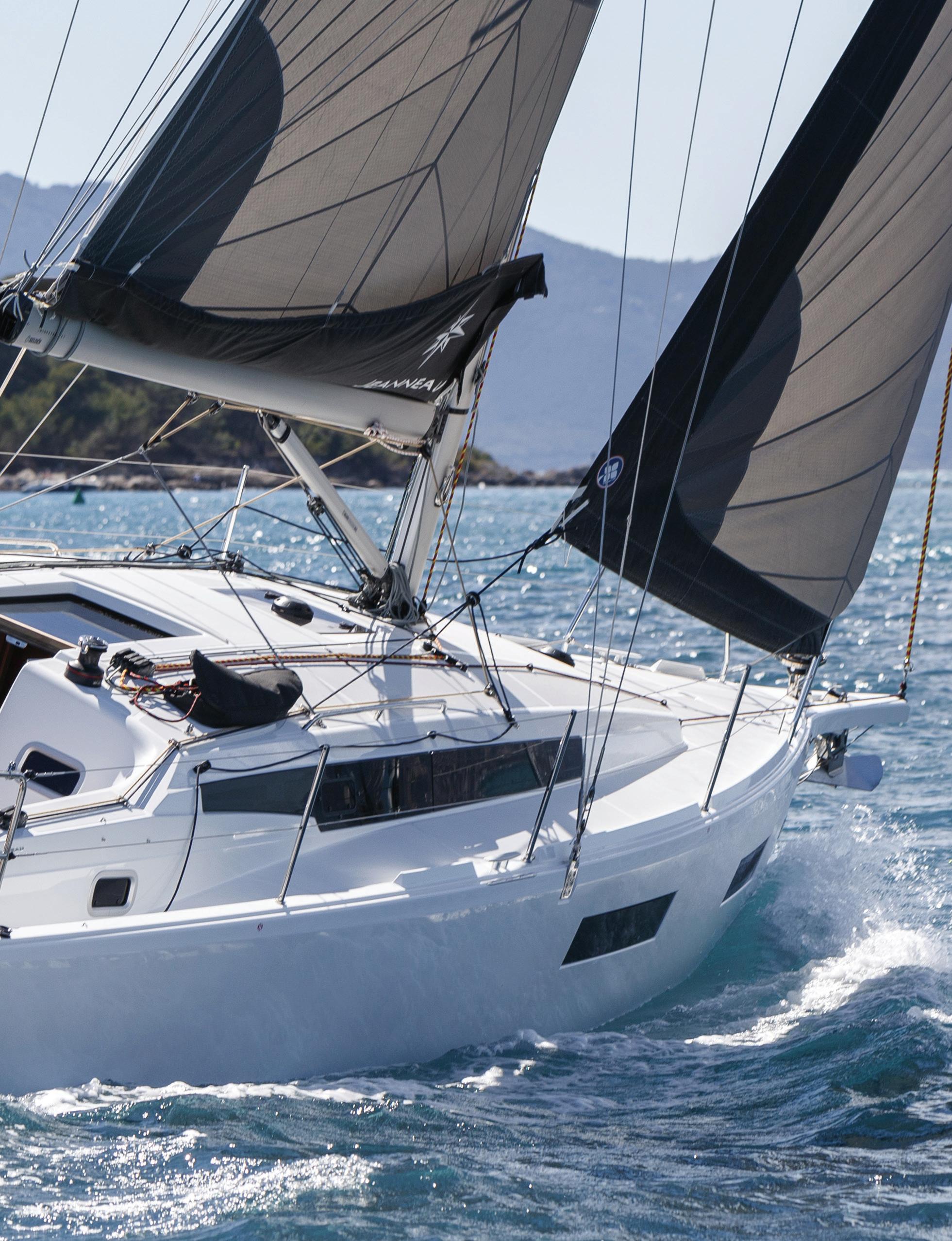
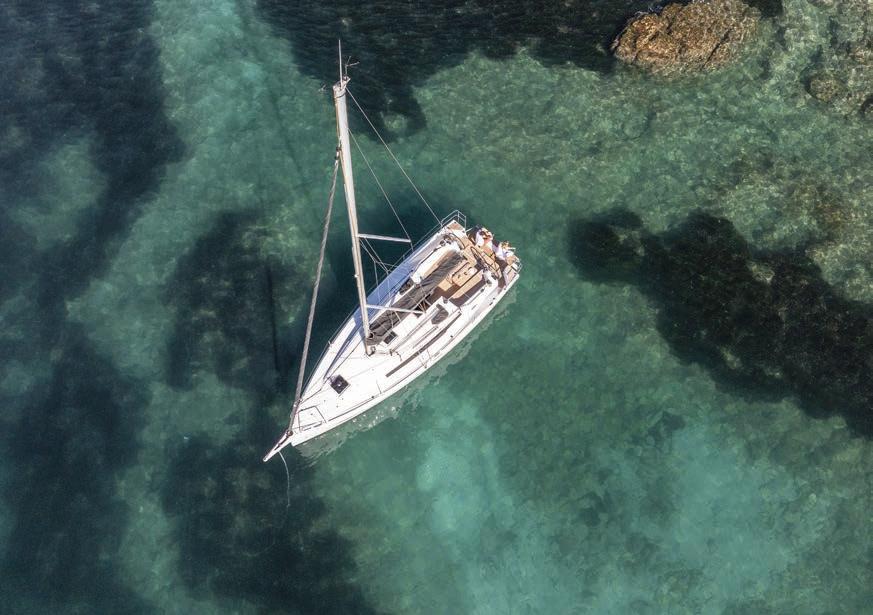
The days when nostalgia seemed passé are gone. Remember when we had weather instead of a series of mini catastrophes? Gone. Remember when a fresh-faced Labour politician told us that things can only get better? Long gone. Ok, lets have another go –remember when a 35’ yacht was considered large? Yes, long gone. The cold, hard economic truth is that the profit margin on a 35’ yacht is modest to extremely modest. A 50’ boat requires only a small percentage of extra labour and expense in fit out compared to the high mark up on the sale price. Thus, a 35 footer is
becoming an endangered species. Yet this endangered species is still on the scene albeit demoted to the title of ‘entry level’ yacht. Big manufacturers are aware that if they cut off the supply line of small boats to get people into sailing, they risk killing the market altogether. True, some new to sailing seem happy to take the plunge and buy a 50’ boat with no experience but we’re not all that crazy. Jeanneau is aware of this, so here we have exhibit 1: the Jeanneau Sun Odyssey 350, a genuine real deal 35 footer that replaces its popular Sun Odyssey 349 which has been running for almost a decade now and proved a big hit. The concept for the 350

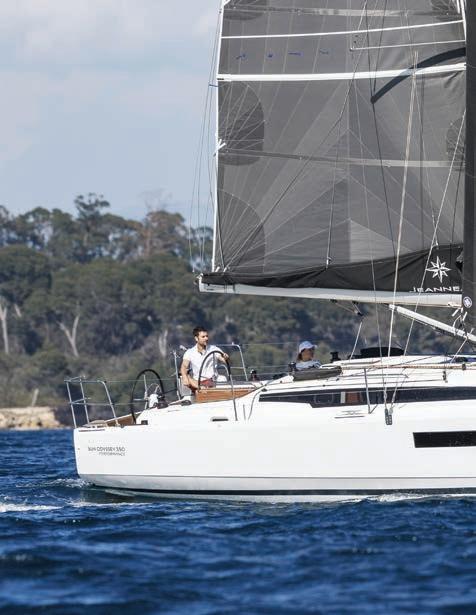
ABOVE LEFT
The option of a swing keel makes this a very versatile yacht for the tidal waters of the UK
ABOVE RIGHT
Boxy, aggressive lines give the boat a very modern look
BELOW LEFT
The aft sections are marginally broader than the 350’s predecessor, the 349
BELOW RIGHT
The bow sections are full, allowing for increased interior volume forward
is not wildly different from its predecessor; this Marc Lombard design has precisely the same hull length but is 15cm beamier. As you’d expect given modern, the boat has fuller bow sections than its predecessor which further boosts volume. Taken alongside the old 349, the looks are more aggressive and dramatic – there’s a more defined chine aft and the boat just has a more purposeful feel. The good news is that Jeanneau has retained the option of a hydraulic swing keel – a rarity on smaller boats like this and a real boon for tidal sailors. This is not a radical boat but it is bang up to date as you’d expect. The boat has a decent sized rig
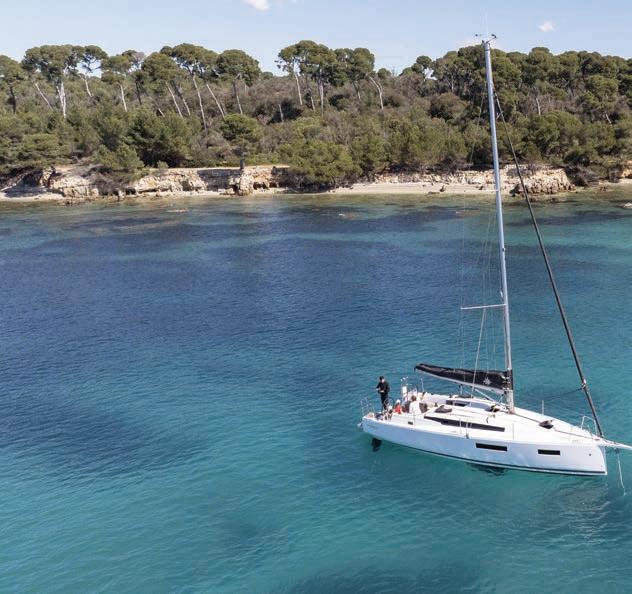

with the mast set slightly further aft than its predecessor. This boosts the size of the foretriangle while moderately reducing the boom length. There is a fixed sprit with integrated anchor roller for your Code 0 or asymmetric and the choice of a self-tacking headsail if you’re feeling particularly lazy. The mast is a twin spreader backstayless affair and it is therefore possible to boost the boat’s performance potential by upgrading to the sports rig, which includes a square topped mainsail for extra power. In terms of running rigging, the mainsheet is set up on a bridle on the coachroof and works on the German mainsheet system, while the halyards are led back to a pair
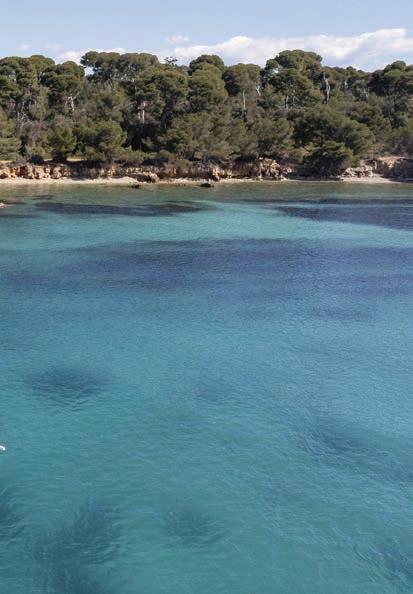
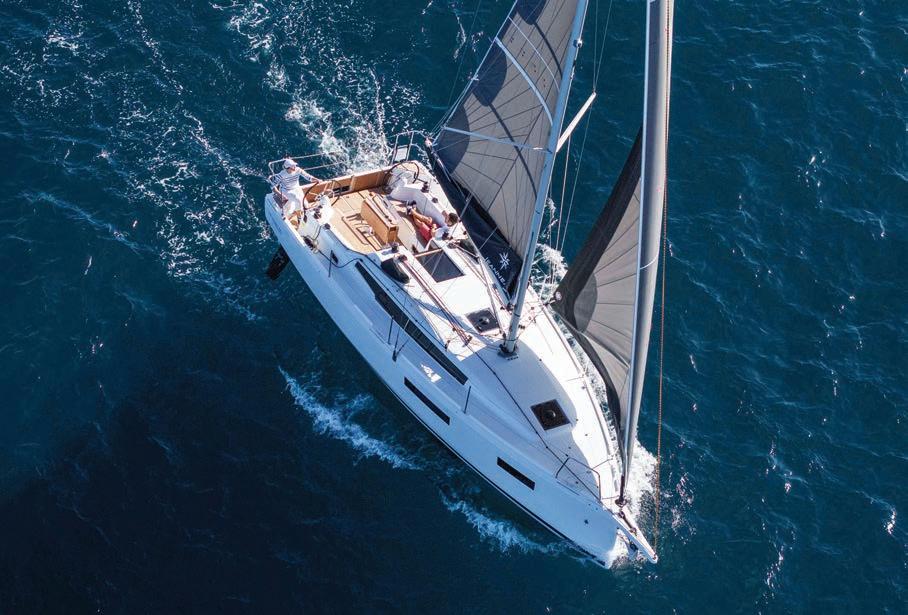
of winches on the coachroof, and there are a pair of winches in reach of the helmsman for the headsails. In recent years, Jeanneau has been very proud of its clever side deck walkways – this sounds rather a silly thing to be proud of but it is a thing of beauty. Basically the side decks become a very defined walkway as you move aft, sloping down well below the toe rail to create a good waterway when there are sprays and as you get aft, this means that you can actually walk round the side of the wheel into the cockpit instead of clambering across the coamings. It sounds like a small deal but in the world of production yachts, believe me, it becomes a big deal. Anyway, the company has introduced this
ABOVE
Performance was impressive in light airs
BELOW
The cockpit had a good feeling of space
feature across its Sun Odyssey range and it’s not that difficult on a 49’ yacht with masses of beam aft. In a 35 footer, it becomes a good deal more challenging and it perhaps explains why the 350 is 15cm wider aft than its predecessor, the 349. Anyway, it has been achieved and works very well so, chapeau to the designers presented with that particular challenge. Aside from that, the extra width aft means that there’s plenty more space. The cockpit seats six with ease and there is a nice slope to the cockpit coaming. The bathing platform is broad and encloses the cockpit when raised, and there are deep lockers beneath the deck aft and a shallow
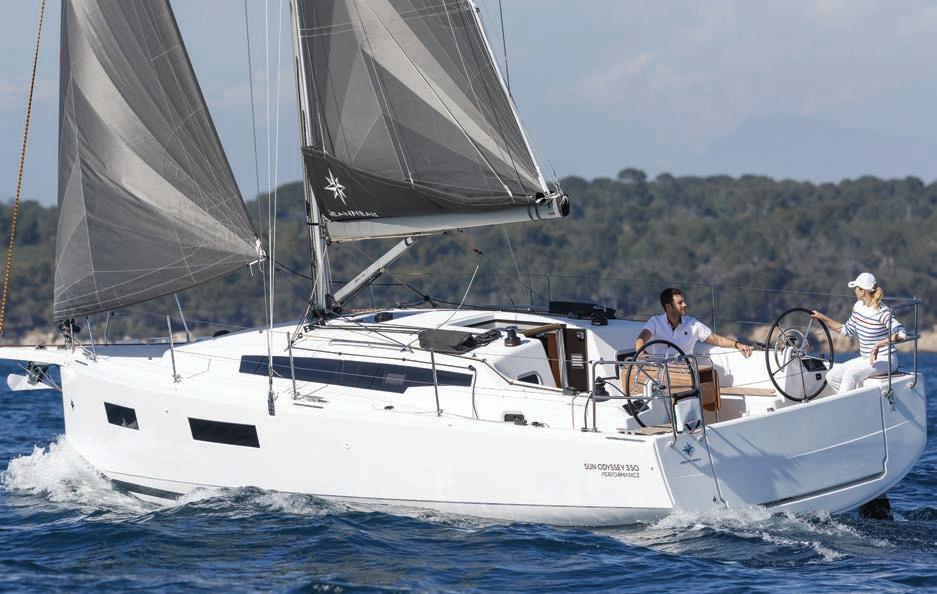

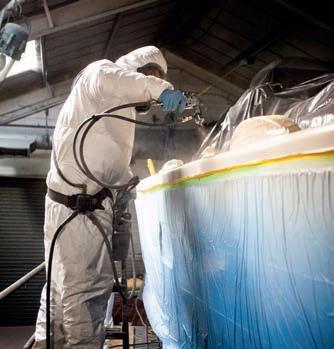

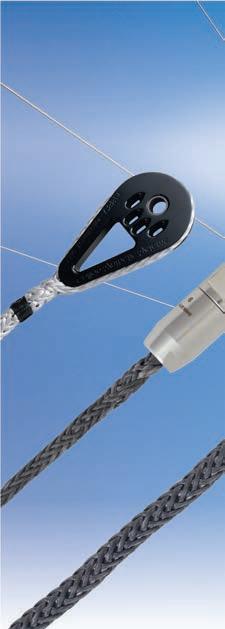

All types of yacht refit and repair: Sprayshop & hull finishing
Marine engineering & electronics
Spars, rigging, ropes & splicing
GRP repair & modifications
Teak decks, joinery & classic restorations
Stainless repair & fabrication
Cruising & race preparation & support
Fox’s Marina & Boatyard, Ipswich, Suffolk, IP2 8SA +44 (0) 1473 689111 foxs@foxsmarina.com foxsmarina.com

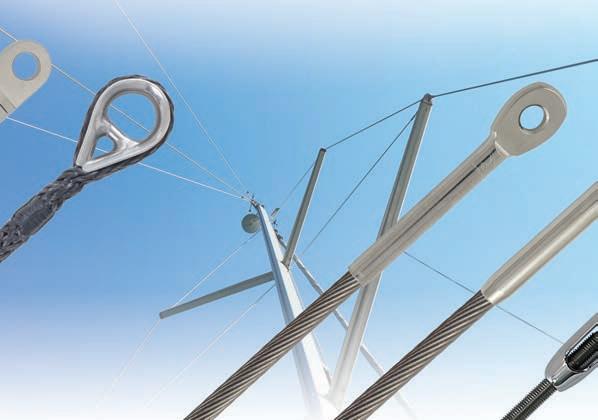

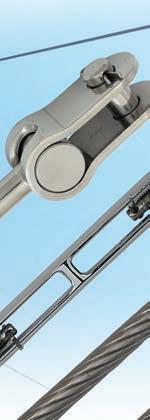

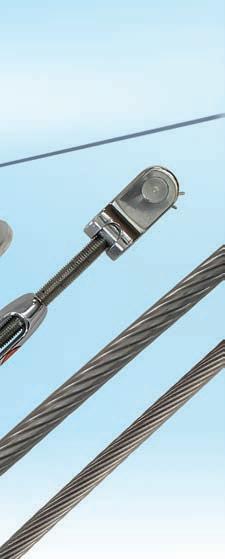

locker under the seat to port. On the two cabin version this becomes the entrance into the workshop.
Down below on a 35 footer is unlikely to be a wildly innovative space given the constraints of size and what, necessarily, must go into that space. Jeanneau offers you the choice of two or three cabins, the second aft cabin being sacrificed to make way for a workshop space if that’s what you’re after. Aside from that, we’re talking a pretty standard layout.
The descent into the cabin is nicely angled and you find yourself in an open and well lit space with an L-shaped galley to starboard, and forward of this a roomy saloon leading into a forecabin that has double doors to give an open plan feel.
The forecabin feels relatively small and the berth narrows appreciably at the bow but the feeling of light and
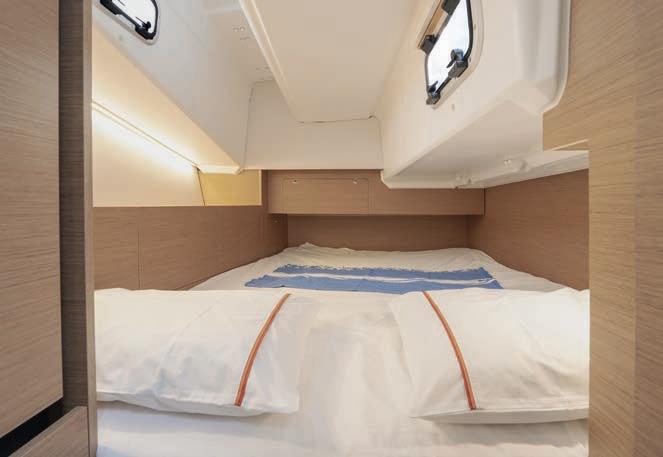
space is really good and portlights in the bow add to this. There is a heads/ shower compartment to port and, on the workshop version, the shower cubicle is separate. The test boat had the two identical double cabins aft which is likely what most will go for but there is much to be said for the two cabin version which opens up a lot of space in the washroom. This is always a boon and the second entrance in the cockpit also allows for better circulation if you have four aboard. Anyway, the aft cabins have plenty of width to the beds and a good amount of light. The galley is a nice size and has a deep fridge and plenty of storage. There is also good access to the storage under the seats.
I sailed the 350 on a most docile day. The wind was a truly pathetic 3kts when we started out and eventually filled in to a vaguely
ABOVE LEFT
A light and thoroughly modern interior space
ABOVE RIGHT
There is the option of twin aft cabins or a single aft with a workshop room and larger shower compartment
BELOW
To further boost performance, there is the option of a square topped mainsail
more manageable 8kts by the end of the test. Nevertheless, it’s always worth seeing how a boat performs in very light winds and, to give the 350 its due, it was able to get on the move in 3kts of breeze and the helm was responsive. Things picked up marginally and we unrolled the Code 0 while staying relatively hard on the wind. Soon we were close reaching at 5kts in 7kts of wind. The boat felt well balanced and poised. Heading off the wind we unleashed the spinnaker and with this big sail we were making 6.5kts in 8kts maximum of breeze. It’s also worth noting that I sailed the Jeanneau Sun Odyssey 30OD alongside the 350 in similarly modest 8kts of breeze and upwind she performed very well alongside her lighter, sportier cousin. Admittedly, the 30OD has a shorter waterline length, but it was still a respectable performance.
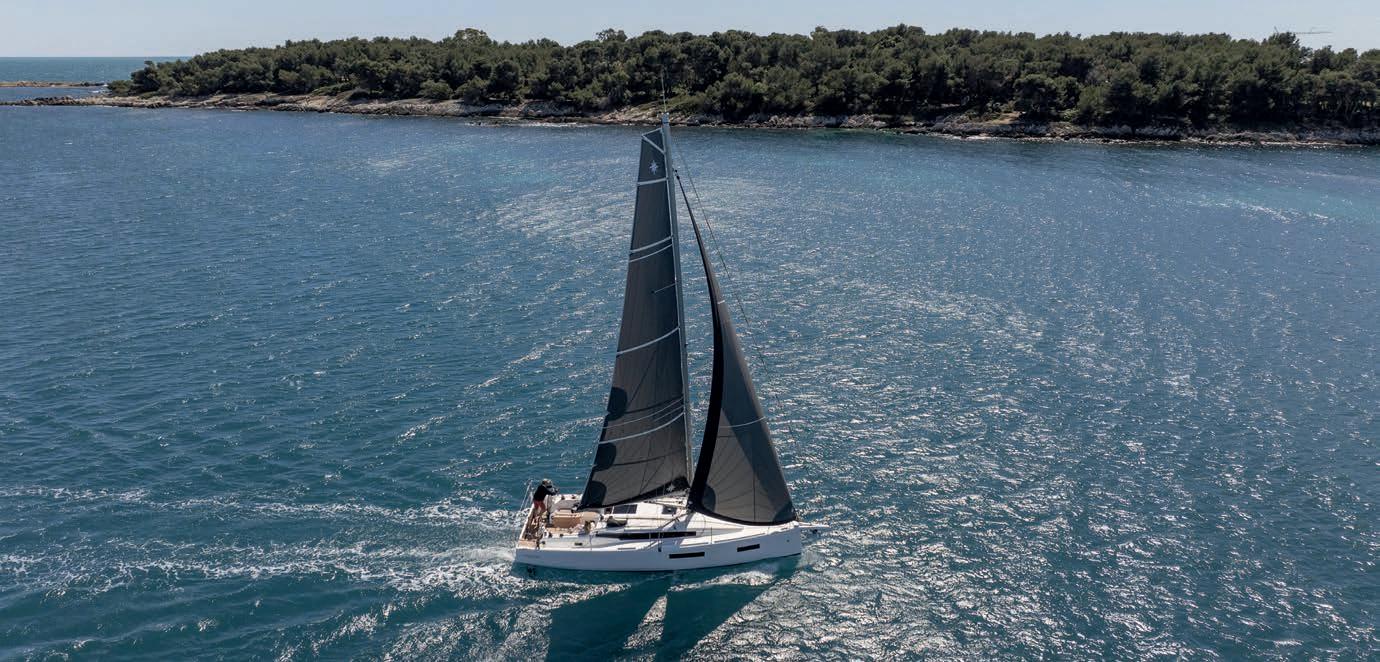

The 350 is a fine successor to the popular 349. For me, the key fact is that Jeanneau has opted to retain the swing keel, which opens up new vistas for sailors in tidal waters. Aside from that, the increased volume compared to her predecessor is a boon, and there does not seem to be any
LOA: 10.40m (34’1”)
LOA with bowsprit: 10.94m (35’9”)
Hull length: 9.99m (32’8”)
Waterline length: 9.38m (30’9”)
Beam: 3.59m (11’9”)
Displacement: 5,656kg (12,470lbs)
Standard keel draft: 1.98m (6’6”)
Shoal keel draft: 1.49m (4’9”)
sacrifice in terms of performance. Ultimately, if you’re a cruising couple who don’t want to sail around the world, this boat is likely perfect. You don’t need a 50ft yacht to have fun.
BLUE WATER ★★★★★ LOOKS: ★★★★★
Lifting keel draft: 1.28 - 2.54m (4’2” - 8’4”)
Standard sail area: 55sq m (592sq ft)
Engine: Yanmar 29 HP shaft drive
Optional Electric Power: 6Kw Electric
Torqeedo Pod
Architect/Designer: Marc Lombard Yacht
Design, Piaton Yacht Design, Jeanneau
Base price: €160,295
Ready to sail: €171,335
Contact: jeanneau.com
UK dealers: seaventures.co.uk, boatpoint.co.uk
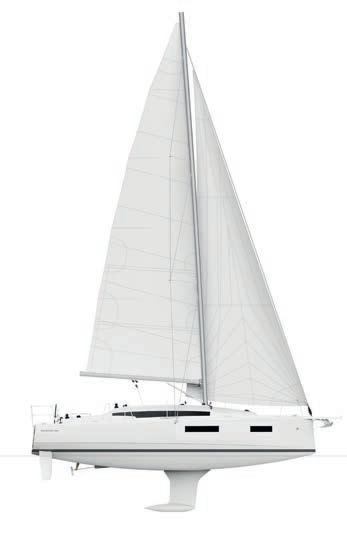
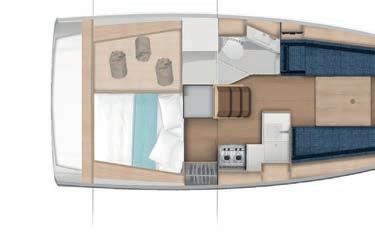

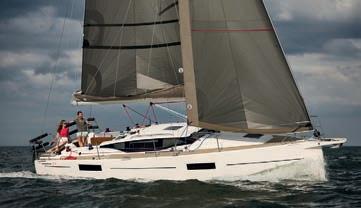
Maxus Yachts cut its teeth designing day sailers and weekenders for the Masurian Lakes in Poland but, with the 35, the company has graduated to seagoing cruisers and the result has been impressive both in terms of end product and price. northman.pl
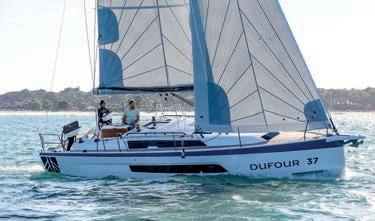
e Dufour 37 is an Umberto Felci design that o ers big interior volume in a small package. is is a boat that takes the full bow section concept and runs with it, making for a truly spacious pocket cruiser.
dufour-yachts.com
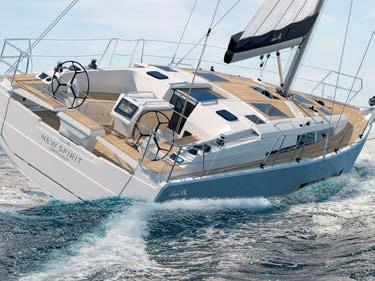
All new for 2024, the Hanse 360 is designed by the team of Berret/Racoupeau and o ers increased interior volume compared with her predecessor the Hanse 348. Inspirationmarine.co.uk


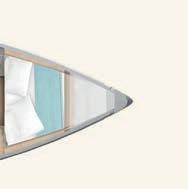

the
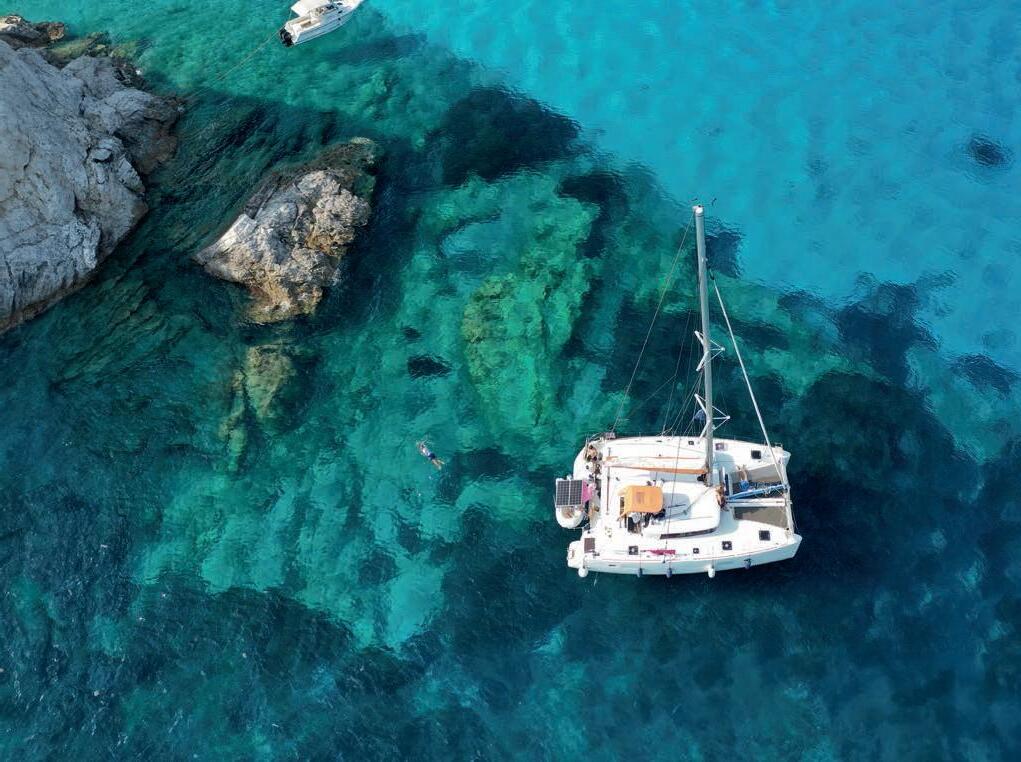


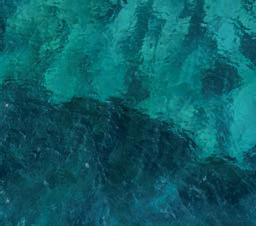

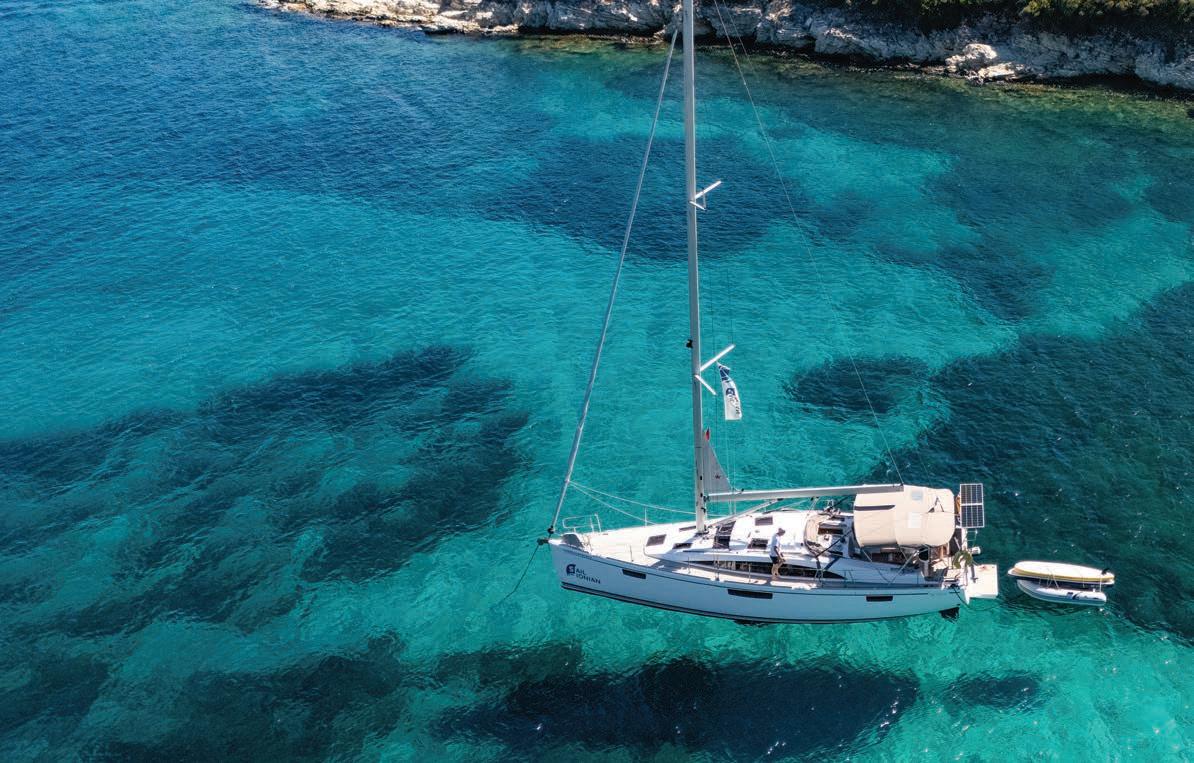

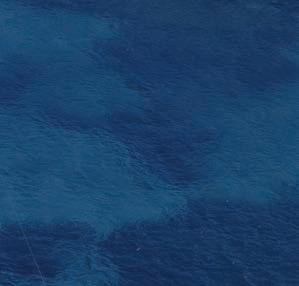


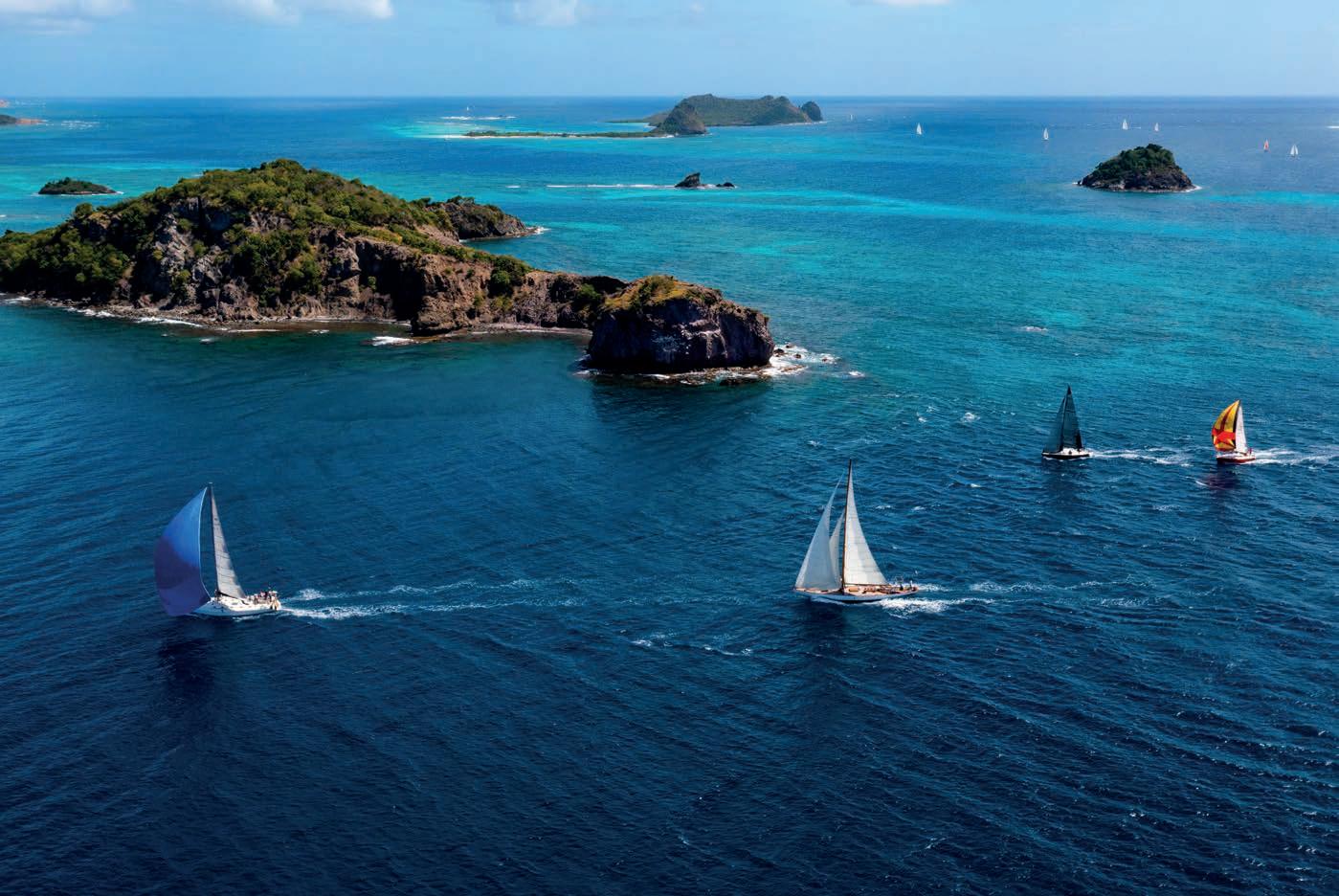
Georgie Corlett-Pitt picks out the highlights of this winter’s Caribbean regatta season…
Picture warm trade winds blowing steadily across your bow, clear blue skies overhead, while in the distance, palm-fringed shorelines hold the promise of soft white sand between your toes and iced rum cocktails in your hand. Sounds like the stuff of dreams – especially now as the UK sinks deeper into the dreariness of winter. Too good to be true? Actually… no. All this promise of tropical bliss – and much more – is standard expectation when it comes to the regatta season in the Caribbean, making racing here a must-do; whether you are an amateur race crew, a pro-sailing team, or simply a liveaboard crew cruising the area looking for a fresh adventure.
With a packed calendar of events, each holds its own unique appeal – in the same way as each island has its own unique vibe – meaning there is truly a regatta for everyone.
In fact, now more than ever, organisers are tailoring events in response to entrants’ needs and
wishes; for example, increasing the offerings for multihulls, following a boom in popularity at every level in recent years. The new Windies Multihull Trophy, organised by the CSA and sponsored by Budget Marine for 2025 and 2026, encourages multihulls in two divisions (under and over 60ft loa) to compete in 10 key events across the season, with the best five results to count. Cruisers too are being increasingly met in the middle, with new rally formats popping up alongside the more traditional racing schedules. It’s not unusual for youth and dinghy events to be incorporated within regattas weeks, helping to promote inclusivity on a more local level. While, at the other end of the scale, the demise of superyacht event Les Voiles de St Barths in 2024 (after the title sponsor withdrew) has seen the IMA’s Maxi Caribbean Circuit temporarily put on hold. In the interim, big boat owners have turned to less formal, ad hoc racing alongside other events. The IMA
Caribbean Maxi Multihull Series, in the meantime, forges ahead, taking in key events such as the RORC Caribbean 600, for example. So, plenty of change, much aimed at enhancing the classic offering of existing events –even more reason to consider the Caribbean this winter.
On then to the logistics, and perhaps you’re considering a charter. The region has plentiful options, whether you’re looking for a solo berth or a whole boat, available through specialist charter companies, many UKbased. Alternatively, some individual regatta organisers can help signpost you to local charter options, or even individual crew places with Corinthian teams; event websites are a good place to start. Perhaps you want to ship your own race yacht over and enjoy a whole winter’s worth of events; this does take some
advance organising – a specialist logistics company will be happy to advise – but it’s not impossible to still make it over in time for at least some of this season.
Or perhaps you want to make getting there part of the adventure, in which case, a trans-Atlantic rally can be the perfect option. The most well-known is the Atlantic Rally for Cruisers, aka the ARC, which in 2025 celebrates its 40th year; plan ahead now if you want to take part. Meanwhile the event this year is due to depart on 24 November, when around 150 yachts will leave Las Palmas, Gran Canaria bound some 2,700nm for a warm welcome in Rodney Bay, St Lucia. The ARC+ leaves about the same time, heading to Grenada via a Cape Verde stop-off.
For racers, the RORC Transatlantic Race is the must-do headliner, starting 12 January from Marina Lanzarote in the Canaries and finishing in Grenada at Camper & Nicholsons’ Port Louis Marina, just outside the vibrant capital of St George’s. Competitors are famously treated to crates of cold beers on arrival, but more than that this year, a large-scale refurb of the beach-club, restaurant and pool area has been completed in time to welcome visitors.
If any extra incentive was needed, consider that the race not only counts towards RORC’s Season Points Championship, but will also form the first event in the club’s centenary year.
Kicking off the Caribbean season in style, Barbados Sailing Week (17-22 January) offers a varied

series of coastal racing for CSA racer and cruiser classes, J/24s and multihulls, along with youth racing and a wingfoil/ kitesurf competition showcase.
The regatta culminates in the Round Barbados Race, which sees boats race 60nm clockwise around the island, starting and finishing from the Barbados Cruising Club. It’s a race steeped in history, first run in 1936. The all-out record was set by Tony Lawson’s MOD70 Concise 10, which rounded in just 2 hours, 37 minutes and 38 seconds – there are also records set by foiling Moths, kiteboards and even windsurfers!
The island is the home of Mount Gay Rum, and as such boasts a lively social side. Not only does Mount Gay sponsor the Round Barbados Race, they also host the legendary Mount Gay Red Cap party, this year on 21 January.
As an added extra, the aptly named Rum to Spice Race from Barbados (aka ‘Island of Rum’) to Grenada (aka ‘Island of Spice’) offshore race sets off at the end of the regatta and feeds perfectly into Grenada Sailing Week.
BELOW
For some, getting to the Caribbean is part of the adventure
Set this year for 26-31 January, Grenada Sailing Week is a regatta that has gone from strength to strength, having originated some 30 years ago off the back of the local workboat regatta and now attracting a wide range of competitive yachts. It still retains a friendly vibe, and four days of racing and six nights of partying are designed to showcase the best of the ‘Spice Island’s’ landscapes, culture and culinary delights; with a spotlight this year on the nautical heritage of Grenada, Carriacou and Petite Martinique, local engagement and youth participation is strongly encouraged. For anyone looking to combine some great racing with a good dose of local culture, this could be just the ticket.

The seventh annual Caribbean Multihull Challenge Race and Rally takes place from 30 January to 2 February, hosted by St Maarten Yacht Club with racing under MOCRA and CSA rules, as well as for Diam 24 one-designs. With an exciting format including a 60mn race around St Barths and a 50nm dash to Saba, this forwardthinking event has quickly gained traction, attracting top sailors the likes of Loïck Peyron and Brian Thompson, and in 2024 was added to the prestigious International Maxi Association’s Caribbean Maxi Multihull Series.

A rally element was added in 2023, which includes a fun overnighter to St Barths, plus a no-pressure option of signing up for time trials for those who wish to settle bragging rights at the onshore parties held each evening.
RORC Nelson’s Cup Series
From 18-21 February, RORC’s Nelson’s Cup Series takes place from Antigua Yacht Club. Two days of inshore racing is followed by a lay day, before the epic 50nm Antigua 360º Race concludes the series. Attracting a top line up of international race yachts competing under IRC, the event has previously run as part of the RORC Caribbean 600 series, but this year will run as an event in its own right, encouraging boats seeking exciting and high calibre inshore racing to enter without the onus of an offshore foray at the end.
RORC Caribbean 600
That said, the lure of competing in the RORC Caribbean 600 is strong, billed as it is as the Caribbean’s premier offshore race and part of the RORC Season Points Championship. The event last year saw nearly 70 boats, over 500 sailors, enter the highly tactical 600nm chase around 11 Caribbean islands, starting and finishing from English Harbour, with Farr 100 Leopard 3 the winner under IRC ahead of Niklas Zennstrom’s Carkeek 52 Rán , while Jason Carroll’s MOD70 Argo headlined the multihull fleet. The start this year is on 24 February.
Superyacht Challenge Antigua
Staying in Antigua, from 5-9 March, the Superyacht Challenge Antigua might not be open entry but nonetheless promises a superlative showcase of big boat racing, with yachts of 80ft+ taking part in five days of friendly racing off the south coast; definitely one to anchor up and admire if you happen to be in the area.
Meanwhile, from 6-9 March, over on the Dutch-French island of St Maarten, the Sint Maarten Heineken Regatta is set to take place from Sampson Bay. This longstanding calendar highlight has a well-deserved reputation among serious racers and serious party-goers alike – thanks to its title sponsor; the regatta village boasts two stages, official sailor areas with sponsor activations, plus ‘green zone’ night clubs promising an all-out party vibe. The iconic

ABOVE LEFT
Top notch inshore racing in the RORC Nelson’s Cup – this year a standalone event
BELOW
St Maarten Heineken Regatta’s daily ‘bridge show’ has become legendary

‘bridge show’ sees crowds of spectators cheer yachts as they depart and return from the day’s racing, with crews vying to raise the biggest cheers; fancy dress and dance moves encouraged! Racing under CSA is a mix of windward/ leewards and coastal racing, with carefully considered adjustments for cruisers, maxis and performance monohull and ‘Island Time’ classes. Now in its 45th year, this lively event typically welcomes over 100 yachts from 12 to 100ft from many different countries, and for 2025 is once again expected to be the largest regatta in the Caribbean.
St Barths Bucket
It’s hard to think of an event that oozes more glamour than the St Barths Bucket, drawing some of the world’s most glitzy superyachts and elite sailors from around the world to this most idyllic of islands. Named for a similar regatta held in 1986 in Nantucket, when an impromptu race demanded an impromptu trophy be awarded and a notso-glamorous spare bucket was found to suffice, the event has run here since 1995, and from 13-16 March will once again provide a real treat for spectators.

From 28-30 March, the St Thomas International Regatta will be held on the US Virgin Island of the same name. Kicking off with the Round the Rocks – a race around nearby St John’s – three days of windward/ leeward racing follows, with start and finish lines positioned handily just off the social hub of St Thomas YC. Renowned as a friendly regatta with an emphasis on quality racing for local and international teams alike, the race committee prides itself on impeccable work, scenic courses and competitive classes; racing is for CSA, ORC, IC24 and Diam 24, among others. Now approaching its 51st year, the organisers know well the formula for a classic Caribbean event, yet don’t shy from fresh ideas; 2025 sees the VX One Caribbean Cup and the new IC24 Caribbean Championship both incorporated into the regatta for the first time.
A highly popular event, the BVI Spring Regatta and Sailing Festival is hosted by Nanny Cay Marina and Resort, running this season from 31 March to 6 April. Into its 52nd year, this is a combination of

‘festival’ - distance racing over two days, and ‘regatta’ – three days of professionally run round-the-cans racing, is interspersed by a layday. It attracts both performance racers as well as a competitive bareboat charter fleet. Highlights include the 37nm Round Tortola Race for the Nanny Cay Cup, followed the next day by a 12nm upwind race from Nanny Cay to the beautiful Scrub Island Resort, where a BBQ and pool party awaits. Nanny Cay hosts live music within the bustling regatta village, this year also featuring a showcase of local arts in a celebration of island heritage.
St Croix International Regatta
A lower key event is St Croix International Regatta (10-13 April) hosted in a charming beach front setting overlooking Teague Bay on the northern side of St Croix, the largest of the US Virgin Islands.
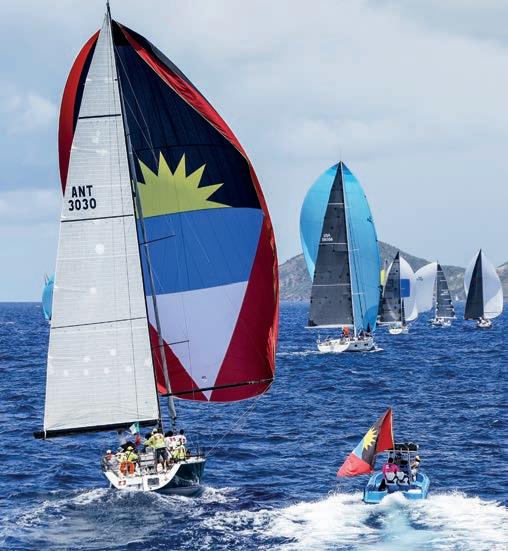
Racing is over three days for mono and multihulls under CSA, plus IC24s, with the overall prize being the skipper’s weight in rum!
Rounding out the season is Antigua Sailing Week, from 26 April – 2 May, offering five days of racing off the south coast of the island, plus the option of a race around Antigua, for a range of classes from high performance mono and multihulls to sportsboats and bareboats, with a comprehensive ‘Rock Up and Race’ charter programme on offer. Knowing top quality racing to be at the core of this event, around 100 yachts gather annually. This year is the 56th edition, making Antigua Sailing Week the region’s longest running event of this sort.
New and notable for 2025 will be a range of courses designed specifically to appeal to performance multihulls, comprising long legs enabling max speeds to be achieved but requiring minimum crew numbers, such as a race north to Barbuda and back, and another round Redonda. And as a qualifying regatta for the new Windies Multihull Trophy, this year will have plenty to attract multihull owners.
In another new move, organisers have added ‘Cruise Antigua’, a five-day rally appealing to cruisers who wish to explore the island in company, visiting destination stopovers then returning each evening in ample time to join the evening social programme centred around English Harbour. If you’re thinking of competing here for the first time, their website features a handy first-timers’ guide.
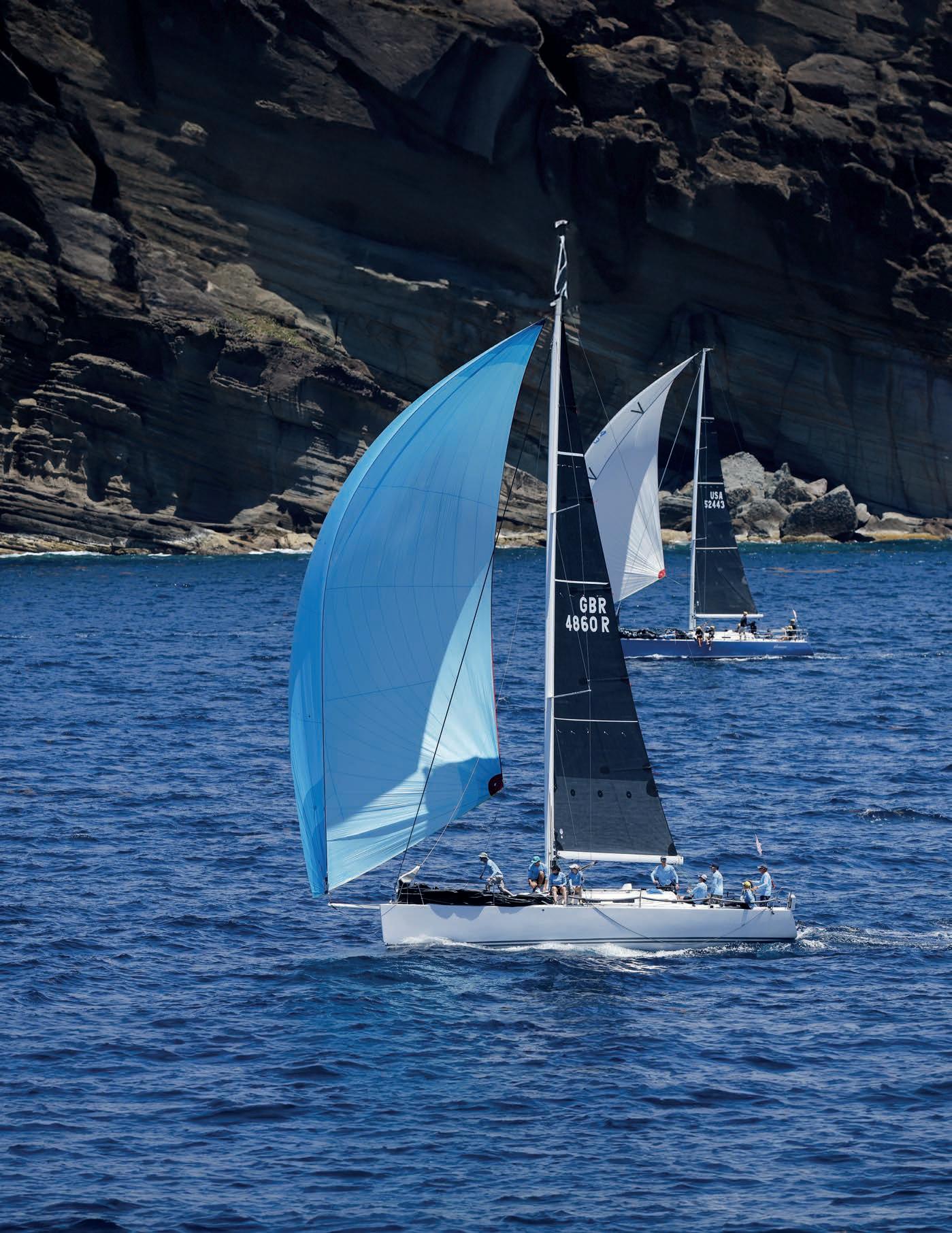
With the countdown for the start of the Caribbean race season underway, now is the time to look at what’s on offer and start making plans for the ultimate winter getaway writes Sue Pelling
If you are an adventurous type wishing to exploit your competitive spirit, there is no shortage of options when it comes to choosing a Caribbean race week to take part in (see page 50 for full race/regatta guide). With the Caribbean regatta week season traditionally kicking off with Barbados Sailing Week/Round Barbados Week (15-22 January) followed in quick succession Grenada Sailing Week (26-31 January), never has it been so easy to plan for an early dose of winter sunshine racing to stem those post-Christmas blues. Although there is plenty of time to sign up – with the Caribbean race season continuing, until the end of April (26 April-2 May) with Antigua Sailing Week marking the final event – it is worth remembering it is a popular winter sun holiday option, so it pays to book early.
The Caribbean charter option has been made particularly attractive over the last 38 years thanks to the World Cruising Club Atlantic Rally for Cruisers (ARC and ARC+) that sets off across the Atlantic from Gran Canaria mid to late November. You’ll find that most of those competing in the rallies are yacht owners, or charter companies who primarily use the rally as a means of sailing in company in order to base their boat in the Caribbean for the season. This means there are many opportunities to sign up for a berth on either a private charter yacht, or charter yacht through companies such as LV Yachting, Kraken Travel, or Another World Adventures.
Access to the Caribbean, with direct flights from the UK to many islands, makes chartering a yacht a good option particularly if leisure time is more restricted. If you are flexible, you may be able to find some good last-minute deals, so it’s worth keeping any eye out online (see Useful contacts).
While many companies offer crewed or bareboat charter, a growing sector is individual berth charter with companies such as LV Yachting, OnDeck,Caribbean Yacht Racing, and Second Star Sailing (formerly Miramar) offering a selection of places at most regattas. While The Moorings and Sunsail generally
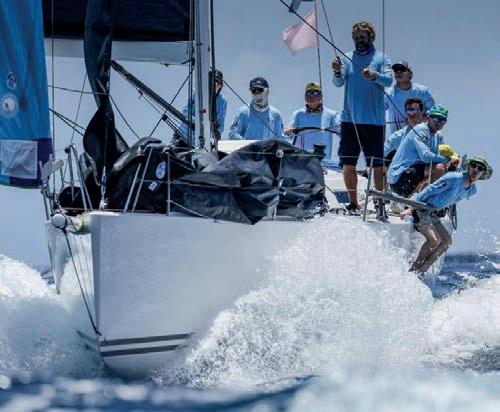
specialise in cruising charter, they do have few Caribbean race options in places like the BVI Spring Regatta and Antigua Sailing Week.
Caribbean Yacht Racing, as the name suggests, specialises in the Caribbean with its sole yacht, the J/122 El Ocaso. This yacht continues its long stream of success within the competitive 40ft class in one off races and regattas such as the RORC Caribbean 600, Antigua Sailing Week, BVI Spring Regatta, St Barth Les Voiles, St Maarten Heineken Regatta, and St Thomas International Regatta. Not surprisingly, therefore bookings are popular, although [as we go to press] there are still some spots available for the RORC Caribbean 600 (24-28 February), and St Thomas International Regatta (26-31 March).
Commenting on the forthcoming season, Chris Body – Caribbean Yacht Racing director – said: “Indeed, El Ocaso has been in the Caribbean for the last 10 years or so and had many podium finishes in the competitive 40ft class, including the prestigious Lord Nelson ASW trophy for the overall regatta win in 2023 and 2024.
“We are proud to offer this yacht for charter because she’s been set up for racing by a keen owner, and she is particularly competitive under CSA
ABOVE
A team of charter guests aboard Caribbean Yacht Racing's J/122 El Ocaso enjoying classic Caribbean conditions at Antigua Sailing Week
BELOW AND FACING PAGE
LV Yachting has one of the best selections of charter yachts on its books in the Caribbean
rules. She is therefore offered for private charter to experienced race teams who wish to participate in the spring Caribbean regatta scene.”
If you are looking for a huge choice of Caribbean charter options, LV Yachting, which specialises in global regatta charter, is worth investigating. Whether you want to book a berth and be part of professional race team, or take a whole-boat charter with a captain, or crewed charter with a skipper and first mate, there is something for everyone at LV Yachting.
LV Yachting has been offering charter for regattas in the Caribbean for 15 years.
Lucy Jackson – LV Yachting proprietor – says the company is very proud to have such a consistent stream of repeat custom and is looking forward to welcoming them and new customers to the 2025 Caribbean season: “I think the fact we can provide a turn-key experience for our clients makes them want to return year after year. We also have the best collection of race-prepared yachts available to charter in the Caribbean, from highperformance Grand Prix racing yachts to comfortable racer-cruisers from 30ft-90ft, and cater for both seasoned sailors and novices alike.”
Finally, as with all charter holidays, ensure you are clear on what’s included in the charter package. You’ll find that most packages do not include flights for example, so it’s important to check whether the company will arrange flight for you (at an added cost), or you need to check flight availability and cost before finalising the booking of your dream race charter.

worldcruising.com/arc caribbeanyachtracing.com lvyachting.com anotherworldadventures.com bviyachtcharters.com moorings.com Sunsail.com secondstarsailing.com kraken.travel ondecksailing.com

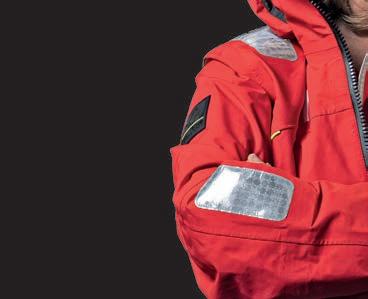
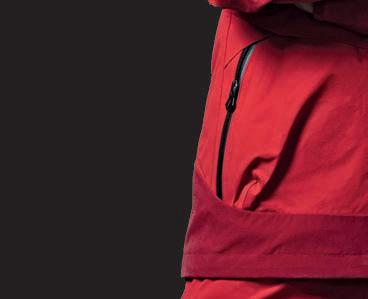
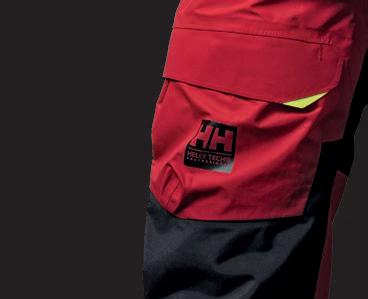


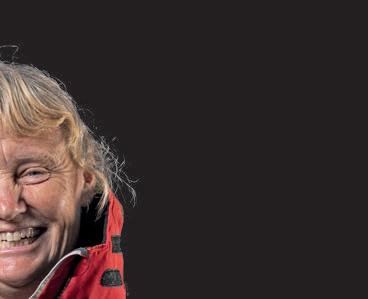




Pip Hare is the 8th woman in the world to complete the Vendée Globe and she is all set for this year’s edition. Milly Karsten catches up with Pip for a chat...

Out of the 40 skippers in this year’s Vendée Globe race, only six women are taking part, and we’re delighted to say, on the back of her sponsorship di culties, Pip Hare is one of them. is singlehanded, nonstop, elite sailing marathon, raced in IMOCAs, sets o in November 2024 and she’s excited to show us what she can do...

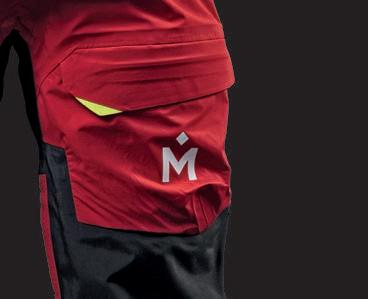
Tell me about your team and its development
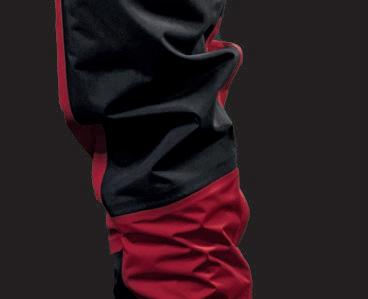
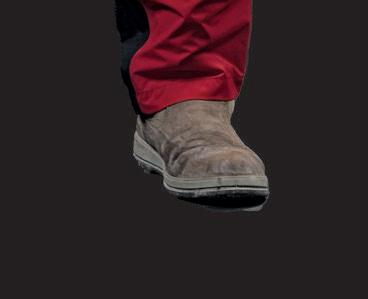
e big change really between 2020 and 2024 is the team. I very much went into 2020 as a one woman band supported by friends and volunteers. We then got Medallia as the title sponsor in June 2020 which enabled me to bring a team onboard who could do the work that we needed. And so this cycle, part of what I wanted to do was build a team, so there’s been three areas of development. One is me as a sailor, the second is the boat, and the third one is the team, and we are a core team of seven full time, but we can expand up to 10-12. In IMOCA terms that’s a small team still, but we’re really punching above our weight I think, and we’ve
kind of established ourselves now as one of the IMOCA teams…
In truth we are absolutely stretched to the limit and it’s hard, everyone works very hard, but we’ve also been really super critical about what we do and how we do it. We’ve had to make compromises and decisions, and streamline things, but one of the things that we do, is if we do need a particular expertise, then we bring in a subcontractor… we do all the legwork… but it does mean we know our boat inside out, we know our campaign inside out, we know our business inside out, and I think there’s a massive strength in that.




How were the sponsorship issues, and how did it a ect preparations?
It was a pretty low period at the beginning of this year. I think it was probably our lowest period as a team in the whole race, because we had planned and set out what we were going to do, we had made these big investments and changes in the boat, and to have the nancial rug pulled out from underneath us was really di cult. ere is a path where you just say, “oh well it’s happened we just have to stop moving forwards”... but that’s just such a disappointment, not just for us as a team – not being able to use our potential – but also for everybody else who was invested… not being able to nish that o . So,





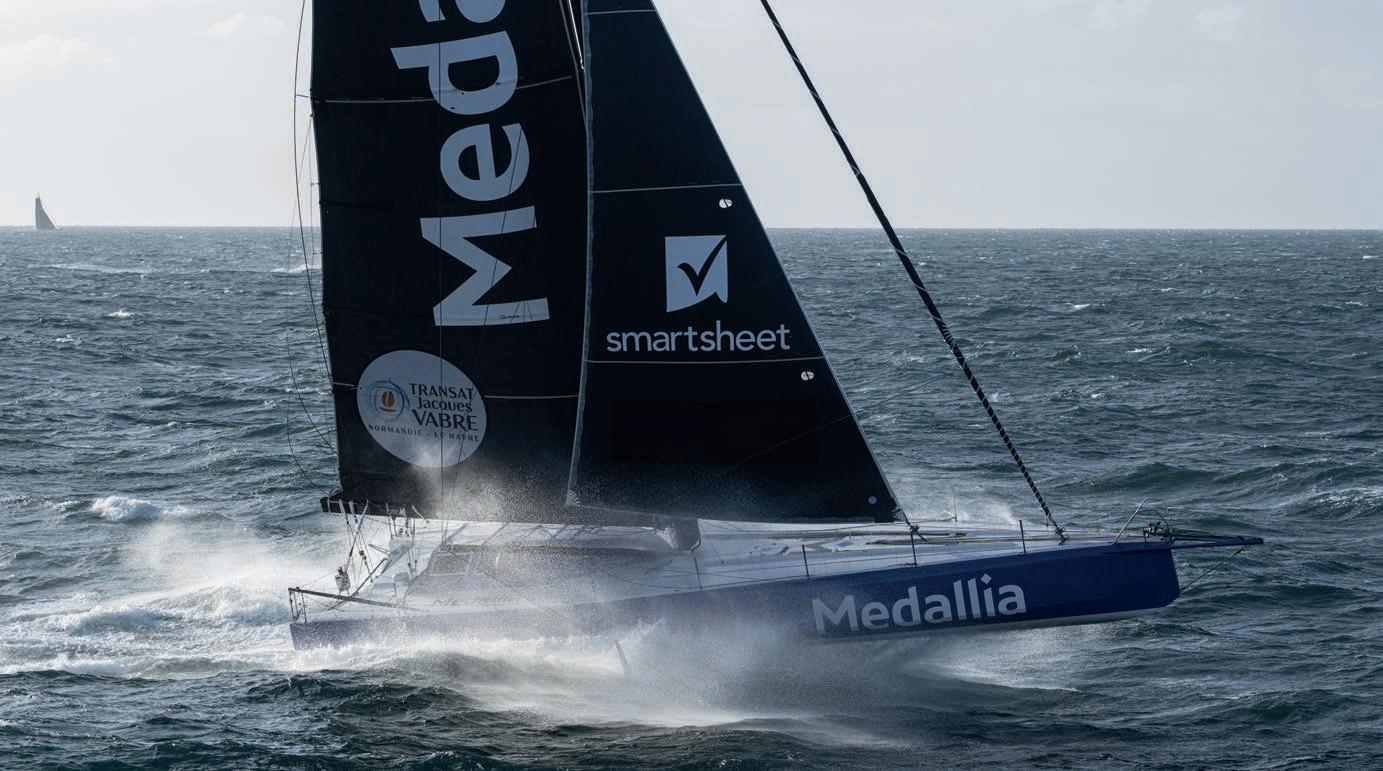



we struggled, it was a lot of pressure on a lot of people, and it’s hard to stay positive when it’s like that, but ultimately I’ve always believed in what we have to o er, I’ve always believed in our potential on many levels, not just from a sporting perspective, but also in terms of what we can deliver to sponsors… We just kept trying, and kept trying, and kept trying, and that’s where there is this genuine synergy between how you run the business and sailing in itself, because if in the middle of the southern ocean you get knocked over, you must get up and you must carry on, and actually from a business perspective that’s what we had to do. We’re still not quite there, we’ve still got a tiny bit more funding to pull in, but we have turned it around so radically in the last six months, it’s pretty cool.



Compared to your rst race, is this a very di erent feeling? Are there di erent worries, or the same excitement?


On the one hand I think I know what to expect, on the other hand I don’t know what to expect, because it’s never going to be the same. It’s totally di erent, there’s 40 boats in it, I’m in a high performance boat, the competition now is at the highest level it’s ever been, and I think there is
more pressure on me. In the last race I was a complete unknown, I had nothing to prove to anyone other than myself. In this race the expectations are higher and I’m super worried about encountering a problem I can’t x, and not being able to nish the race. e odds are against me from that perspective. We’ve done as much as we possibly can, the boat is strong, we’ve built resilience in, we’ve really worked hard, but I don’t know if I’m going to dismast or hit something. For small things it's easier - I know my tack line will chafe, and I have three new tacklines and a spare tack position - but the really big things, you just have to accept that, and know that it’s part of the race. If it happens I’ll have to deal with it at the time, so there is still that nervousness about it, and the feeling that I could have or should have done more… I don’t feel like I know what I’m doing and that this is going to be ne. I know what I don’t know.



How does it feel being a female hero?
I guess the rst thing is, I don’t think I am… I am so normal. I started o as a sailing instructor, I have done all of the jobs that
all of the regular sailors do… I wasn’t on some performance pathway from the beginning, I wasn’t scouted. I had to make all of this happen for myself, and if I hadn’t made it happen for myself, I never, ever, ever would have been here. So in that respect I am normal. Nobody spotted me and said “you’re amazing”. I guess from my point of view I want everyone, not just women but everyone, to understand that it’s only a small amount of people who get given opportunities. e rest of us, we know what we’ve got inside, we know how we can and can’t perform, we know how we want to do and sometimes we have to back ourselves. Something like the





Vendée – there are six women in the Vendée this time – there are three women capable of top 10 finishes in this Vendée and I just think… I don’t feel like I need to be out there saying “I’m a woman, I’m a woman”, I just need to be out there sailing and showing you what I can do.
There’s three of us who are competing on equal terms, and we are absolutely willing to be judged on our merits, I think that kind of says it all. That is the subliminal message – give enough people a chance and they will show you what they can do, but also if I’m not good enough then fine I’m not good enough, but give me the chance to show you.
Do you feel like it’s been difficult in this male- dominated sport?
Yeah, it has been hard but when I started my career in 1992 it was a lot harder then. I feel like now I’ve got my team and that’s why I am where I am now - but let’s not be under any illusion, I wouldn’t be skippering anyone else’s IMOCA team right now.
Now I am here I have the wonderful privilege of being judged on my merit, and I know that the other sailors that I race against just look at me and see a sailor, and that’s all I ever wanted. One thing we do need to remember is when you get up to these kinds of levels, experience matters… experience still matters, and there is a pathway that needs to be followed to gain that experience.
What are you most looking forward to… aside from finishing, what is the moment you are dreaming of, where you can take a breath?
Well it’s always after the start, and I probably don’t settle in until 24 hours or 48 hours after the start. For me, the further I go the more I get into my stride effectively. I love the length of the race, I love the endless opportunities to come back, to push hard, to put another target on somebody’s back. I love the problem solving. In the moment it is just like “ah, will this ever stop”, or “how am I going to get out of this”, or “this is utterly terrifying”...

but I love the problem solving and the fact that I have to be the one to do it. I got off the boat saying that was the best experience of my life. Do I want to do it again? Hell yes. It’s dangerous though, because there is a tiny tiny part of me that says, what if I don’t enjoy it as much? And that’s why I’m super aware that this is going to be a totally different race. I cannot have any expectations of how this is going to feel, I just need to go into it with, almost like, the same willingness to learn from the experience as I did last time I think.
Obviously it’s a hugely physical race, and difficult in lots of different ways, but mentally, is that another barrier you feel like you have to face?
I think probably the mental side of things is ultimately somewhere I have been really comfortable, and that’s because of my route through the sport, because I had to make my own way, from my first race which was the OSTAR in 2009, I’ve always been low budget, I’ve always been struggling, and so I’ve never had the luxury of SATCOMS. The first solo transatlantic I did, I didn’t even have an EPIRB on board… let alone a SAT phone. I never had the opportunity to speak to anyone, and so, over the years I have learnt to manage myself, and manage my emotional and mental welfare, and
resilience. And so, when shit does hit the fan, the first thing I want to do is not to ring someone, just get straight on and do it. Actually I’m super happy. I love not talking to people!
What is your snack of choice to take? In a low moment… What do you need to take with you?
Chocolate coated coffee beans although I really have to be careful about how I use these. Because I don’t drink caffeine (coffee) they turbo me because.... the problem is I have eaten six in one go and then I couldn’t sleep for 24 hours!
Alongside race prep, Pip has also written a book – In My Element: Life lessons from the world’s toughest solo ocean race –which she tells me is: “all about the mental tools and techniques that I used during the last Vendée, so it’s kind of as a companion to this one. It’s for anyone who’s watching this one and wondering how the hell she does it. ”
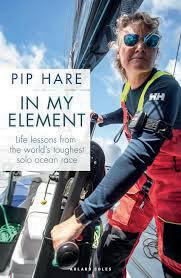
In My Element is published by Bloomsbury Publishing priced at £10.75. Bloomsbury.com
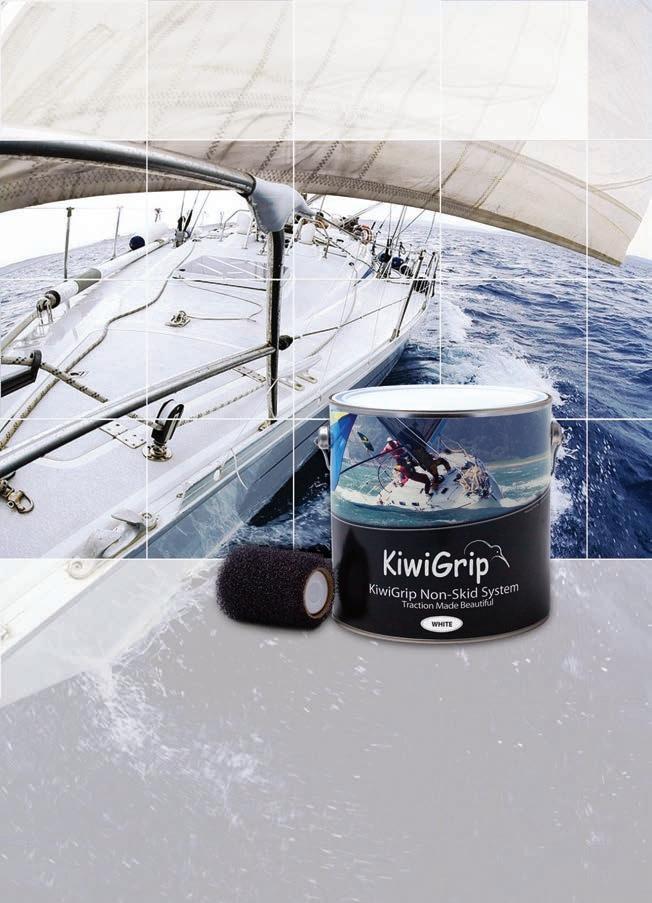
Introducing new additions to the Orbit Winches™: the expanded range offers larger sizes with two-speed or three-speed models for exceptionally fast line retrieval. These new winches maintain the same lightweight aluminium drums with Power Rib™ grip and QuickTrim™ self-tailing.
We’ve also upgraded the smaller 30QT and 40QT winches with E1 Electric motors, and conversion kits available for both 12V & 24V configurations.

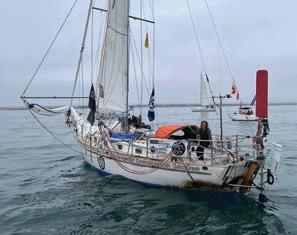

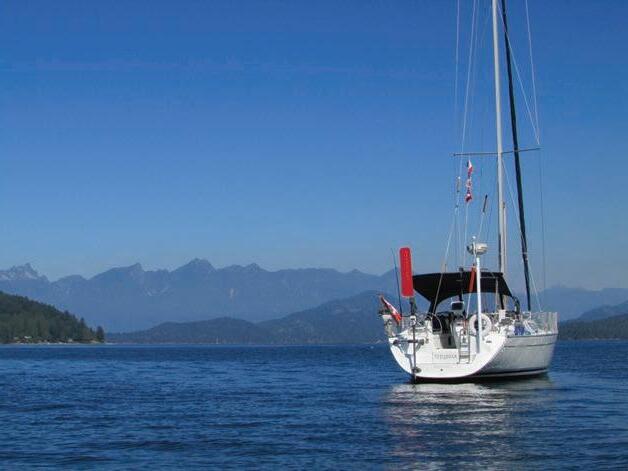
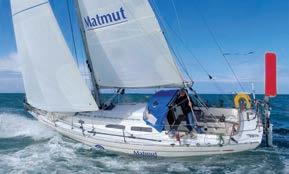
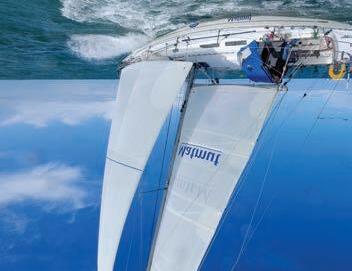
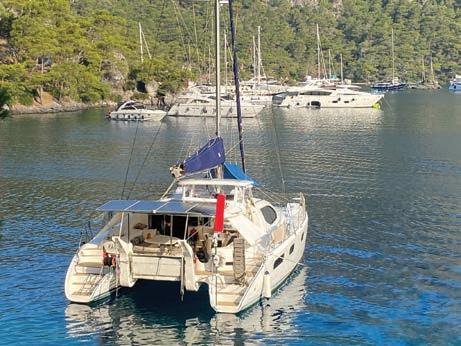



EASY ACCESS AND BERTHING FOR 100 VESSELS FROM UP TO 3M DRAFT AND 25M LOA









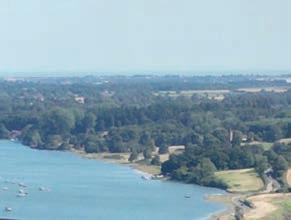


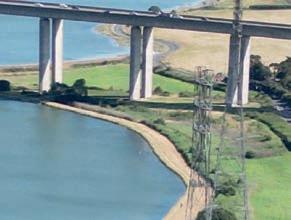
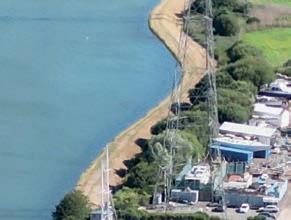
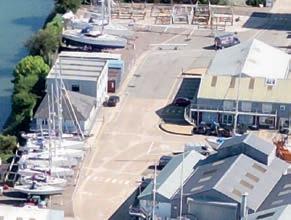


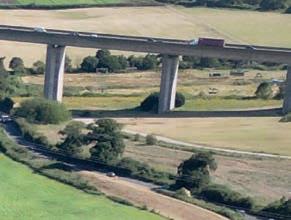






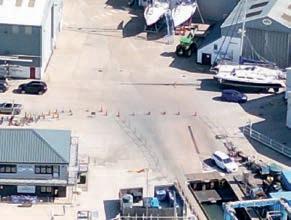



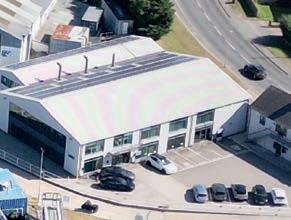


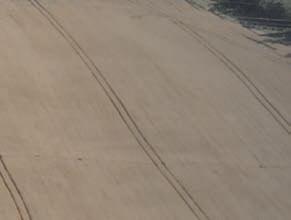








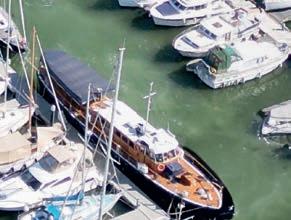
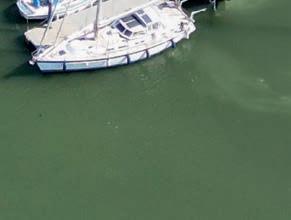


This prime facility at Ipswich is more than just a marina, boatyard and chandlery, it has a glowing reputation that stretches far beyond the shores of the east coast writes Sue Pelling 52.0327° N 1.1532° E


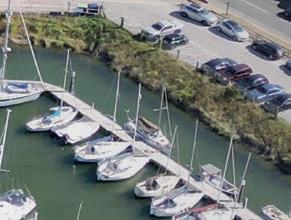
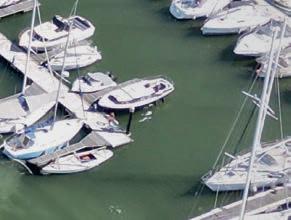
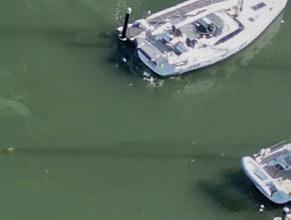

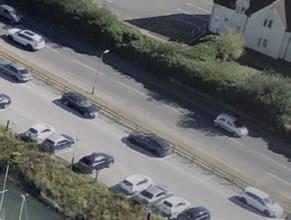
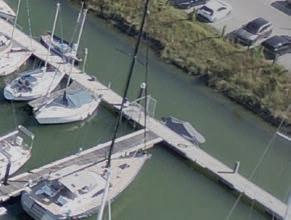

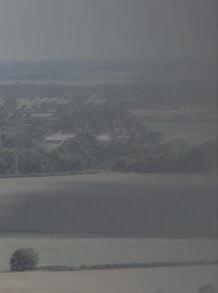
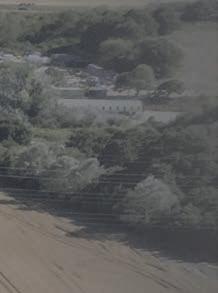
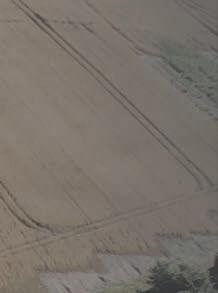




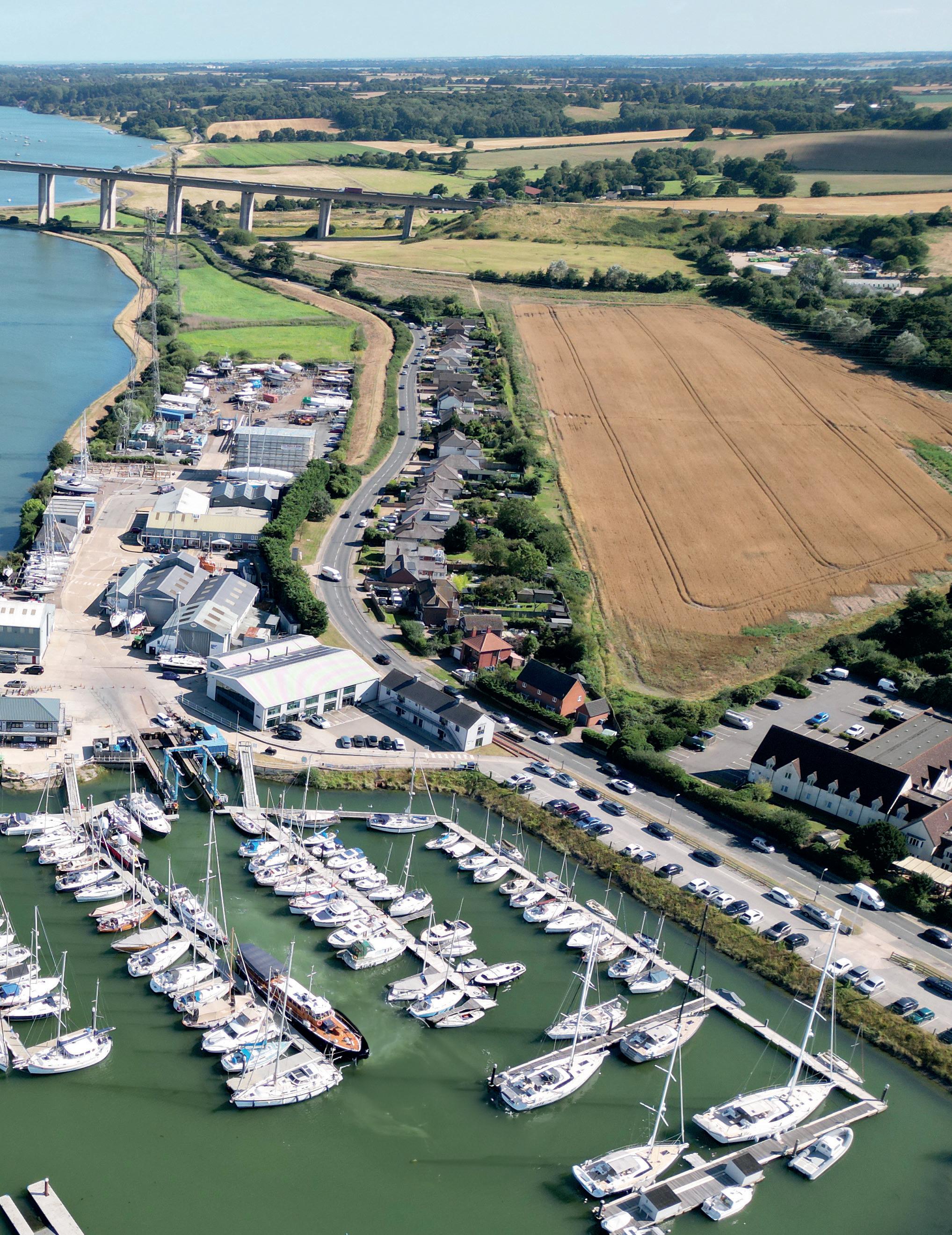

There are few marinas in the Ipswich area of the east coast as welcoming and convenient as the independently run Fox’s Marina & Boatyard at the top of the picturesque River Orwell in Su olk. As well as easy access at all states of the tide (no lock gates), 100 pontoon berths, and storage ashore for over 200 vessels, this marina has extensive on-site yacht repair, re t and maintenance facilities, and a skilled workforce, which makes it a viable option not only for permanent berth holders, but also for visitors. One of the other prime attractions that Fox’s o ers is its highly popular chandlery, which has a known is for its extensive stock and good customer service.
Established in 1927, this marina has grown into a globally respected facility with over 2,000 repeat customers enjoying the convenience and topclass services its renowned for. Its re t and repair boatyard, which is key supplier to some of the biggest names in British yacht building including Oyster Yachts, Spirit Yachts, plus it maintains various classic yachts, and specialises in race yacht preparation.
ABOVE LEFT
Plenty of berthing space for yachts up to 25m loa
ABOVE RIGHT
A well-planned, easy accessible marina
BELOW LEFT Fox’s Marina is known for its extensive yacht maintenance facilities
BELOW RIGHT
A well stocked marina chandlery with knowledgeable, friendly sta is a real plus point
Another reason this marina continues to attract a good following, and is a clear indication of how the business is run in general, is its comprehensive/ transparent, and user-friendly website that includes everything you need to know before you get there, including berthing rates.
Shoreside accessibility with the A12 just a couple of miles away, Stansted airport located within an hours’ drive, and a mainline railway station just ve minutes’ drive up the road, means if you are considering basing yourself on the east coast either as a visitor or berth holder Fox’s is a de nite consideration.
When you arrive by yacht, you’ll nd the layout of the marina has been carefully designed to ensure everything, including the facilities (washrooms, reception, fuel bay, and boatyard li out travel hoist stations) are within easy reach. e onsite Outlook bar is also home of Fox’s Marina Yacht Club, and is the central social hub and a great place to relax for a drink or co ee.
Another bene t is the fact Fox’s Marina is a TransEurope Marina, which means that if you are a berthholder with a minimum six-month contract in one of the TransEurope
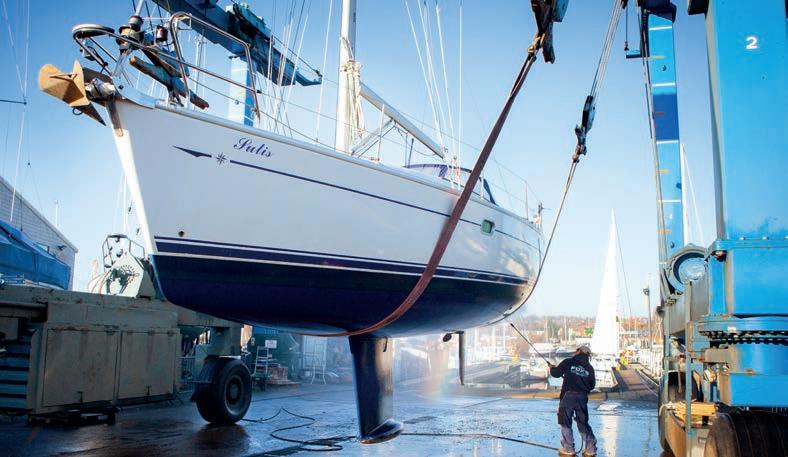
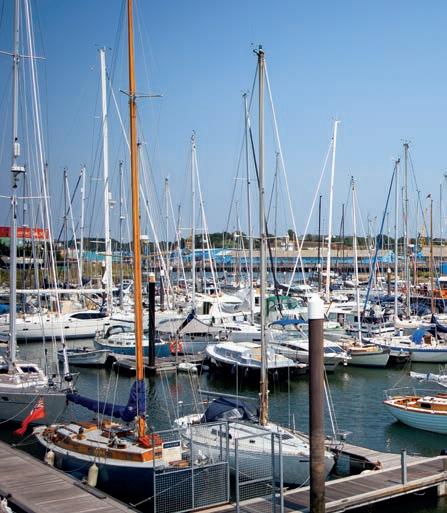
member marinas, you can enjoy reciprocal berthing bene ts when visiting one of the 84 TransEurope Marinas, located across 11 countries.
e busy commercial port of Ipswich is just upstream from the marina, so it pays to be aware of the shipping movements when entering or leaving. You will also nd that the deep-water channel on the way up the Orwell is relatively close to the shore. Navigating to the marina from the mouth of the river, however, is straightforward enough if you stick to the buoyed channel which has lit markers all the way up to Ipswich. It is recommended to keep to starboard of the buoyed channel, clear of commercial tra c as much as possible, and be careful not to exceed the speed limit (6kts). Keep a sharp eye out for shipping however (ahead and astern) and remember not to veer o course because the edges of the channel shelve steeply and sudden drop in depth, particularly at low water springs, could be problematic. Also bear in mind there’ll be a certain amount of heavy wash from passing ships.
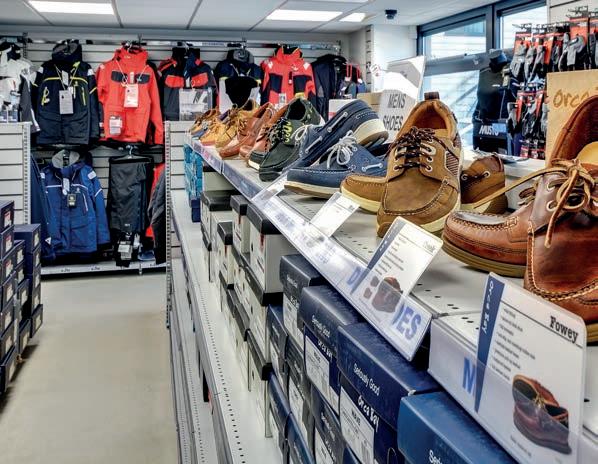

Berthing is allocated by the harbourmaster (on VHF Ch80 or telephone +44 (0)7515 051439). On the final approach 0.5nm beyond the imposing Orwell Bridge, look for the red can buoy (No 12 on your port side), which marks the entrance to the marina at Ostrich Creek, then head to either the holding berth, or the berth allotted to you by the harbour master. The fuel berth is immediately to port as the entrance channel turns to starboard.
Being in such a central position along the east coast means there are plenty cruising options for short or longer passages. Once you head out the River Orwell the River Stour is ‘just round the corner’ to the south, and the picturesque River Deben, River Ore, River Alde, and places like Southwold up the River Blyth, further north along the coast. A favourite short hop (approximately 2nm downriver towards the mouth of the Orwell) is Pin Mill, a Thames Barge beauty spot which is also the home of fine waterside watering hole – The Butt & Oyster. Here


ABOVE
Bawdsey on the River Deben, with Felixstowe Ferry on the other side
BELOW
Woodbridge at low tide
it is usually possible to pick up a mooring but to get ashore you’ll need a dinghy a good pair of wellies!
The River Deben is a delightful place to cruise to, and the mouth of the river (Woodbridge Haven) is just six nautical miles from the mouth of the Orwell. The river is only about nine miles long but is pretty, and is free from commercial traffic. The shingle bar at the entrance shifts around, and can be intimidating, so it’s important to obtain the latest navigation information before arrival.
Once in the river, head for places like Ramsholt, Waldringfield, and finally the historic town of Woodbridge, with its iconic landmark – the tall, white-clad Tide Mill on the west bank. There are plenty of mooring options with Tide Mill Yacht Harbour one of the most convenient for access to the town.
The River Ore, which turns into the River Alde, is also worth a visit with places like Orford (Orford Castle), and Snape at Aldeburgh which is at the top of navigable reach, and home to the world-famous Snape Maltings concert hall. Here it is possible to moor up alongside the quay, although beware it dries out at low tide.
FOX’S MARINA
Postcode: IP2 8SA
Website: foxsmarina.com
Email: foxs@foxsmarina.com
Tel: +44(0)1473 689111
VHF: Ch80
Harbourmaster: Tel: +44 (0) 1473 689111 or +44 (0) 7515 051439
Berthing fees
Annual berth – £344.57 per metre
Visitors – £2.70 per metre/per day
Electricity:
Berth holders – Per unit
Visitors – from £2 per day
Wifi: Free of charge
Fuel: Diesel on site
Local services
Chandlery: Tel: +44(0)1473 688431
Boatyard services: In-house, on site
Marine engineers: In-house, on site
Marine electronics: In-house, on site
Riggers: In-house, on site
Places to eat and drink
The Outlook Bar – on site
The Freston Boot – Tel: +44 (0)1473 780722
Suffolk Food Hall – Tel: +44 (0)1473 786610
The Butt & Oyster – Tel: +44 (0)1473) 780764
The Last Anchor – Tel: +44 (0)1473 214763
The Waterfront Bar & Bistro – Tel: +44 (0)1473
226 082
Mariners Restaurant – Tel: +44 (0)1473 289748
Provisioning
Nearest supermarket: Tesco or Waitrose
Taxi
Avenue Taxis – Tel: +44 (0)1473 888 888
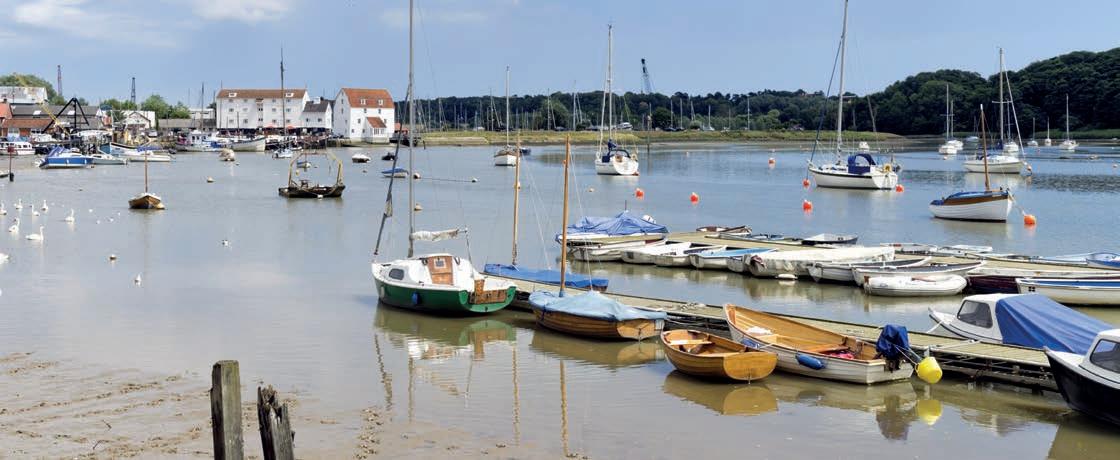

There was a time when fake wood seemed to go against the grain. Those days are long gone and Sam Fortescue looks at the various options available
There are lots of reasons for redecking a boat. Maybe the old surface is beginning to look a bit tatty or it’s suffered some damage. Perhaps you want to cover a glassfibre deck to make the boat look smarter. Whichever it is, you should pause before you pick up the phone and ask your boatyard to recommend a teak fitter.
Most of the world’s available teak is now plantation grown. Not necessarily a bad thing, it has nevertheless opened up teak forestry to new regions with different climates. Some say that the result is an inferior wood quality from trees that grow quicker and less uniformly. Shorter planks with erratic grain clearly make it harder to fit a teak deck, for instance, and one experienced fitter I spoke to said the rate of rejected planks
and remedial work was pushing the price up dramatically.
A real teak deck now costs from around £840/sqm fitted, making even small boat decks a big investment. Fortunately, there are lots of alternatives to teak, from cork to PVC and even EVA foam. They all have their advantages and drawbacks – read on for the low-down.
Still the most common teak alternative, synthetic PVC panels have been an option for decades. The material is designed to mimic the grain and colour of real teak as closely as possible, but being made of plastic, it doesn’t weather or wear. It requires no more than a sponge down or a spray wash to clean and you can even sand out stubborn rust or burn marks. It usually comes in long rolls that are ready designed to resemble two
modern-day decking designed to mimic the grain and colour
caulked planks. For custom fits, the supplier welds strips of this together to build up a deck panel, which can be edged with another PVC strip to resemble a margin board. CNC routing can create almost any pattern, logo or word you desire in the panelling. Some manufacturers also supply the rolls for simple DIY installations, in which case you glue the strips together and stick them down. Manufacturers have developed a whole palette of different shades, ranging from brand-new wood to vintage teak, and you can select caulking in either white, black or grey/silver. There are an increasing number of non-natural colours available, too, including carbon, offwhite and titanium. These are more about giving your boat a certain look and feel than replacing the teak. Originally, PVC decking weighed about 6kg/sqm and it was notorious for absorbing the sun’s heat. Just as
with denser teak wood, the decking could be uncomfortable to walk on barefoot in the heat of a Mediterranean day. Flexiteek has since developed a second-generation product containing microbead fillers that reduce the weight and density by one third. Unsurprisingly, the fillers also cut the warming potential of the decking too. Other brands, such as Permateek and TekDek make a virtue of the fact they use no fillers at all and only virgin PVC. The jury is still out on which product is better, but with numerous examples of both types of PVC decking still in faithful service, it might just be a question of whether you plan to sail in hot climates, and whose colours you prefer.
Permateek
Available in 14 different colours with three caulking options, Permateek was recently launched in a new High Grain (HG) variant, which is said to be a step up in resemblance to real wood. Made in Ringwood, Hampshire, the product comes in ready-made panels of straightplanked ‘wood’ for easy DIY fitting, or you can get custom decking made up according to a template. Permateek will sell you a patterning kit to template and fit the deck yourself, or send in its own team for a fee. Prices range from around £200-550/sqm depending on the complexity of the panel. permateek.com
Flexiteek
Specced on new boats from the likes of X-Yachts, Grand Soleil and Hanse, Flexiteek can be easily retrofitted too.

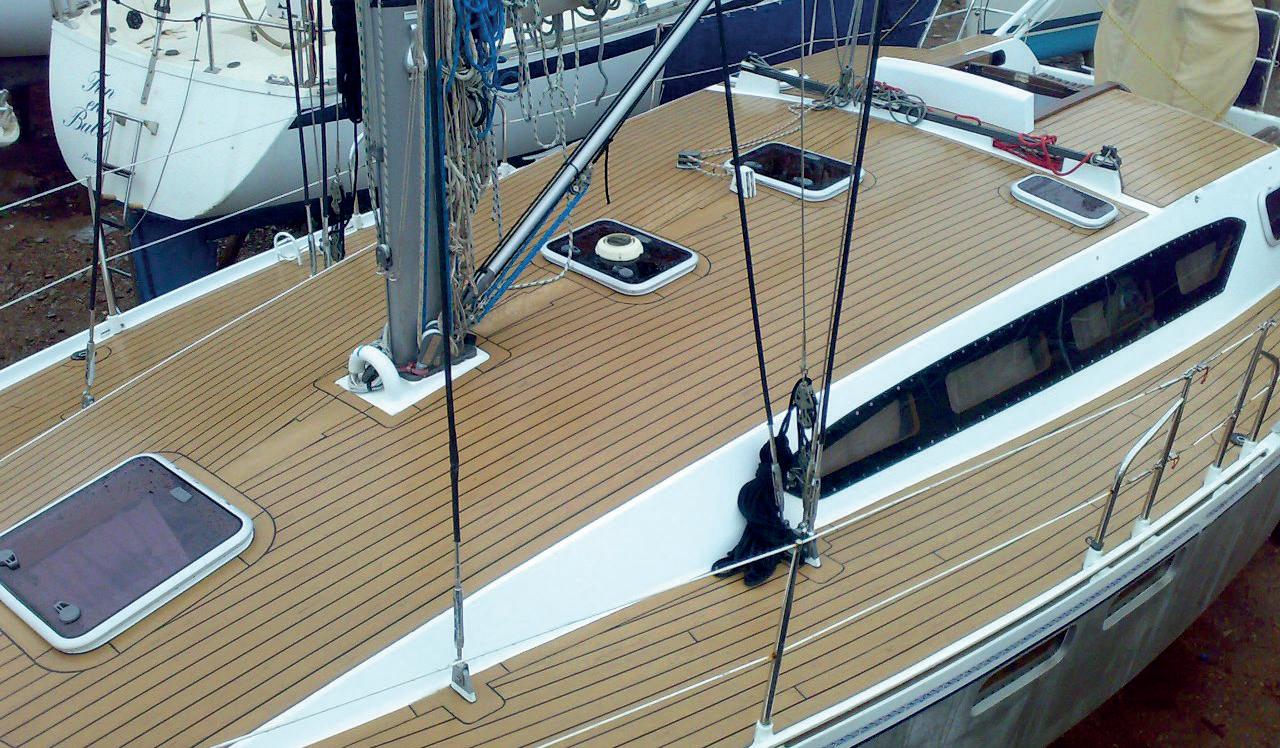
It comes in 11 base colours and can also be CNC milled to put a logo, pattern or name into your decking surface. However, it is not available for amateur fitting – this is strictly pros only! Sister brand Isiteek (easy teak) is dedicated to simpler DIY jobs using a roll of PVC ‘planking’ which can be cut and joined to form panels. Flexiteek costs from £342 to £462/ sqm and the deck for a 40-footer would be in the region of £8,000. flexiteek.co.uk
TekDek
Manufactured in the UK, TekDek calls itself the “original” PVC decking material and distances itself from others in the market by using no fillers. TekDek suggests this results in a more stable product, but it is also heavier and absorbs more heat. It comes in four natural tones, and a grey
Three years ago, Mark Turnnidge bought a well-used Hallberg Rassy 36 and set about returning her to mint condition. “We’d had a 312 before that, but decided we wanted slightly bigger,” he says. “This one came up, but it wasn’t in the greatest of condition when we got her –lacquer work below was faded and the deck was fairly well shot, and the engine was tired.”
The old teak deck was leaking badly, so he wanted to lay a waterproof synthetic deck instead. Doing the rounds at the Southampton Boat Show, he was instantly impressed with the Evo Decking stand. “It was head and shoulders above what others were doing – it has that ability to look and feel like real wood.”
Elite Teak were quoted in the region of £20,000 to remove the old deck, build and fit the
called ‘London blue’, with a choice of caulking colours. Prices range from £264/sqm for sheets to £696/ sqm for ring decks on sailing boats. tek-dek.com
Evo Decking
Launched just over a year ago and also made in the UK, Evo Decking aims to provide the most realistic synthetic teak on the market. It comes in six natural shades, plus charcoal and titanium with the usual three colours of caulk. DIY is not an option here – Evo Decking is only available for professional fitting and costs from £600/sqm fitted. Andrew Adams used Evo Decking to replace damaged teak on his boat’s bathing platform. The detailing was so good that the synthetic product perfectly matched the existing teak in the cockpit, saving him an estimated £6,000 of replacement costs. “I’ve had other synthetic decks on other boats,
new. But a significant element of the job was filling and fairing the glassfibre substrate. “Stripping the old deck off took six to seven days with two guys going at it – it was glued and screwed with over 2,000 screws,” he says. “Then fairing took two weeks, because they had to let the epoxy cure between coats. Templating was very, very quick. Deck manufacture was done in a day and a half, and fitting was just a few days. Some of the detail work took a bit longer.”
The cockpit coamings were done in a plain teak band and Turnnidge had the toe rail capped with a 60x10mm PVC profile. Using more Evo Decking profile and a stainless steel core, he engineered grab handles on the coach roof himself which looked so good that Elite Teak is adding them to its range. “I’m very happy with the results, and it’s just lifted the boat,” he adds. “She looks that incremental bit better again.”
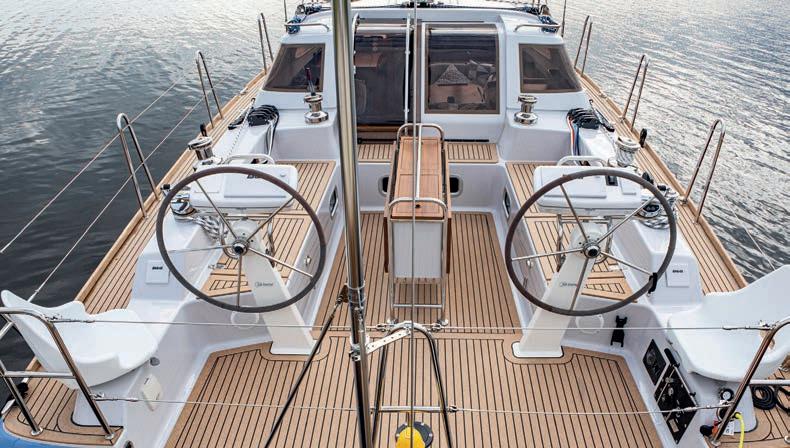
and they always look good, but this is the first product in the market that really looks like wood,” he says. “You literally can’t compare the two! It’s the way that the colours are blended into the product. It practically looks like it has knots in it! There are swirls that mimic a natural wood.” evodecking.co.uk
You see the odd boat alongside that has cork decking, and it is growing in popularity here. Compressed cork has almost all the benefits of PVC, plus some advantages of its own. It is flexible, easy to cut and fit, lightweight, naturally cool and insulating, anti-slip, hardwearing and waterproof. What’s more, it is entirely sustainable in its pure form – indeed some argue it is carbon negative!
Set against all this is the fact that it doesn’t closely resemble teak. Although different tints approaching solid wood can be achieved, the texture is always the piecemeal, dappled effect familiar from your favourite bottle of plonk. “Cork looks like cork!” says Tye Conway of Elite Teak. “There’s no question about that. On the other hand, it can be CNC-machined, so you don’t have to stick to traditional lines.”
The other catch is that it can cost 10-20 per cent more than PVC, although still cheaper than teak. Like teak, cork will slowly weather over time, unless you treat it with a protective coat of polyurethane sealant every five years.
It is very flexible to install. DIY kits allow you to lay the cork in 6-9mm thick strips, just as you would with real wood, then apply caulking. Suppliers can also make up sheets for you to cut to size, or do a full templating and custom build. As you can’t screw deck fittings
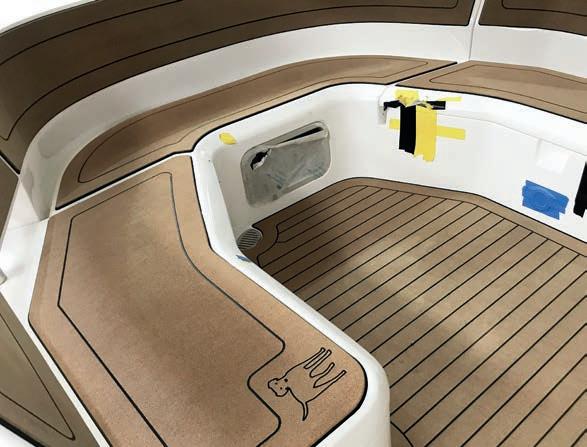
directly to elastic cork, you may need to use inserts instead from a stiffer material such as Delrin.
One of the longest established cork decking brands, Marine Deck 2000 is distributed in the UK by Eco Marine Deck of Plymouth. The material is actually manufactured by a Dutch company which has been at it for more than 40 years. It is formed under 400t of pressure from pellets of Portuguese cork that are synthetically bound and then cut into sheets and strips. Eco Marine will supply it in planks from £420/ sqm, sheets or as a fully custommade deck from £660/sqm, ready for professional installation. ecomarinedeck.co.uk
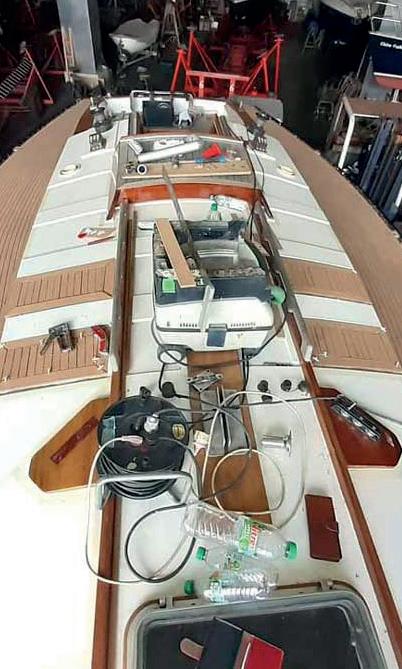
Produced by Germany’s Multicork Solutions since 2003, Oceancork has found its way onto the decks of superyachts and daysailers alike. It comes in two variants: pure cork and rubber cork, both available in large panels. Multicork recommends an 8mm thickness for the best balance between longevity and weight, but says that thinner cork can be useful around contours. In addition, it will supply strips or panels made up with caulk lines, as well as a full custom deck service. You can fit these panels yourself or engage a shipwright. multicork-solutions.com
Elite Teak Cork
Elite has 30 years of experience laying decks of all sorts, including its own cork product. Costs from £600/sqm installed, but it depends very much on what has to be removed first and how much fairing is required. eliteteak.co.uk
Seacork
Based in France, Seacork is sold mainly locally and in the US. However, it has loads of experience building decks for smaller sailing boats and tenders. Note that it supplies the product in various thicknesses to your specifications, so the service is better suited to DIY fitters. seacorkfloor.com
Marine Cork
This is an Italian supplier of cork decking, which would again work for the DIY fitter, or someone with a willing shipyard on side. It has experience of building decks for larger sailing yachts marinecork.com


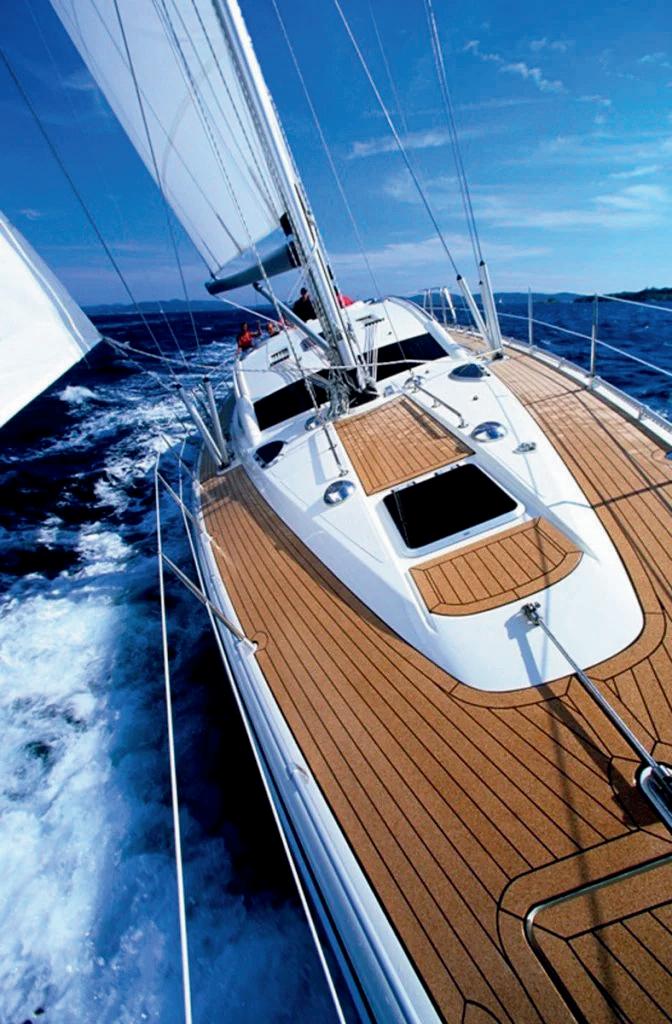
MarineDeck 2000, developed by STAZO in the 1980s in Holland, is a natural cork product known for its waterproof properties and versatility

High performance cork decking which can be installed on any surface
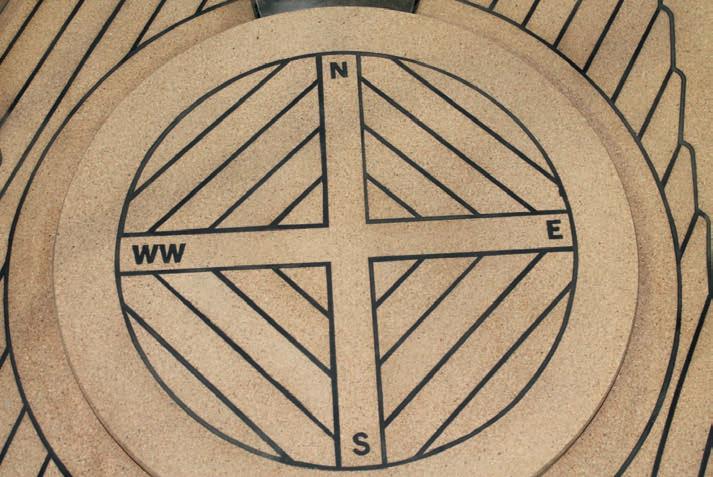
Initially designed for marine applications, it comes with a 5-year guarantee and is suitable for various environments beyond boats. Its growing popularity has led to its use in camper vans, caravans, and as flooring near swimming pools and hot tubs. Additionally, it's increasingly adopted for both domestic and business spaces, showcasing its durability and appeal in a wide range of settings.
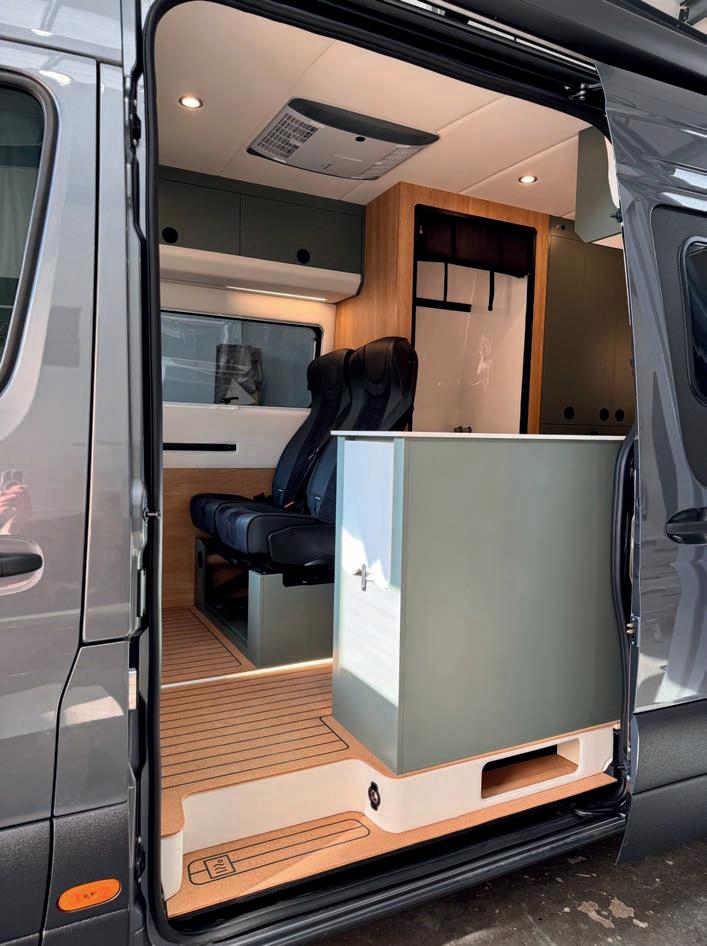



































































































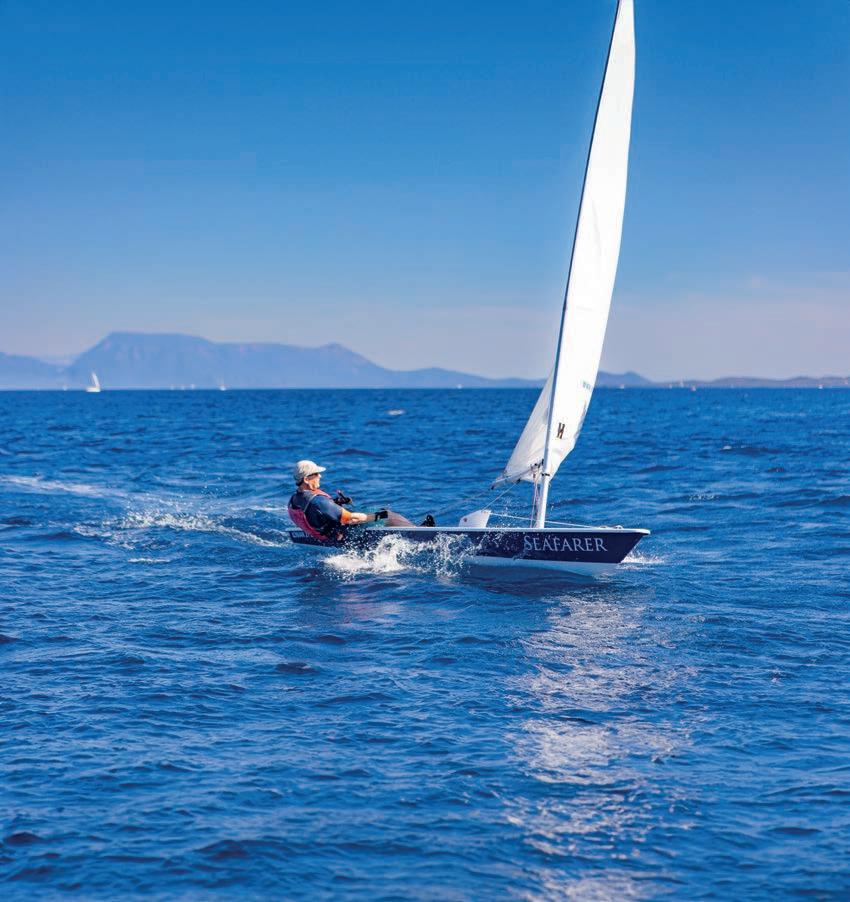
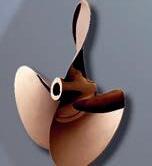
















































































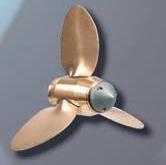



















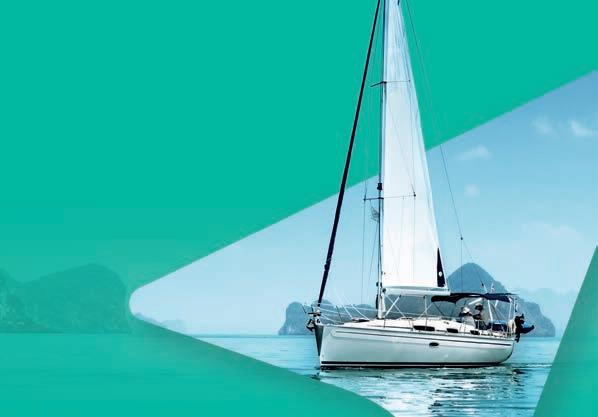

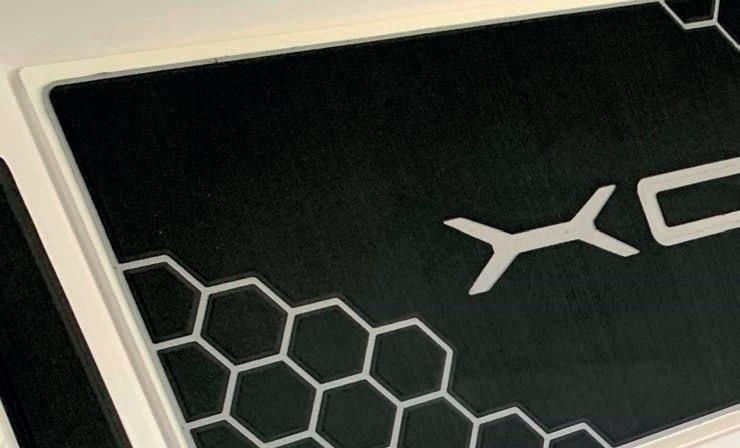
It is rarer to find foam decks on sailing boats, but they do exist –especially in the racing world. It is easy to machine and fit, giving a supremely comfortable padded finish that lends itself really well to high-pressure competitive sailing with lots of people sitting on the rail. Even away from the race course, foam decking can turn the cockpit coaming or locker lids into a pleasant perch. From TP52s to J Boats, Wayfarers to tenders, foam is a cheap and quick-fit option.
SeaDek
Manufactured under licence in the UK, Seadek comes in an unrivalled range of textures, colours and patterns. The joy of EVA foam is quite how flexible it is as a material, facilitating finishes that are impossible in wood, cork and PVC. But while one of the possible textures has a grain-like effect to it, nobody would ever claim that ‘brushed mocha’ foam got close to looking like teak. It comes in a solid sheet, 2in and 4in strips, diamonds, fractals and hexagons.
As a deck covering, foam is not just springy, it is also waterproof, easy to adhere, anti-slip and helps to insulate for both heat and sound. Some have questioned its durability and for those there is a heavy-duty version called Seadek HD. This is designed for commercial and military use, and was the decking of choice for the TP52 Gladiator belonging to Tony Langley as well as the new Gunboat 80 Highland Fling XVIII. It has a durable outer shell which can be applied in single ply 5mm sheets, or laminated with any classic Seadek finish underneath. Either way, Seadek will make up panels to your measurements
with a 3M peel-and-stick adhesive backing for simple installation. Standard machined Seadek costs from £182/sqm, with one fitter quoting around £250/sqm all-in for templating and fitting. Seadek HD costs around £190/sqm all-in, although prices go down if a deck plan for your boat already exists. seadekpro.uk
WässerDek
Made in Britain despite the name, Wässerdek is 6mm-thick covering made of two-ply EVA foam. You can choose from seven colours for each ply, such that when the top layer is routed out for caulk lines, the colour underneath is revealed. It is available in three patterns – plain sheets, planking effect or honeycomb lattice, and there is the option of cutting a logo, design or name into it too.
Wässerdek will send you a templating kit to measure out the different panels you need, then
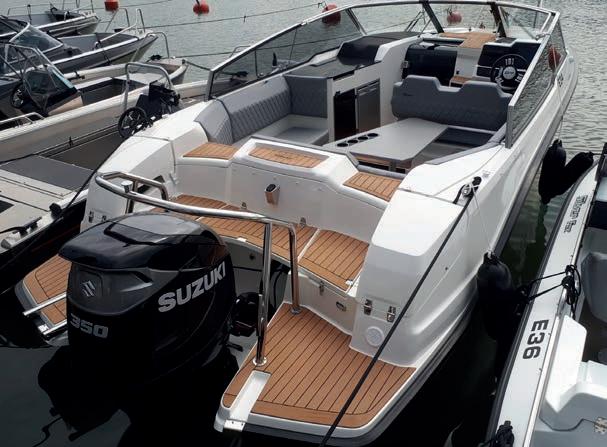
ABOVE RIGHT
Euro Design
ABOVE LEFT
WässerDek
BELOW
SeaDek fitted on SY Balthazar
make them up to fit yourself (or get the yard to do the job). Again, stick and peel adhesive makes it is easy to install. Or you can get it templated, cut and fitted by Wässerdek for £300/sqm. wasserdek.co.uk
The closest alternative to teak planking is a composite called Eco Teak – made by binding sawdust into stable planks along with a bit of pigment. It is made by Euro Design and available in three standard colours: weathered, brown teak and yellow teak, but custom options are also available. The product can be laid in just the same way as real teak (which the company also supplies), but it will also make up custom panels that are precaulked and adhesive backed for simple sticking down. The result is cheaper than real teak and cooler to walk on. And because it uses a by-product of the furniture trade, Eco Teak is said to be sustainable. ecoteak.se
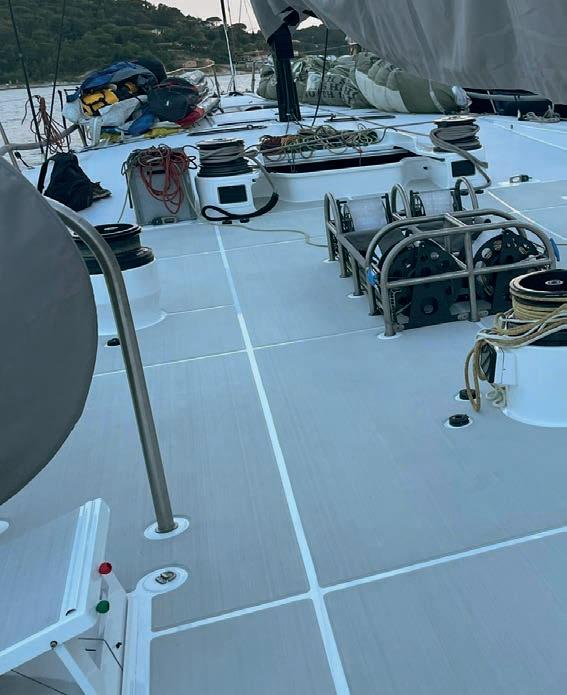
Treated softwood is another possible deck material. Welsh-based Lignia is sadly no more, but the non-toxic pickling process behind the Accoya brand can turn fastgrowing pine into durable hardwood with incredible longevity. It is widely used for cladding buildings and in outdoor decking, and has recently been used to redeck SS Great Britain in Bristol. It is being evaluated by US superyacht builder Westport, and supplies are readily available from timber merchants. Attempts to introduce it to the marine market have not been successful to date –perhaps because of Accoya’s ‘surface checking’ or fine cracks. These don’t affect its performance, just its looks. accoya.com

Sailors can easily get distracted by their phones, iPads and chartplotters. Rod Heikell explains why pilotage is still important in this digital age
It is something of a meme to depict a society going about their lives gazing raptly at a smartphone and not at the world around them. Mind you, in my experience it is closer to reality than the jokey depictions on social media might suggest. So it should come as no surprise that gazing at a screen has become the norm on yachts and for many the singular tool for navigation in strange waters. On Skylax we are not Luddites but choose to respect the warning when firing up the
chart plotter or any digital device used for plotting that advises that ‘the device is an aid to navigation’. When I first sailed Roulette to the Mediterranean, I was woefully under equipped even for the 1970s. On board was a grid-bearing main compass, a hand-bearing compass, a lead-line and charts and pilots. You might think I was being irresponsible, and maybe I was, but I did take Roulette safely from the UK to Greece when some better equipped yachts did not make it. Over the years, the development of
ABOVE
Charts are simply not accurate enough to rely on in many places, as here in Turkey
navigation instruments and techniques has changed out of all recognition and now all of us have LCD displays lighting up the navigation area and in the cockpit. Through this lightningfast evolution, from an EP of doubtful value to a GPS position to two or three decimal places, I always remember the advice from a well-travelled Frenchman I met who told me to ‘always use my nose’. Whether you are arriving somewhere for the first or the 20th time, it is vital that you sniff out the situation and look around you.
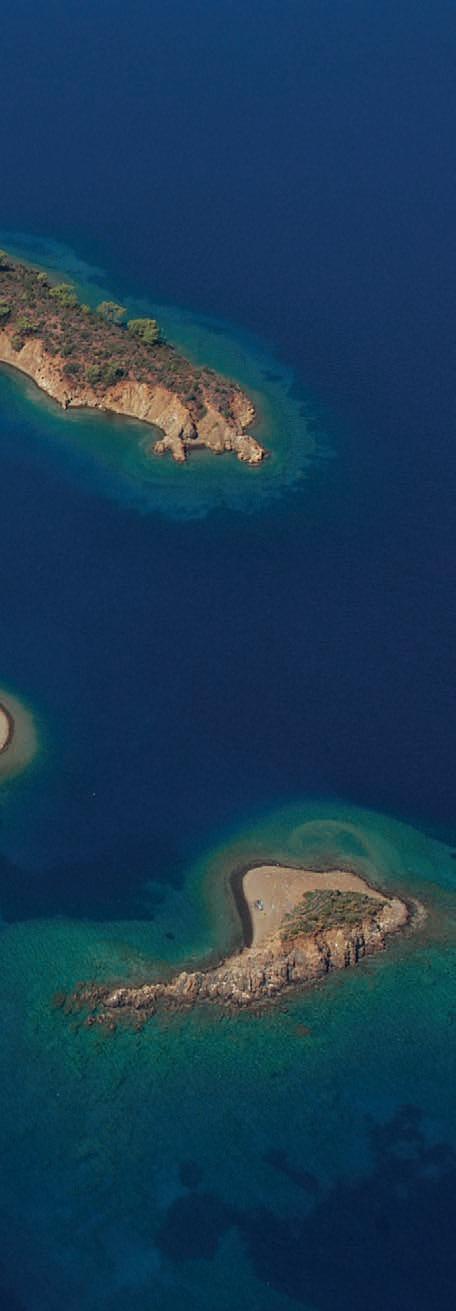
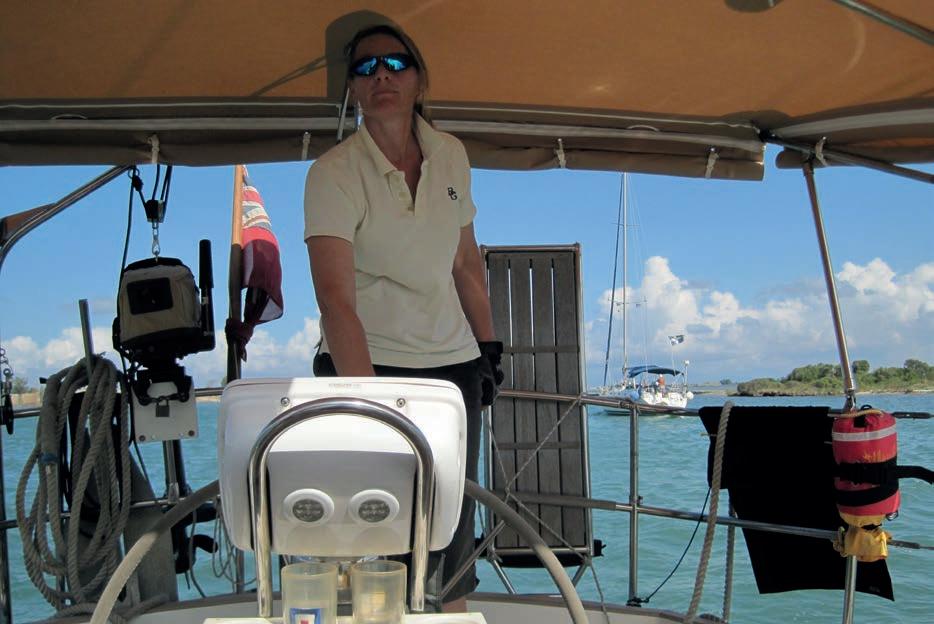
What those early days taught us was pilotage skills that are still useful today. The best equipment for navigation is not the hardware down below and in the cockpit, but the ‘wetware’ between your ears. It can perform incredibly complicated algorithms from diverse data and will frequently be the only thing keeping you safe when the digital readout says everything is apparently fine. Too often, yachtsmen charge on blithely past dangers to navigation and towards a new harbour, trusting implicitly that the LCD readout will take them safely there when, in actual fact, they should slow down, stop and look around, and then proceed cautiously using le nez to sniff out dangers and act accordingly if it doesn’t feel right.
You might think that the chart on your plotter or digital device is a brand-new, up-to-date chart. Think again. Most charts for the
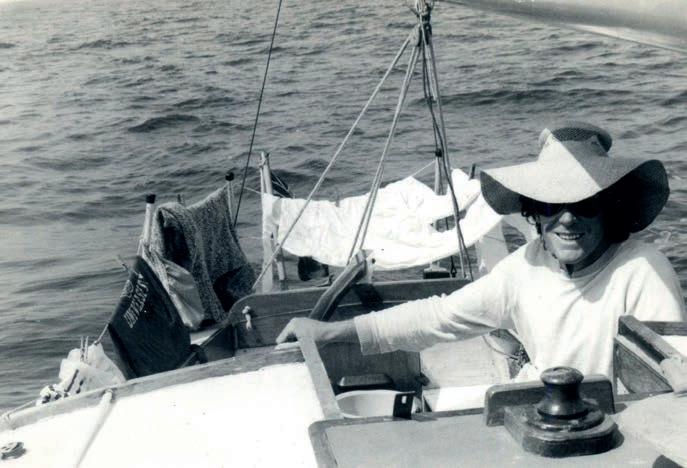
ABOVE
Perched up high to pilot into a bay. The good old Mk1 eyeball still has a role
BELOW RIGHT
On Skylax headed for a tricky waypoint... just make sure, that when you get close, the Mk1 eyeball is in use
BELOW LEFT On Roulette with minimal aids to navigation 1977
Mediterranean and elsewhere were surveyed in the 19th century using astronomical methods to determine positions, and old-fashioned triangulation surveying to get the shape of things. Many of these charts used obscure datum sources and, in many cases, the datum is not known at all. The charts are a triumph over the method with often outstanding accuracy in the face of adversity. Admiral Beaufort was shot and dangerously wounded in Turkey while surveying. Nelson surveyed places like La Maddalena on the north of Sardinia while hunting Napoleon. Over the years these surveys have been updated and improved upon, but it is important to remember that most of the original surveying for the charts we use was carried out in the 19th century. Most modern surveying touches upon bits of coast or around commercial harbours and covers those sea areas used by commercial ships. Very little of the sea areas outside commercial hubs has been recently surveyed.

What is needed is for the world to be resurveyed using satellite pictures so charts agree exactly with WGS84 GPS datum; but in this cash-strapped world where the ‘market forces’ determine most of what happens, this is unlikely and we are left with our 19th-century charts re jigged to agree with WGS84 as best can be managed. In places it is happening. In 2008 I was in Neiafu in Tonga when the New Zealand surveying ship was there doing the first survey since HMS Penguin in the 1890s. Many parts of the world have not been as fortunate to be recently surveyed and while cartographic departments get closer to the real world, we are not quite there yet.
The discrepancies between a GPS position and the charts that the positions are plotted on can lead to some disastrous results. You would hope that users would get a bit of a clue when they find that their charted position when anchored, or rounding a headland, shows them on the chart trundling across the land. This discrepancy exists precisely because the GPS position is accurate, but there is no chart accurate enough to plot the position on.
Apart from chart plotters, smartphones and tablets are often used for electronic navigation and the same caveats apply to them as well as chart plotters. They will be running the same electronic charts with the same deficiencies as a plotter though at least they are usually cheaper to update than the fixed chart plotter.
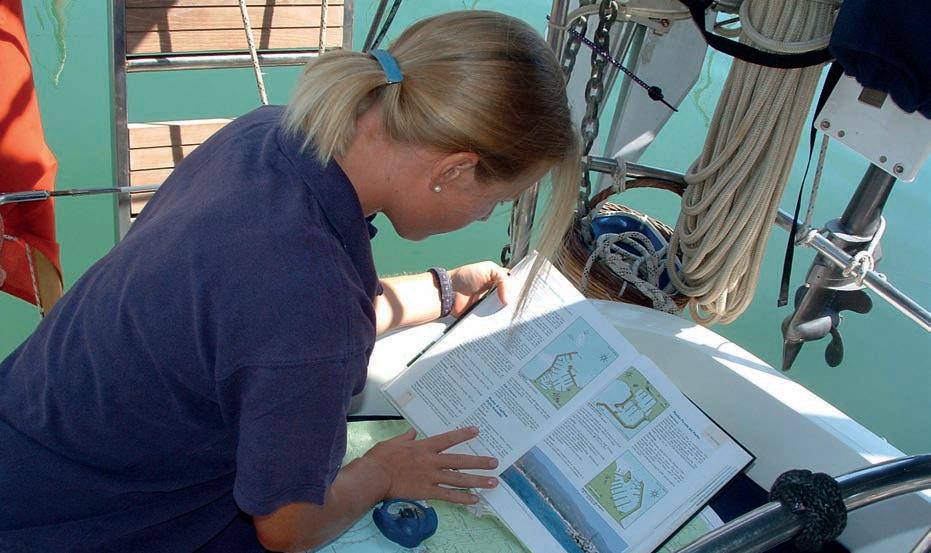
With the ability to insert a waypoint and then watch your yacht glide across the screen of the plotter to the waypoint, it might seem as if old fashioned navigation and pilotage skills can be thrown overboard. It all seems so easy and so alluring. There are a lot of reasons why not to throw out all those old fashioned skills and here are a few reasons why old fashioned skills and pilotage might save your bacon and your boat.
l Researching where you are going to and how you are going to get there is a whole adventure in itself and it lays the basis for a more relaxed and enjoyable passage. That doesn’t mean you aren’t going to worry about stuff on passage, just that you have a better knowledge of what to do and how to carry it out. A bit of research gives you a mental map of what to look
ABOVE
A bit of research on where you are going can pay dividends
BELOW
In many parts of the world someone on the bows can spy out a sandy spot to anchor and any dangers to navigation
for when you enter an anchorage or a harbour and, moreover, time to look around you. Mostly this involves sitting down with paper charts and pilots or the internet and going over the overall passage plan intended and over the tricky bits. The tricky bits mostly have to do with the hard bits along the way and the approaches to them.
l Part of that research used to be the old fashioned concept of looking for a port of refuge should things not pan out in the anchorage or harbour you have initially chosen. Having an alternative in mind gives least some peace of mind. If you are in an anchorage or harbour that becomes untenable with unexpected strong winds, then it is a good idea to have an idea of an alternative that will be safe in that weather.
l Have someone up on the bows keeping a visual watch when you come into an anchorage or a harbour. Use hand signals for the helmsman to slow down, turn to port or starboard and, just in case, to reverse with power.
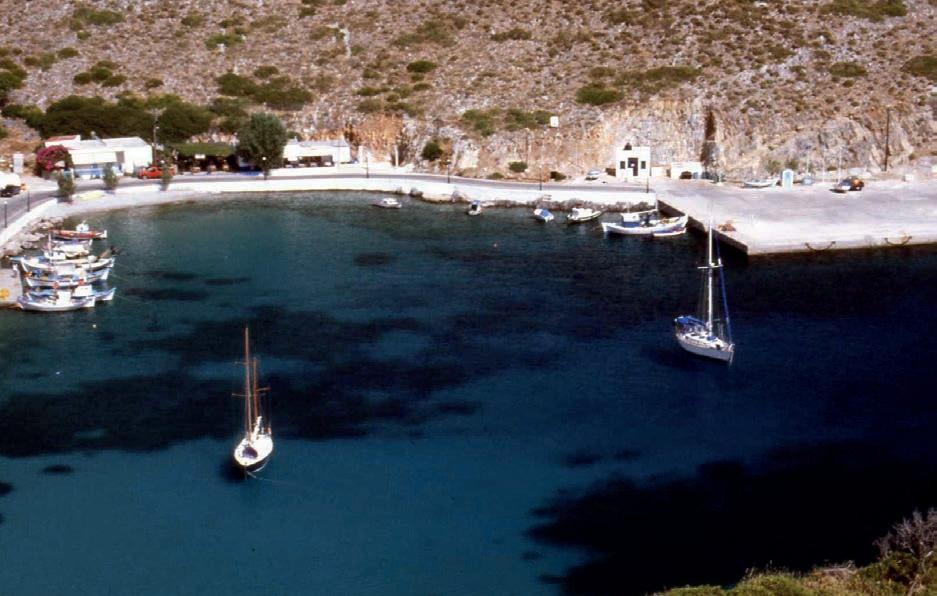
I often see boats coming into an anchorage with everyone in the cockpit and driving straight up on a reef that is charted and obvious to someone on the bows. This year I watched a 46 footer coming into Poros with the helmsman sitting down behind the wheel. It left the buoyed channel and smashed into a 4m high rocky reef that is clearly visible. People dashed out from down below and the yacht bounced off again before heading into the channel. Helmsman busy checking his social media?
l With someone up front guiding you into an anchorage, the person on the bows can look at the sea bottom to see where there are nice sandy spots or weed free places to drop an anchor. In coral they will be looking out for
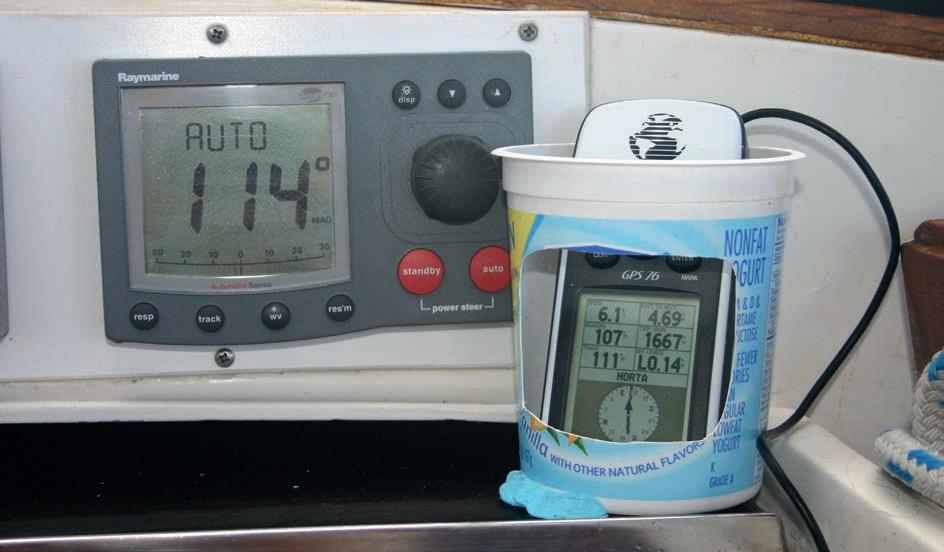
bombies, coral heads, to avoid and keep clear of when anchoring. In our eco-age it is important that we keep clear of Posidonia, sea grass in places like the Mediterranean and avoid damaging coral in tropical anchorages. l Apropos the caution above on chart accuracy, leave a safe distance off dangers to navigation such as isolated reefs or reefs running out from a headland. Electronic vector charts will often not show reefs or other underwater obstacles until you zoom right in on the sea area where they are located. For Vestas Wind
and others, this glitch proved calamitous.
In Nukualofa in Tonga everyone was worried about the passage out of the Tropics into the higher latitudes around New Zealand. In the bar I asked if anyone was thinking of stopping at Minerva Reef. A couple said they were, but several skippers asked me where Minerva Reef was. It sits on the rhumb line to New Zealand and it soon became obvious to me that these guys were using electronic charts to plot the passage. Tiny little Minerva Reef doesn’t show up until you have zoomed right into it… assuming
ABOVE
If your electronics do go down, some sort of ad hoc substitute should be possible – as here mid-Atlantic
BELOW Non polarised view
BOTTOM Polarised view
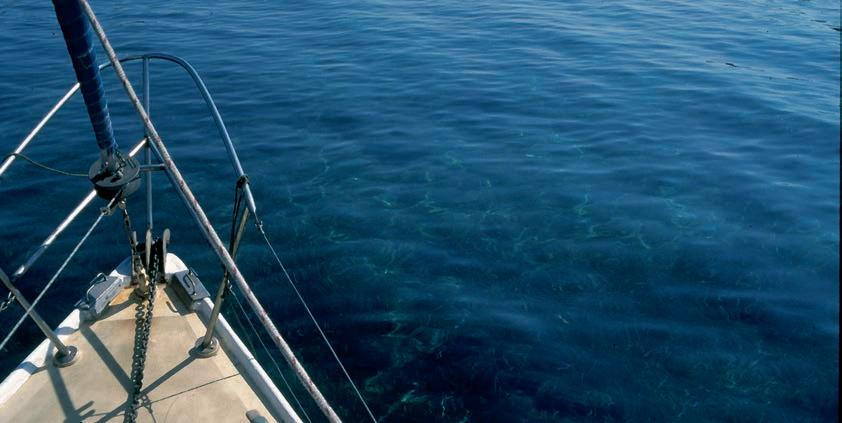
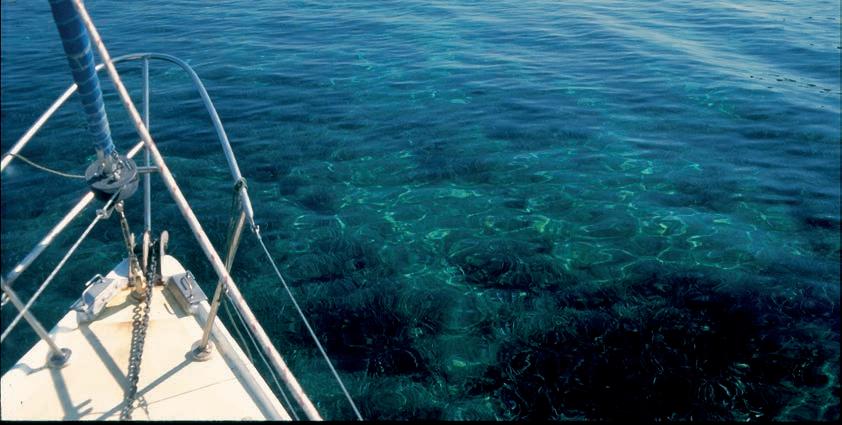
you knew where it was in the first place. On the passage chart there is at least a black dot with ‘Minerva Reef’ next to it. l You will need some sort of back-up if your plotter or smartphone or tablet expires for some reason. Crossing the Atlantic from west to east our brand-new plotter died and despite trying everything it was as dead as a dead thing. Fortunately, we had a handheld GPS with a 12 volt lead that Lu positioned above the hatch in an old yoghurt pot with the front cut out so that we could see it from the helm. We keep a three hour log anyway so the lat and long were marked on a chart and away we went. The company gave me a new plotter in Gibraltar which is fine but isn’t going to happen mid-Atlantic. l Vector charts are digitised versions of charts so they are seamless as opposed to raster charts which are scanned copies of the chart. Often you will not see dangers to navigation like reefs or islets unless you zoom in on a vector chart. Always plan longer passages on a paper chart. Chart plotters and charts on other electronic devices will not show rocks, reefs and even small islands until you get down to around 1:150,000 or even 1:100,000.
Polarised plastic is known as a dichromic material and it transmits light only in one plane, typically the vertical. By cutting out the horizontal plane, polarised sunglasses effectively remove one plane of the reflected light on the surface of the sea; this allows us to see transmitted light bouncing off shallow areas such as reefs and sandy bottoms. These are the light blue, green and turquoise colours that identify underwater obstacles. The value of polarised lenses in detecting just where a reef is and where the sandy patch is to drop anchor should not be underestimated, and normal sunglasses are not good enough. Here are some general rules for wearers of polarised sunglasses.
l Deep blue: 15m plus
lTurquoise: 10m
l Green: 5m
l Brown: To identify marine species

Do you know the Ionian well? Perhaps not as well as you think. Tom Fletcher shares his local neighbourhood highlights
’ve sailed the area close to Sail Ionian’s base more often than anywhere else. Located to the east of Lefkada, and to the north of Meganisi, it’s known as the Inland Sea. I think it’s one of the most beautiful places in the world, and probably the best sailing area in the world too! Many sailors dismiss it once they have been to Meganisi a few times, and head straight south to Kefalonia or Ithaca. To me, that’s a cardinal sin.
The Inland Sea is exactly that: bordered by land on all sides, it could almost be a lake within the South Ionian. Indeed, some mornings the deep clear water is so calm it looks like a mirror. The mountains of the mainland frame the view out from Lefkada and turn a stunning orange at sunset. Nestled here are the Prince’s Islands. The largest of this group is Meganisi, followed by Skorpios, Skorpidi, Sparti, Madouri, then tiny Cheloni and Tsokari. It’s a perfect small, safe cruising area, and at Sail Ionian we often recommend that newly qualified
charterers stay here for a few days while they gain confidence. It’s also the main area we visit on day charters, or fun days out on a RIB. The bulk of the area sits within Lefkada’s wind shadow and has a reputation for unexciting sailing. However, that’s simply not true. While the area close to Lefkada can be sheltered, there are other parts of the Inland Sea that regularly see winds of 15-20kts. For example, the wind blows down the channel over the canal in between Lefkada and the mainland every afternoon
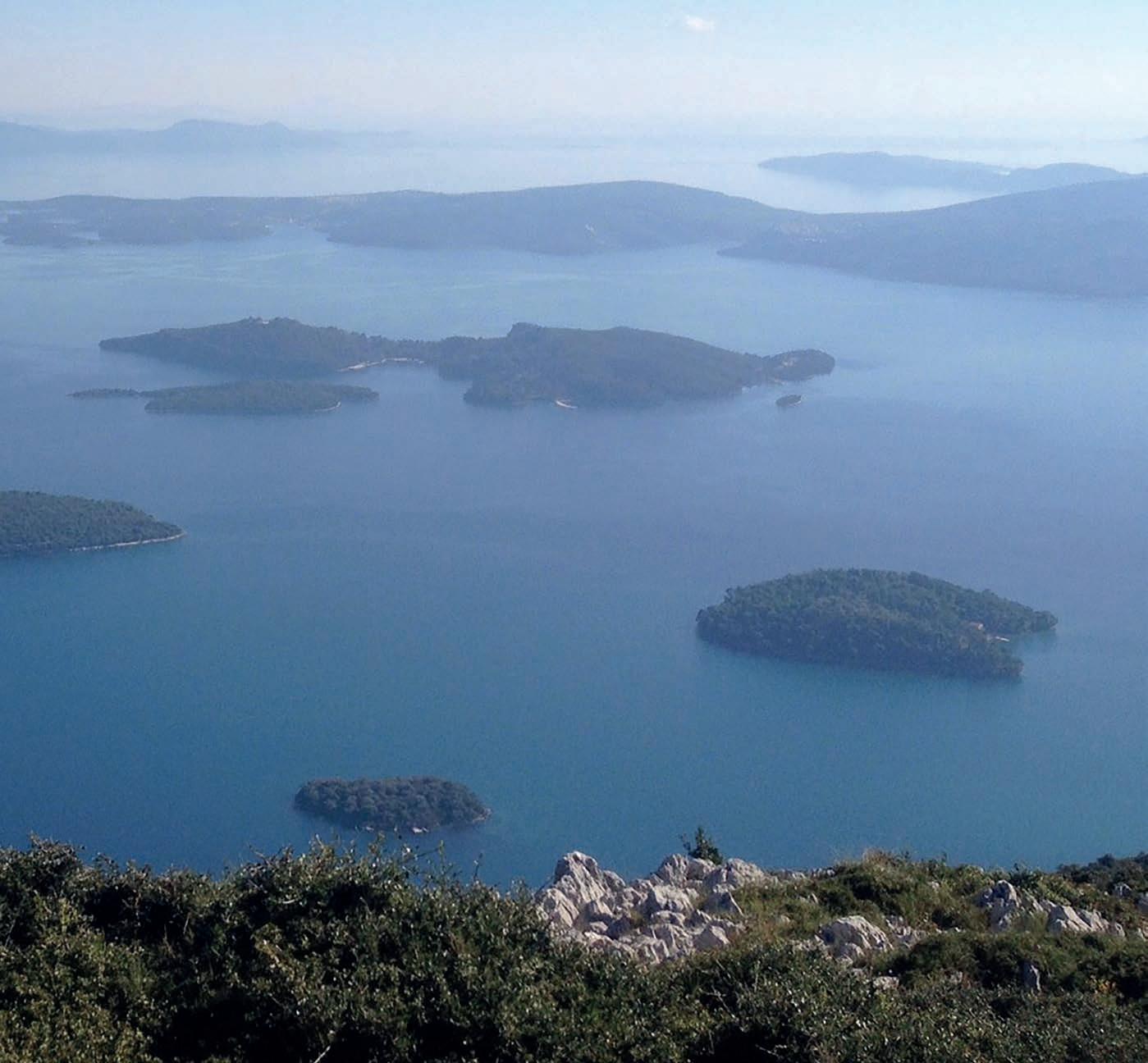
in the summer like clockwork. Often when we’re teaching, I will head up here to practice points of sail, reefing and MOBs.
Sailors do have to beware of the Heiromiti shoal though. This is the most dangerous area in the southern Ionian and for some reason remains unmarked. To the north of Meganisi and southeast of Skorpios, one area of the shoal is just under the surface and yachts occasionally hit it. I often wonder why the Greek authorities do not put an isolated danger marker buoy on it. An area just to the east
of the shoal is around 4 meters deep... on a calm day we use it to teach three-point fixes for exciting navigation practice!
The Inland Sea is generally quieter mid-week in the summer. With a lot of charter boats based on Lefkada and in Preveza, most will visit Meganisi when charters start at the weekend, or when returning to base on their last night. If you can visit in the middle of the week, you’ll find a lot of yachts are in the south leaving quieter harbours
and anchorages behind. Beware of southerly forecasts though: harbours like Vathi on Meganisi have a deservedly good reputation as a safe haven, particularly in stormy south winds, and can get very busy. There are so many bays, anchorages and interesting sites to visit around the Inland Sea. Charters who hurry south to the larger islands miss out on a wonderful area with a lot to offer. Next time you’re in the Ionian, consider spending a little more time here, and maybe visit some of my favourite spots.

From Kaisari Beach in the north, to Elia Beach in the south, the stretch of coastline running south of Palairos has numerous small beaches where you can get away from it all in the summer. The string of villas south of Vounaki soon runs out, and few people bother continuing down the coast road towards Mytikas. After a mile or so, you often don’t see anyone at all. Even if you do, there are enough coves and small beaches to find one to yourself and drop the hook. It is, however, all relatively exposed down the coast, so it’s not great on a windy day. While Mytikas harbour is nothing to write home about, Ouzeri O Pharos is a lovely taverna for lunch if you’re in this area. The town beach also stretches for miles to the east, with good depths for anchoring, few charter yachts, and beautiful views across to Kalamos.
Elia is one of the lesser known bays on the northeast of Meganisi. Compared with Atheni and the others to the north, it is a much quieter option, but it also offers less shelter if the wind picks up, and it does not have a taverna. Depths are fine for anchoring, generally under 10m even in the middle, and there is a small pebbly beach. Long lining against the northern shore is usually my preferred option. Away from the crowds, this is a nice place to while away an afternoon dozing
and swimming. A 10-minute walk up the hill from the beach takes you to Katomeri, Meganisi’s quiet main town. There are a couple of traditional simple tavernas, and one of the hotels is open for breakfast.
It’s fun to explore some of the small islands in the area. Sparti lies just to the north of Skorpios and Skorpidi and is uninhabited. The story goes that Aristotle Onassis bought Sparti at the same time as Skorpios. After finishing his dream home on Skorpios, he started construction of a house on Sparti for his son,
BELOW
A good, working breeze makes the sailing
Alexander. However, tragedy struck, and the 25 year old Alexander died piloting a small plane in 1973. Heartbroken, Onassis stopped building on Sparti and never stepped foot on the island again. If you anchor off, you can take the tender into the derelict harbour on the east coast and walk around the island. It’s a quiet and melancholic place with the skeleton of Alexander’s house standing unfinished and overgrown.
To the south of the village with the same name, a cluster of small islands in the northeast of the area host my favourite anchorage. The islets are difficult to navigate with few soundings, following underwater ridges that shadow the coast running from southwest to northeast. If you shadow the coast inside the islands, you should be fine. Enter the anchorage from the south; it is just inside the largest island closest to the mainland coast. It is marked on Google maps as “Le Rocher de l’Amour”, ie The Rock of Love! Anchor in the channel in just under 10m of water and there is a small bay on the mainland to snorkel and explore. The local dive school train here and have put an upright scooter on the seabed. See if you can find it!

Just south of the entrance into the Lefkas canal is a little harbour where sailors are not welcome. The fishermen of Lygia moor their boats alongside and block off the quayside to visitors. It’s not a particularly pretty place anyway, close to the main road around the island. A couple of hundred meters north of the harbour though, the road veers inland, leaving a pleasant pedestrian promenade, and a sheltered anchorage. It’s a very convenient overnight stop if you’re heading north through the canal early the next morning and don’t want to be in busy Lefkas Town. There is also not one, but two excellent tavernas along the sea front. In the hills behind Lygia, a recent archaeological discovery was made: Lefkada’s own classical Greek theatre!




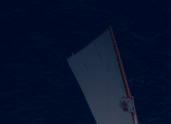



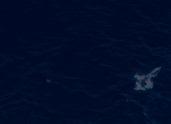










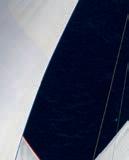



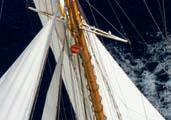










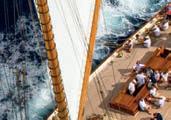

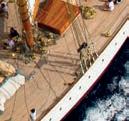










Classic Yachts 2024 is the must-read publication for admirers of the most stunning boats afloat. We tell the incredible stories behind some of the world’s finest yachts –tales of abandonment and resurrection, with passion and ancient skills running through them all like a single vein. We delve deep into history and share the secrets of traditional shipwrights today as they recreate the magic of yesteryear. It will be a voyage like no other, and we look forward to having you on board.
Order your copy for just £9.99 (UK) $14.99 (USA) This fabulous 132-page special edition will be delivered direct to your door*
Order online www.classicboat.co.uk/ClassicYachts2024

Roshanak is a sparkling Southerly 32. Offering the perfect combination of capable sailing performance, first class accommodation, and the ability to explore shallow waters, while also being capable of grounding with her Southerly drop keel. In her original ownership, Roshanak is gleaming. Updates include a Furlerboom in-boom furling system, providing smooth and efficient sail handling, new standing rigging, upgraded navigation gear, and bow and stern thrusters for precise manoeuvring. Below, she has an excellent layout with a beautiful interior that is also very practical. She’s ideal for coastal exploration and offshore cruising, and is ready for new adventures.
Year: 2009
LOA: 9.97m (32’9”)
Beam: 3.60m (11’10”)
Draft: 0.70m- 2.12m ( 2’4”- 6’11”)
Displacement: 7,192kg
Hull Construction: Glassfibre
Keel: Lifting
Engine: 1 x Yanmar 3YM30, 29hp
Designer: Stephen Jones
Accommodation: 6 berths in 3 cabins
Location: Lymington, Hampshire
Contact: berthoninternational.com
craftinsure quote: From £559

This is a rare opportunity to acquire a stunning example of the Broadblue 346 cruising catamaran. Launched in 2021, Kashmir has cruised the central south coast of England. Designed by Dazcat Design, well known for impressively fast Catamarans, this cruising boat has fine entry but high volume hulls which gives plenty of room, and raises the central accommodation to avoid excessive slamming. Her length is not excessive and does not fall prey to longer berthing charges, and her beam has been restrained to allow her, for example, to pass through the French canals as a possible route to the sun and the Mediterranean. Also, she has been designed to allow the mast to be stowed diagonally across the boat without it protruding further than the length of the boat. To make sailing as simple and stress free as possible, her mast is set further aft to allow sail handling to be conducted safely from the cockpit. The broker says this configuration reduces pitching and allows for the use of easy handling roller furling headsails, which is easily controlled and eased but also draws the boat downwind in gusts to avoid any pressure on the helm. If you’re after a cruising catamaran in this size bracket, this model is an excellent option to consider.
2021
LOA: 10.20m ( 33.46’)
Beam: 4.85m (15.91’)
Draft: 1.01m (3.31’)
Displacement: 4,800kg
Hull Construction: Glassfibre
Keel: Stub
Engine: 2 x 20hp 3 cylinder BETA inboard diesels
Designer: Dazcat Design
Accommodation: 5 berths in 3 cabins
Location: Hamble, Hampshire
Contact: michaelschmidt.co.uk
craftinsure quote: From £1,395
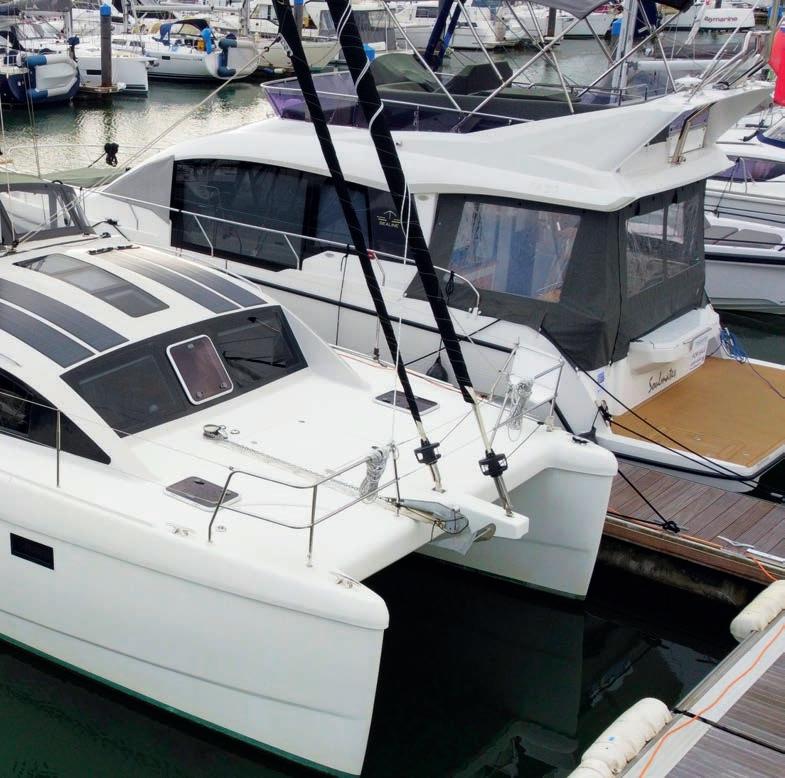

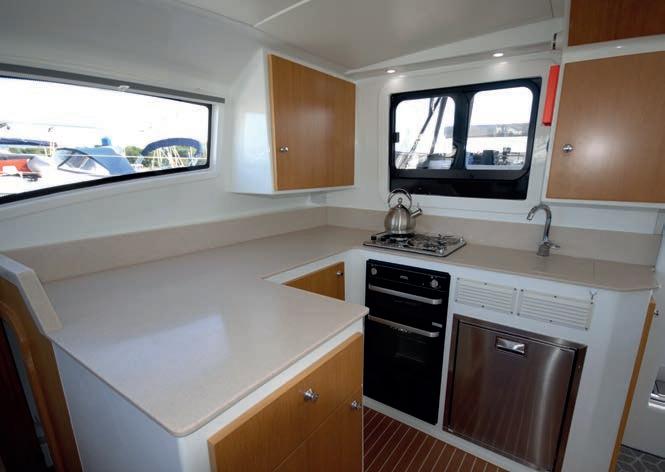
Tax£75,000 paid
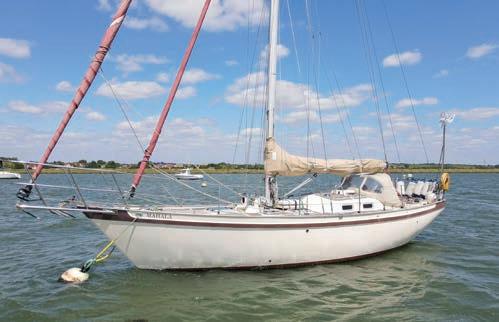
According to the brokers, Clarke & Carter, the Tradewind 35 is one of John Rock’s superb designs that was approved for the 2018 Golden Globe Race. It is highly regarded as a safe and comfortable offshore cruiser with a superb turn of speed. Mahala is beautifully maintained and in excellent condition. She has a wonderful teak interior with teak and holly strip floor. The hull was moulded in 1997 by Blondecell and first launched in 2004 after a full professional fitout by Priors Boatyard in Burnham-on-Crouch. Offering four berths in a traditional style layout, she has a Taylors paraffin heater in the saloon. Her well-equipped galley has a Nelson cooker, hot and cold pressurised water, and 12v fridge. The cutter rig gives sail choice options, and the standing rigging was replaced in 2023. With an extensive suite of electronics, the broker says she is ready to take her next owner wherever they want to go!
Year: 2004
LOA: 10.67m (35’)
Beam: 3.17m (10.42’)
Draft: 1.68m (5.51’)
Displacement: 8,819kg
Hull Construction: Glassfibre
Keel: Long
Engine: 1 x Yanmar 3GM 30F diesel
Designer: John Rock
Accommodation: 4 berths in 2 cabins
Location: Burnham-on-Crouch, Essex
Contact: clarkeandcarter.co.uk
craftinsure quote: From £300
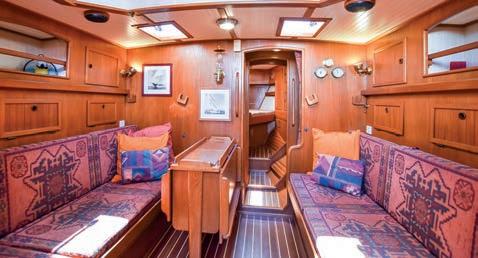
Insure your yacht with Craftinsure - boat insurance at the touch of a button.
Get a quote online or call today: craftinsure.com; 0345 2607 888

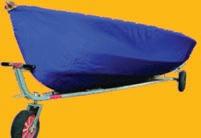




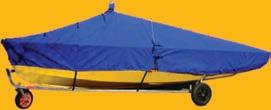
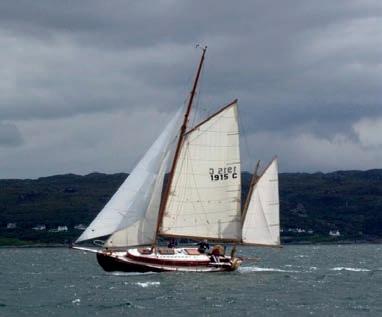



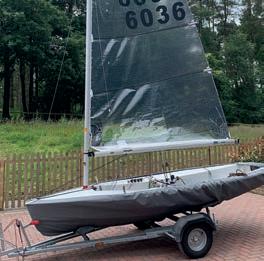
SOLO 6036 - AS NEW. USED 4 TIMES. IMMACULATE P&B FITOUT Brand new condition. Winder Mk2. Top spec and fitted by P&B. All harken, carbon and new sail. New combi trailer/trolly, under and over covers. Boat only on water 4 times. Stored garage. As new boat for much less than new. £8250 Tel 07494 958799 / (MARKET DRAYTON)
MARAUDER (MIRROR 14). 14 foot racing dinghy with spinnaker & trapeze. With launching trolley and boom-up cover. £100 Tel 07913 604 574 / (STAINES)
KELT 707 - LIFT (SWING) KEEL SLOOP
Lovely boat. 5 berths in two cabins. Inboard diesel engine with folding prop. Main, genoa, self-tacking jib, spinnaker. Yard trailer. Much more. £9400 Tel 01263 741172 / (MORSTON)
2019 FOUNTAINE PAJOT SABA 50
2019 Fountaine Pajot Saba 50 sailing boat, For more details contact us at WhatsApp No: (+44)742 428 2852 . £212000 Tel 07424 282852 / (DOVER)
Cedar Strip Plank hull sheathed in GRP. Teak decks over plywood base. Built 1993 by Clyde Classics. 34’x 10’x 5’8”. Six berths. 20hp Beta engine with only 60 hours on it. 8’ Avon dinghy. Priced for quick sale. £10000 Tel 07826 798186 / (ISLE OF SKYE)

FLYING 15. Ff 2990 Amos composite. Professionally epoxied decks. A competitive silver fleet boat in very good condition with P&B sails, galvanised road trailer, lots of spares. £900 Tel 01539 821346 / 07713 280972 (KENDAL)
2017 JBOATS J70 RACER AND CRUISER SAILBOAT. 2017 JBoats J70 Racer and Cruiser Sailboat, For more details contact us at WhatsApp No: (+44)742 428 2852. £12000 Tel 07424 282852 / (DOVER)
2013 BAJA 405 PERFORMANCE. 2013 Baja 405 Performance IN PRISTINE CONDITION & LOADED WITH FULL OPTIONS, For more details contact us at WhatsApp No: (+44)742 428 2852 £25000 Tel 07424 282852 / (DOVER)
2014 LARSON SENZA 206. 2014 Larson Senza 206 Bowrider Volvo 5.0 Gxi Trailer For more details contact us at WhatsApp No: (+44)742 428 2852 . £5000 Tel 07424 282852 / (DOVER)
VX ONE 309 - 2019 BUILD. Incredibly light use, correspondingly very good condition. 2 sets of North Sails (1 set only used for 1 weekend), combi trailer & covers. Dry stored since new. 1st VX Inlands 2019 (last regatta competed in). TRADE. £23000 Tel 07738 984826 / (LYMINGTON)
INTERNATIONAL 14 CLASSIC - K881. International 14 (1965) Buccaneer Souter Casson design. Winner Prince of Wales 1966 1978. With Upper & under cover. Sails, Spinnakers, 2 Masts, Single trapeze. Very Good condition. Combi Trailer (new tyres) Launch trolley Various other sails Various Chandlery Buccaneer 881 is 14 in the painting trophy awarded to Classic 14s. £2500 Tel 07968 903824 / (BRAMFIELD)
RS QUBA SAILING DINGHY (Similar to a Pico.) Good condition, light blue. Cover. Combi trailer available. £999 Tel 07974 918303 / (BURSLEDON)
JAGUAR 21 AND CRADLE. 1985 built fin keel Jaguar 21 blue and white stripes, mainsail good condition, genoa, jib, whisker pole, spinnaker and spinnaker pole. Mariner 5hp outboard four years old, two fire extinguishers and small cooker. Ideal starter boat. £2750 Tel 07900 315186 / 01394 387394 (IPSWICH)
J24 IN EDINBURGH. A boat that has been unsailed for several years in the FCYC yard. Some work is needed to get the boat sailing, but fittings are generally present. 2x dacron main and 1x (well used) composite genoa included. Photos available on request. £50 Tel 07500 355431 / (EDINBURGH)
COLVIC WATSON 29 MOTOR YACHT
Recently reconditioned. 5 berths. BMC 48 hp Marine Diesel Engine. New carpets, cushions, headlinings. New comms radio/GPS. New Genoa. Constructed 1979 with only 2 owners from new. Twin keels. £19950 Tel 01494 673802 / 07925 287279 (POOLE)
24 FT CRUISER QUARTER TONNER
Fully Restored (thousands spent) and going fast. 4 berth, fin-keel, open-plan cruiser. Good family boat, self draining cockpit. Re-masted, re-rigged, re-keeled, new rudder. Laminate sails little used. 3.5hp outboard. Full survey - yard trolley available. Must be seen. £4500 Tel 07765 900259 / (CARDIFF)
J24 (SAIL NO. 4239). Successfully raced for many years Mojo has had 3 gentle years in Dartmouth. 1 of 4 Yugoslavian made (1993). Mast/rigging in good order. Harken fittings. Lightly used main. Plenty of life in jib, genoa, spinnaker and rigging. RM Trailer. £5000 Tel 07585 996603 / (DARTMOUTH)
ZODIAC 8FT. INFLATABLE (CLR240). Excellent condition (stored indoors & not used last 10 years). Includes electric & foot pump, oars & bag. Ready for outboard (not included). Original paperwork from 2005. £200 Tel 07762 197885 / (BATH)
2018 FRAUSCHER VENICE 707
ELECTRIC BOAT. 2018 Frauscher Venice 707 Electric boat, For more details contact us at WhatsApp No: (+44)742 428 2852. £19000 Tel 07424 282852 / (DOVER)
2017 MONTEREY 204FS. 2017 Monterey 204FS ONLY 62 HOURS!!
Monterey Anniversary EditionVolvo 5.0L V8, EFI, 270HP, Turn Key, Lake Ready. This boat is in like-new condition. For more details contact us at WhatsApp No: (+44)742 428 2852. £6200 Tel 07424 282852 / (DOVER)
2019 SEA-DOO CHALLENGER 210 SE 2019 Sea-Doo Challenger 210 SE, 64 hours twin engine. Serviced the boat every 20 hours and it has been very well maintained. For more details contact us at WhatsApp No: (+44)742
428 2852. £5500 Tel 07424 282852 / (DOVER)
2013 FOUNTAINE PAJOT MAHE 36 EVOLUTION CATAMARAN. Version
3 cabins / 1 bathroom, Volvo Penta engine 2 x D1-30. For more details contact us by Whatsapp: (+44) 742 428 2852. £85000 Tel 07424 282852 / (DOVER)
RAYMARINE MICRONET RACE
MASTER. Used once on Flying Fi een but now selling boat. As new, Serial number 0910009. Collection or post at cost. Includes mounting plate , instructions, disc and box. Pis in request. £425 Tel 07415 255100 / (LICHFIELD )

RIGID BOAT WINDSCREEN - FOR DEHLER 41DS OR OTHER. Brand new acrylic boat windscreen. This is a high quality item made from thick acrylic, originally for a Dehler 41DS boat, but suitable for other boats also £590 Tel 07714 259616 / (OBAN)
1 X SONIHULL DUO - ULSTRASONIC BOAT ANTIFOULING SYSTEM. The premier electronic antifouling system for all boats. Eliminates most marine growth and regular li outs. 1 unit with 2 transducers for sale, for boats up to 15m. This system is boxed and unused. 2 units with 4 transducers for sale for £3000. For boats up to 21m. £1500 Tel 07776 185099 / 02086740436 (LONDON)


• For all wheel sizes and sprayhood grab rails • Leather Spinnaker pole covers • Handy Pull Tags to open Shackles • Suppliers of Marine Leathers to Sailmakers & Riggers Clyde Marine Leather www.clydemarineleather.com T. 0141 881 4981
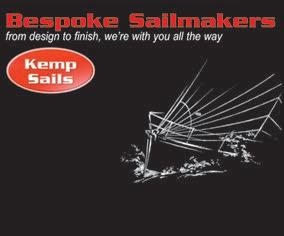
TRAILER DOUBLE
UP WITH WINCH. Design is for 2 x K1 keel boats but suitable for many dinghy designs .with li ing winch. New wheels Load capacity 400kg. £1200 Tel 07971 404617 / (TAUNTON )
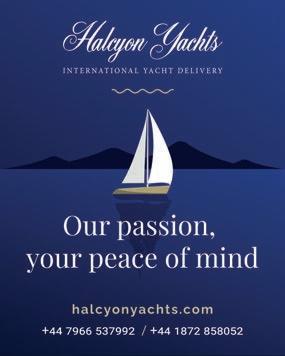
You’d be forgiven for thinking that the Pacific Ocean is empty. We grow up with maps and globes that show a huge expanse of big, blue space with not a lot else within it. Perhaps it is in part this unknown, seemingly endless sea, that continues to fascinate and pull sailors, young and old, inexplicably towards it.
When cruisers plan for their ‘Pacific Crossing’ from somewhere along the shorelines of the Americas, they also tend to think just of that first leap; the 2,700 to 3,600nm push to get them from the coastline to French Polynesia. Though they strategise and provision for eight or nine months’ worth of travel, sketching out intended routes and stops, it is the tropical islands and exotic cultures that fire the imagination of each year’s fleet of puddle-jumpers. Not miles and miles of non-stop sea; nor weeks of sailing from tiny isolated dot to yet another tiny isolated dot. Because, though liberally sprinkled with island clusters and even the odd floating cities like Papeete and Nouméa, the Pacific Ocean remains a lot more ocean than anything else. Yes, there are other ways of getting to the islands, but there are still many not served by even the teeniest of sea-planes. This part of the world is still ruled by sailboats, where hundreds of new yachts can sail and explore each year without any portion of it feeling crowded, and where there are literally thousands of uninhabited sandy paradises to discover.
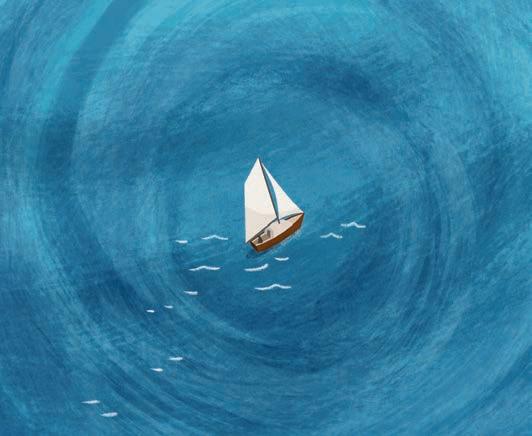
‘...The sea is really in command here, the myriad islands merely punctuating it momentarily’
heading to the less travelled Kiribati or Marshall Islands versus the more plied passages toward Tonga and Fiji. It can be a comfort to have a sense of company for these trips; it somehow makes the mammoth stretches of blue less daunting.
More overwhelming than the sheer vastness is the scale of options on offer; to say that yachts cruising here are spoilt for choice is a massive understatement. French Polynesia alone combines five separate archipelagos, with nearly 150 islands in total; a mind-blowing number of anchorages and reef passes to research and navigate through, ranging from steep, emeraldclad mountains, to tiny flat atolls, with nothing higher than a palm tree. The choices are so numerous that it’s understandable that many crew choose never to leave but circle these island groups indefinitely. I grew up mistakenly thinking of Fiji as a lone, tropical landmass, somewhere distant and mysterious. It was only when researching our own South Pacific travels that I corrected myself as I suddenly had to pick our route through 300 Fijian islands.
Boats travelling along the trade wind routes from the Americas to New Zealand and Australia tend to be kept in perpetual ‘go’ mode. After recovering from the first big voyage, washing the salt from your deck and hair, the realisation sinks in that there are still thousands of miles between you and the considerably larger, cyclone-free havens of the far western Pacific. To get from one island group to another will typically involve another week at sea, covering a further 800 miles or so. Throw into the mix the inescapable uncertainties of a life dominated by the weather, and it’s understandable that you’d want your vessel to be ready to move at a moment’s notice.
The sea is really in command here, the myriad islands merely punctuating it momentarily. Boats will buddy-up and travel in convoy for particular stretches and then split apart; the ones that want to take several seasons over this ocean, contrasted with those planning for just one, yachts

With these weeks at sea marking the transition from island group to island group, country to country, you experience several significant land-sighting moments. After days of dutifully noting your position on paper charts, tiny dots amid more tiny dots, your eyes ceaselessly scan the water for the merest glimpse of rock or elevation. And those first sights vary so greatly, from tiny smears of sand only just visible above the swell to towering volcanic forms that suddenly peek over the edge of the horizon.
And then, like some feverish, dizzying dream, you wind up somewhere more everyday and comprehendible. The large infrastructures of Australian cities and even the far less populated New Zealand are much more like home to those of us from the UK, US or Europe. Things no longer run on ‘island time’, you’re tied again to a marina dock, no longer dipping your toes in sand or being offered fruit from someone’s garden, conveying your gratitude in rusty schoolgirl French. A glance back at any globe or map leaves you rubbing your eyes as if, just maybe, you imagined all those rich, island worlds that are again depicted as mere pinpricks, swallowed up by the mass of blue.

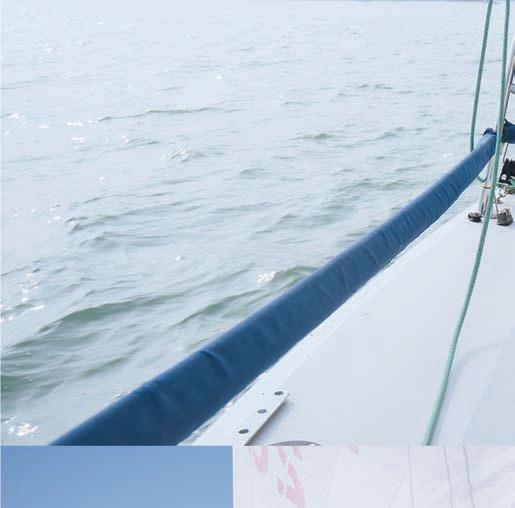
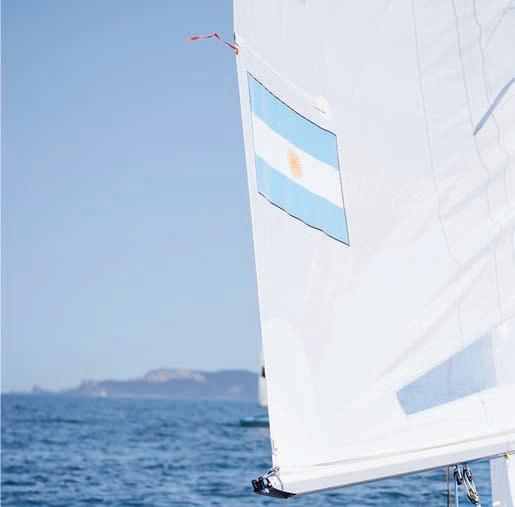

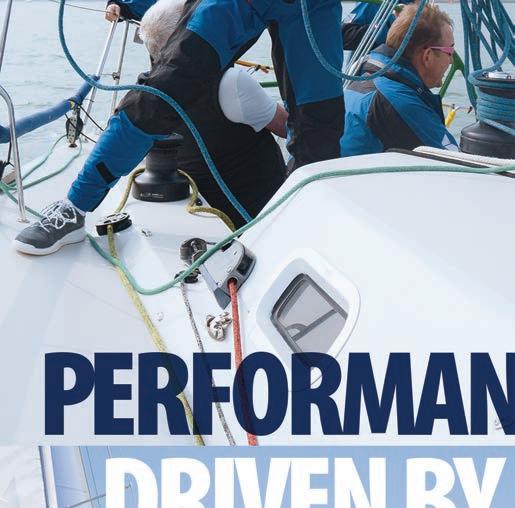


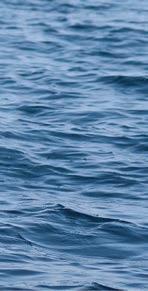
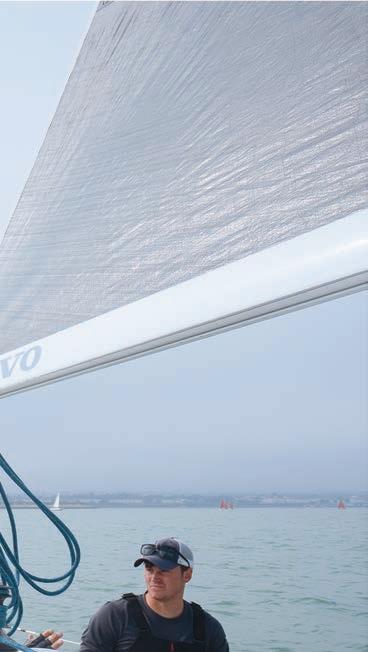

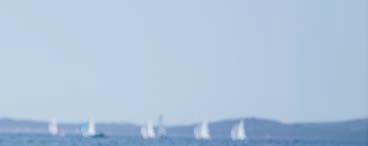
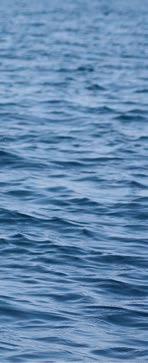



Cast off, your way – with more choice of Caribbean sailing destinations than anyone else.
Choose from well-loved sailing meccas like the Virgin Islands, St. Martin or Antigua. Or sail less visited islands like Guadeloupe, Belize and Martinique. Whichever you choose you’ll discover the Caribbean as few others have, from the deck of your yacht.
Reconnect with what matters most on your dream Bareboat or Skippered sailing holiday with family and friends. Or choose a Cabin cruise for a social island hopping adventure.
With our 40 world-class destinations and 800+ yachts from a wide variety of premium brands, you won’t have to compromise.




